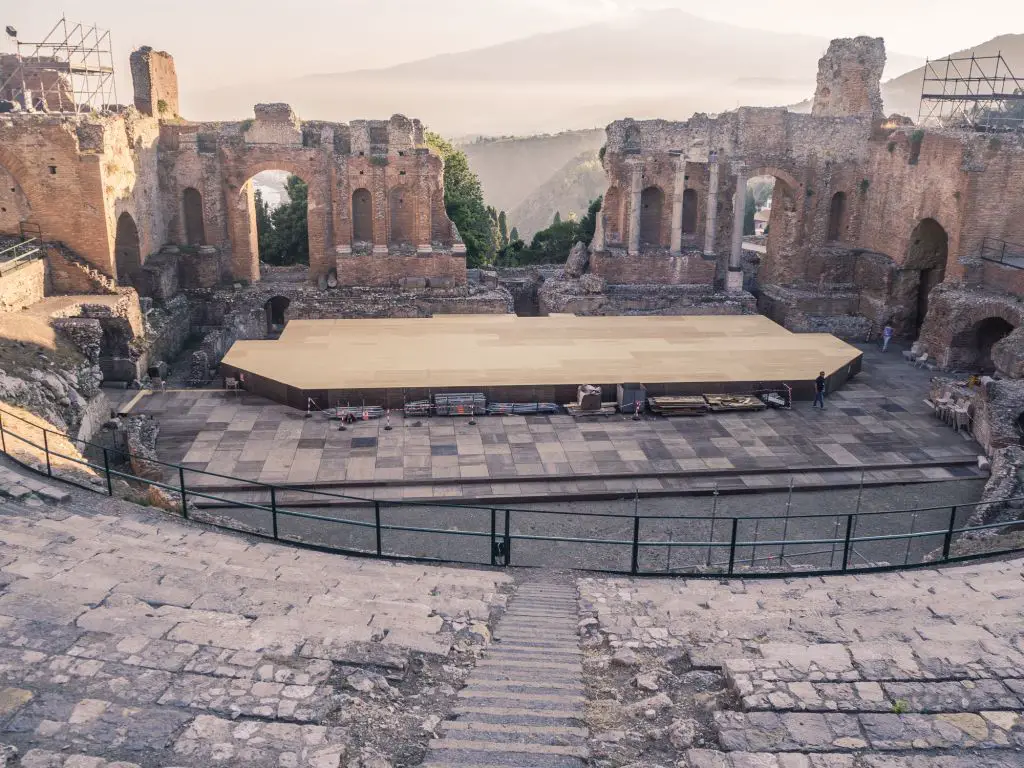
Sicily is the largest island in the Mediterranean, even larger than Greece’s Crete which felt massive to me. It’s one of Italy’s true gems home to countless amazing beaches, volcanoes, mountains, historical villages, and as you’d expect from anywhere in Italy, delicious food.
I’d like to think I’ve traveled to a good amount of Italy at this point, and the divide between the north of Italy and the south is so stark but so amazing to experience. More similar to Puglia, which I road tripped a few months back, I really love the warm, and rustic vibe of traveling in the south. I spent over a week driving around Sicily and absolutely loved it.
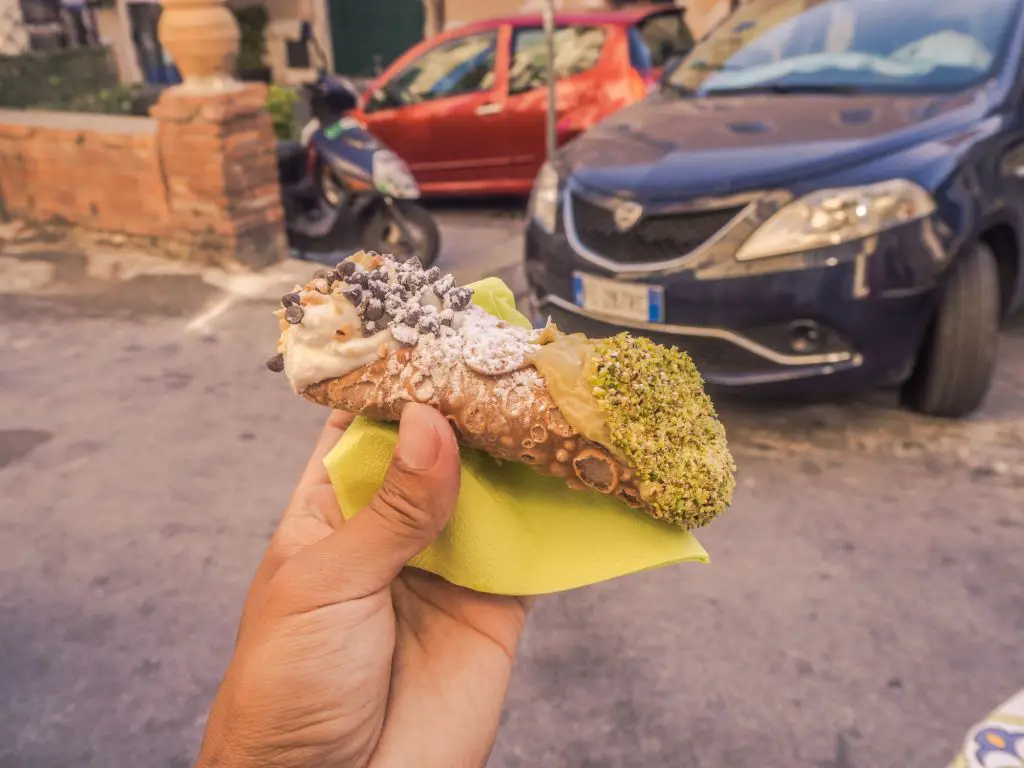
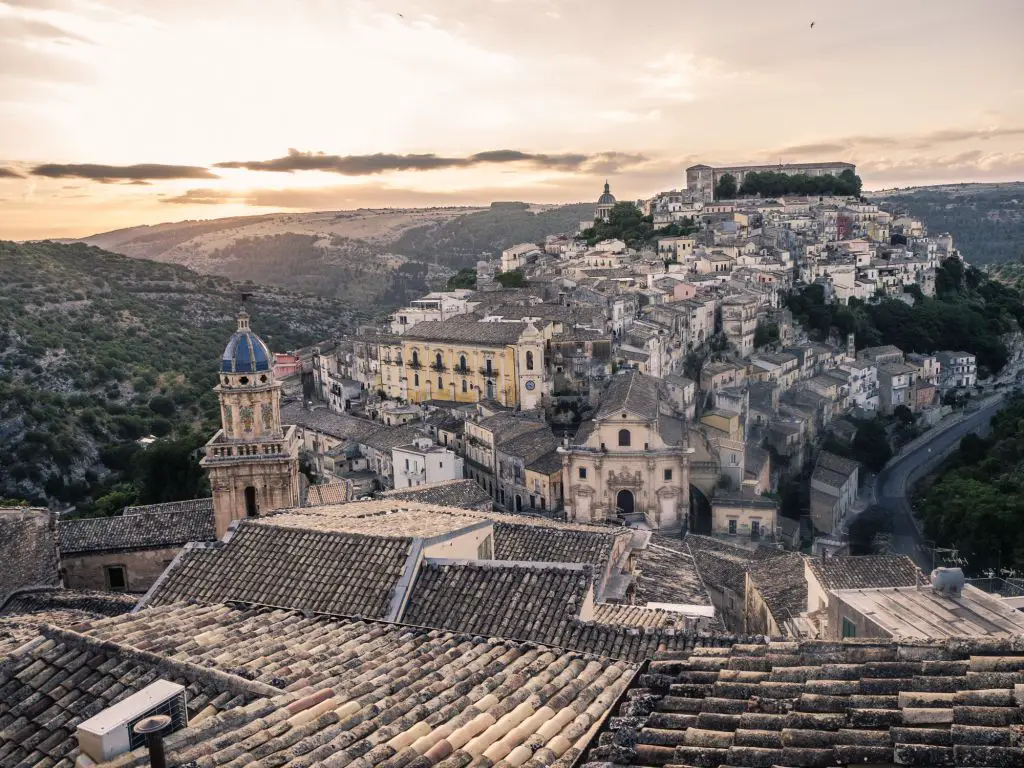
The island as mentioned is massive. It’s 275km from west to east and 150km from north to south at its longest points. A weekend in Sicily means you will fly into either Palermo or Catania and explore those towns and maybe a nearby town. You need a proper amount of time to do Sicily. Even with eight days, it was not enough to see the entire island. I did as much as I could while still stopping and enjoying the places I wanted to focus on. This is how I planned the trip and hopefully it will help you plan yours!
Where I went in Sicily, Italy
I had eight full days total to do Sicily. As mentioned before, the sheer size of the island as well as the just endless amount of amazing things to see makes 8 days not enough to see the island in its entirety. Of course, you could easily drive the entire outline of the outline in 8 days making minimal stops but what’s the point in that?
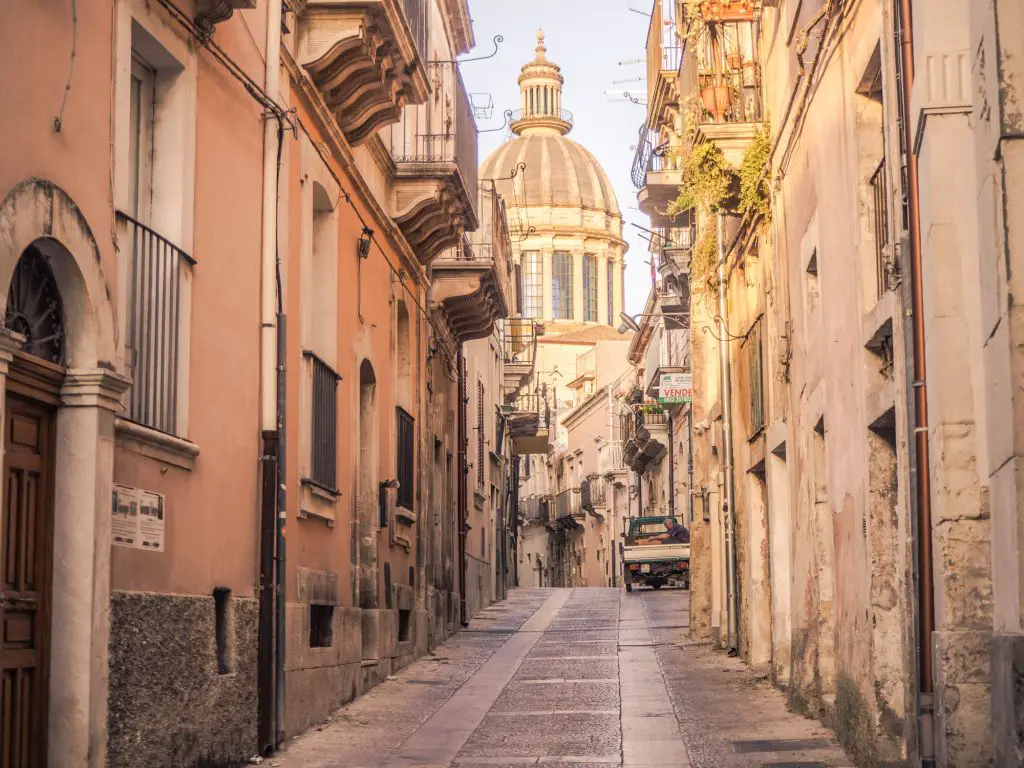
I visited Sicily in late June/early July 2020. Summers are always the peak season and normally I would not be an advocate for visiting during these months because it’s just too crazy. However, in 2020, during the Coronavirus pandemic, it was probably the best decision I could have made to visit Sicily.
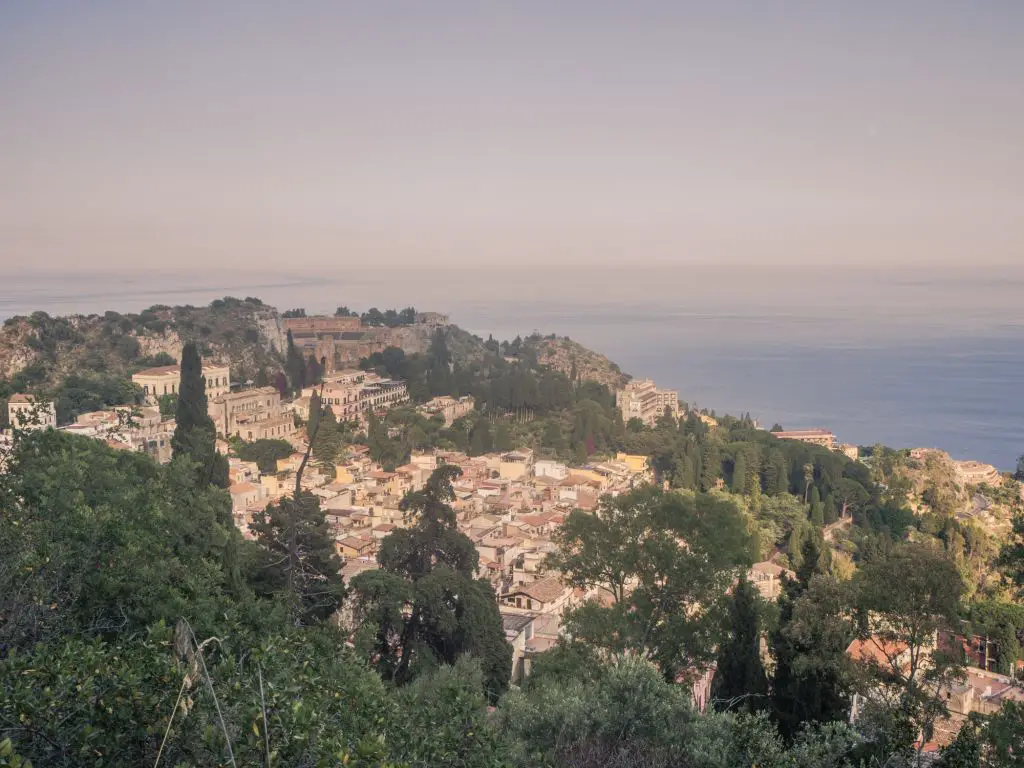
Italy and Sicily had really just opened up for tourism and I was one of the first tourists in Sicily. I was in Lake Como two weeks prior to this trip which was just incredible being able to see all the little villages without the swarms of tourists. Lake Como can be easily accessed by car for Swiss, German, French, and Austrian tourists but Sicily is really only accessible by air for the typical European tourists. This means even less tourists would be visiting the island because people’s appetites to fly are low.
I was right, in my entire week there, I saw only a handful of non-Italian tourists. It was pretty amazing to see places like Taormina with so few people walking the streets of the old town. Typically, in the summer months, our Airbnb host said we’d be shoulder to shoulder with other people. In 2020, I could do cartwheels if I wanted to.
In total, this itinerary is anyone that has about a week or so to dedicate to this itinerary. Of course this itinerary can be shortened or lengthened depending on your schedule. I visited the following areas on this itinerary
- Palermo
- Erice
- Cefalu
- Monreale
- Mount Etna
- Taormina
- Siracusa
- Ragusa
- Modica
If these places ring a bell and sound like the places you want to visit, this is the perfect itinerary for you!
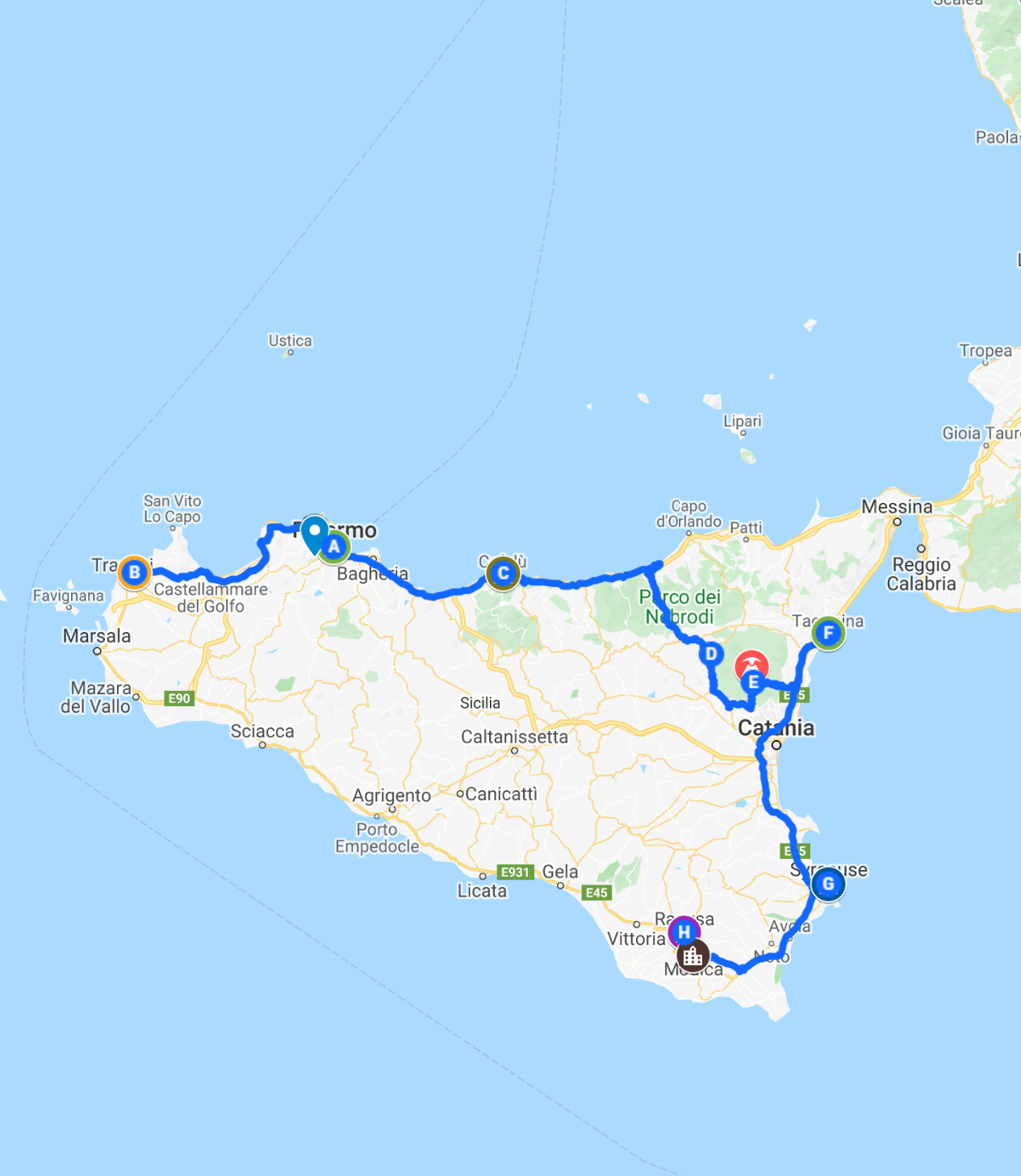
East or West Sicily?
If you don’t have at least 10 days (but preferably two weeks) to do Sicily, then you’ll want to choose between doing either the west and east coasts of the island.
It’s impossibly difficult to choose between the two so I will try to list the highlights of both areas.
East Sicily is the most traveled route in my opinion from Palermo to Catania. There is more historical sights and towns to see on this route. The west route that goes from Palermo to Catania but following the western and southern coastlines is filled with more beaches. It’s generally more “rustic” as well and can even be considered more “authentic” depending on who you ask.
If you do not have two weeks, you will not have enough time to visit both sides unless you speed through everything. There’s so much to see in Sicily! I didn’t even have time to visit the entire island and I want to come back to visit the Aeolian islands with its famous Stromboli volcano that just looks out of this world. Will have to make multiple visits back to this island!
Renting a car for Sicily
Sicily is the ultimate road trip destination in Italy. We took a flight from Frankfurt to Palermo so we rented our car from the Palermo airport and dropped it off at the Catania airport. Palermo and Catania are located on opposite sides of the island so this makes it easier to road trip half of the island without having to drive all the way back to your starting point when you drop off. As with most of southern Europe, the prices were incredibly cheap. Because I, like many other Americans, can’t drive stick shift, I had to opt for the automatic car which ended up being almost twice as much as the cheapest manual options.
I wanted to get a small Fiat or Smart car to live out the Italian road trip dream. However, the smallest automatic car they had was a huge Opel Astra station wagon. This was the complete opposite of what I had in mind!
Do you need a small car in Sicily?
I had read on numerous blogs that it is imperative to rent as small of a car as possible for Sicily. Having driven in other parts of Italy, I fully understand and support this. Driving through the narrow streets with anything bigger than a Mini would stress me out.
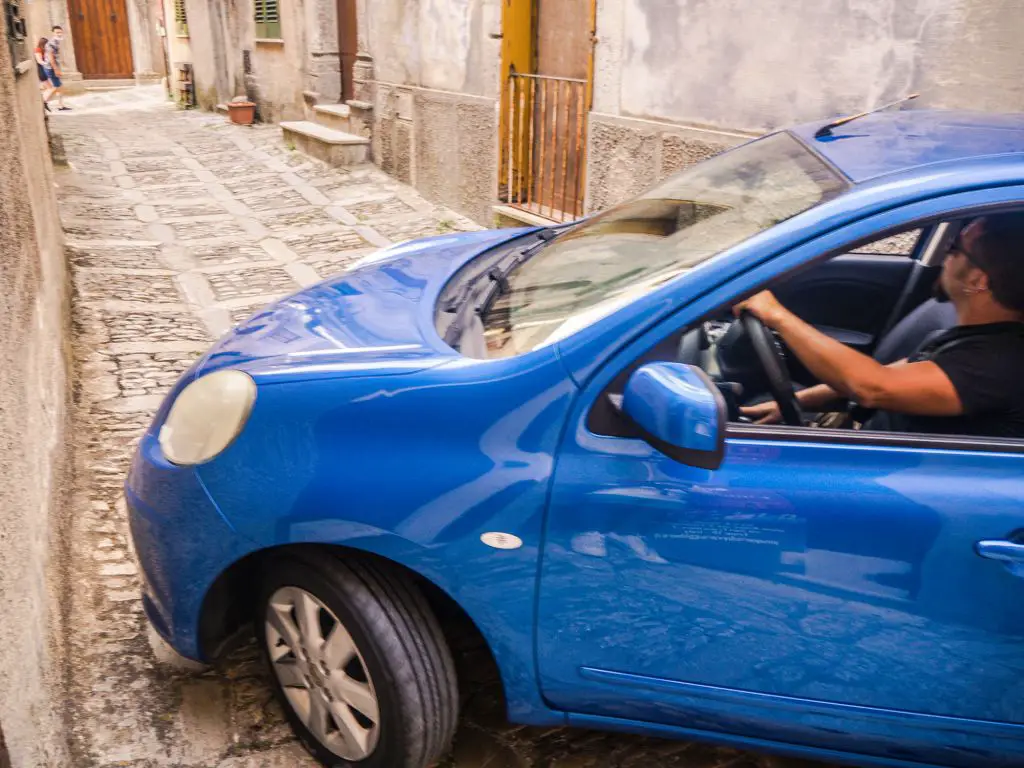
However, as we had no choice but to take the Opel Astra station wagon, we were venturing into the unknown. I was quite nervous to drive around Sicilian towns and get stuck in one of those alleyways.
However, it seems like my fears are unfounded. Yes of course it’s better to rent a small car but Sicily is totally doable if you have a larger car as well.
The trick is to NOT drive into the old town centers. If you’re not comfortable driving through confined spaces, simply find a parking garage and park your car there and walk the 5-10 minutes to the old town. Parking garages are everywhere and quite cheap. It’s a small price to pay for not dealing with the stress.
Do you need a car for Sicily?
If you want to really explore Sicily, a car is a must. The island is large and while there are buses that connect the towns, it’s not efficient especially if you are short on time. The cars are cheap so it’s totally worth it!
Driving in Sicily
Italians are not known to be the most orderly drivers and Sicily is probably at the top of that stereotype. Driving on the freeway is enjoyable especially with stunning views on offer but the cities are another story. Palermo in particular was bad. The driving there was probably among the worst I’ve experienced in the developed world.
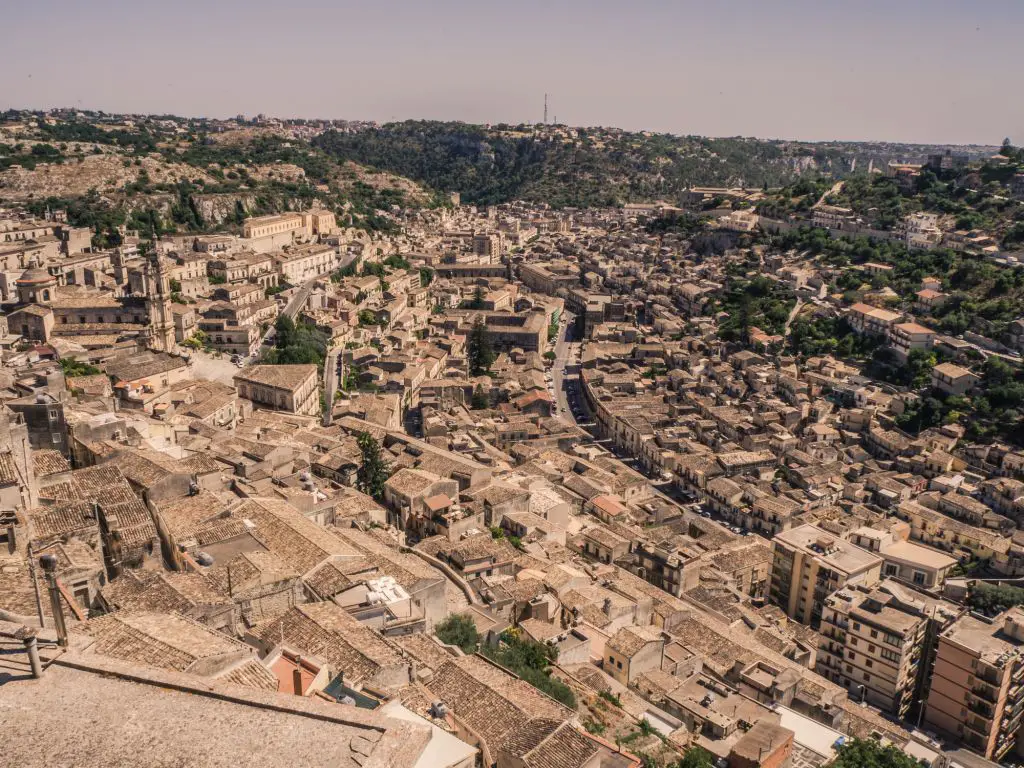
The roads have no lanes and drivers just seem to do go where they want without any order. Even with lane markers, drivers would just casually cruise in the middle before eventually deciding on a lane to drive in. I’d still recommend visiting Palermo but just prepare yourself mentally for that!
Full Itinerary
This itinerary starts in Palermo, Sicily’s biggest city. Again, we ended up driving along the Northeast coast between Palermo and Catania. We’ve also heard fantastic things about the other side but will have to save that for another trip.
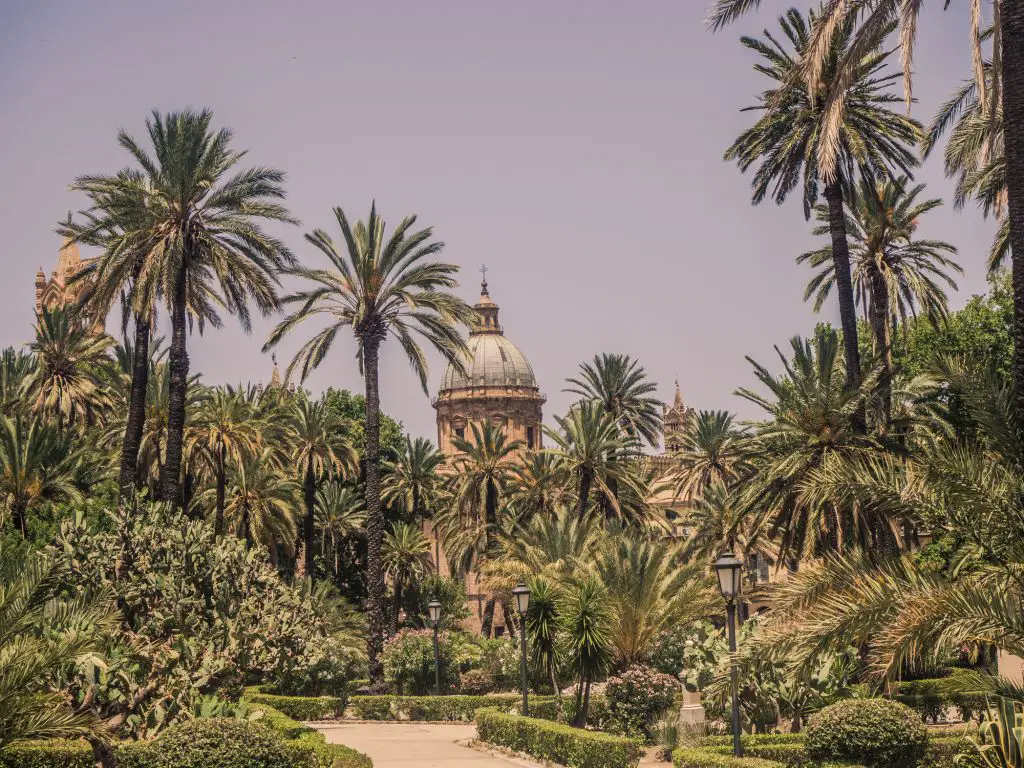
For Palermo, we actually drove west (unconventional) to the town of Erice which came highly recommended. We then backtracked through Palermo, and into Cefalu, one of the most beautiful coastal towns on offer.
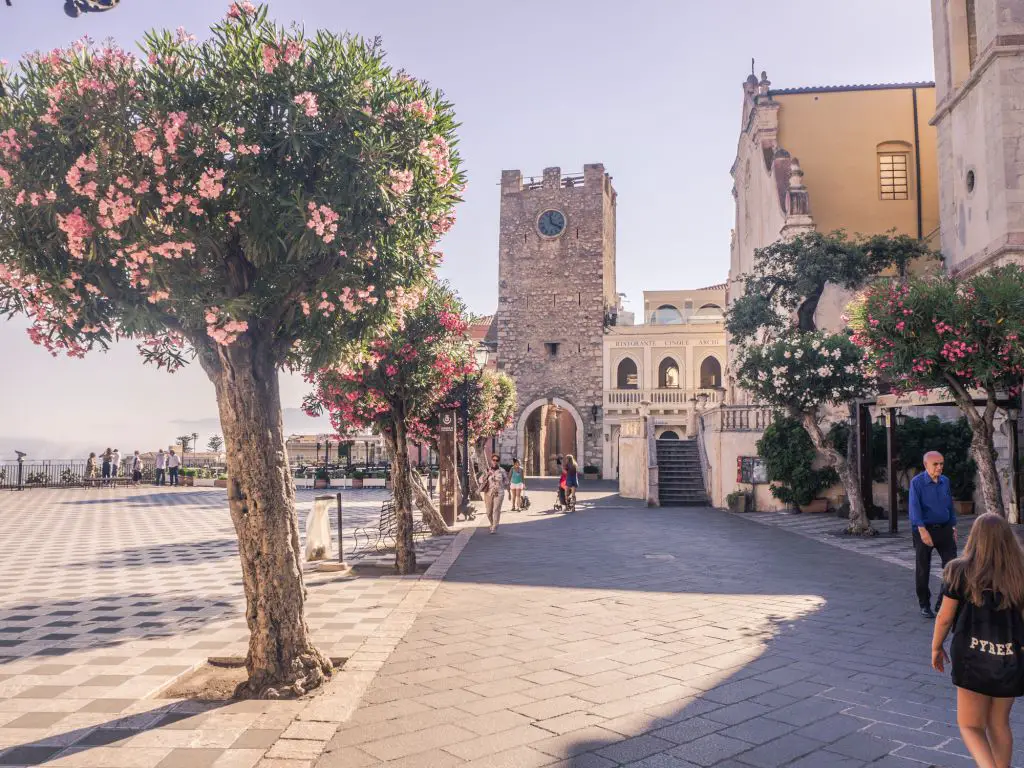
From Cefalu, we drove to Mount Etna where we stayed on a vineyard before actually visiting the summit of Mount Etna. From here, we then drove to Taormina where we spent another two nights. Finally, from Taormina, we drove south through Catania to the beautiful ancient towns of Siracusa, Ragusa, and Modica.
We flew home from Catania.
Day 1: Erice
The itinerary starts in Erice! Upon landing in Palermo, we decided to drive straight to Erice to spend the night. Erice is about 1h west of Palermo and is a clifftop town roughly 700m above sea level. What makes it very unique is its elevation is adjacent to the sea, as well as it being the highest point around. You have panoramic views of the entire region and you feel like you’re on top of the world.
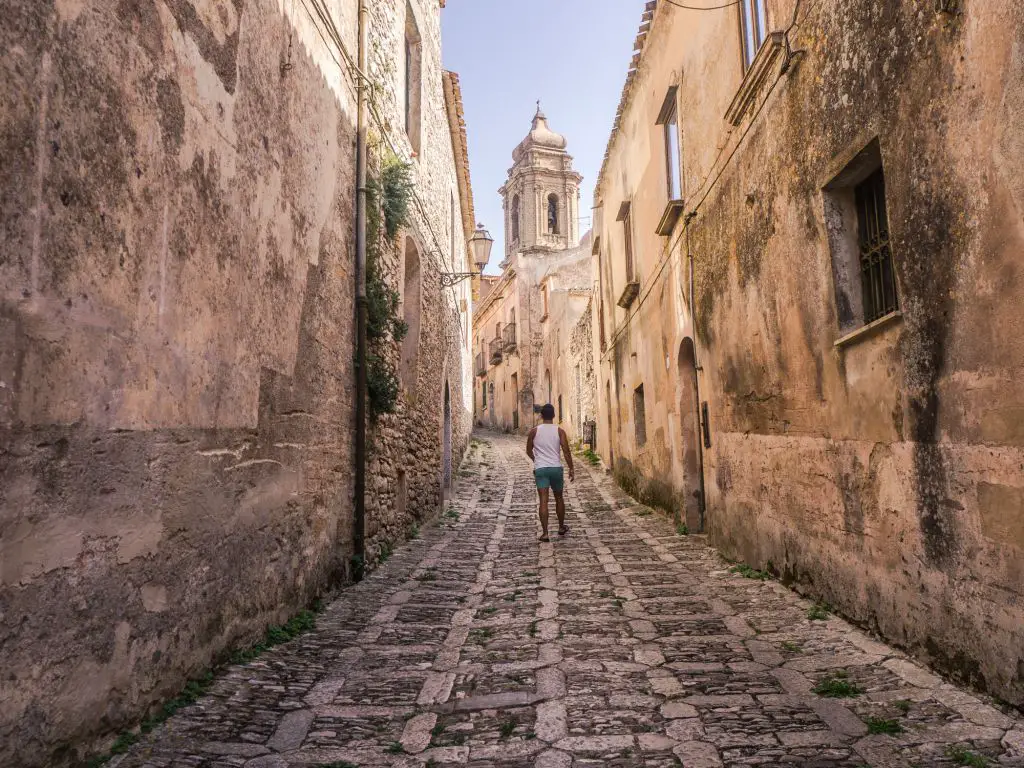
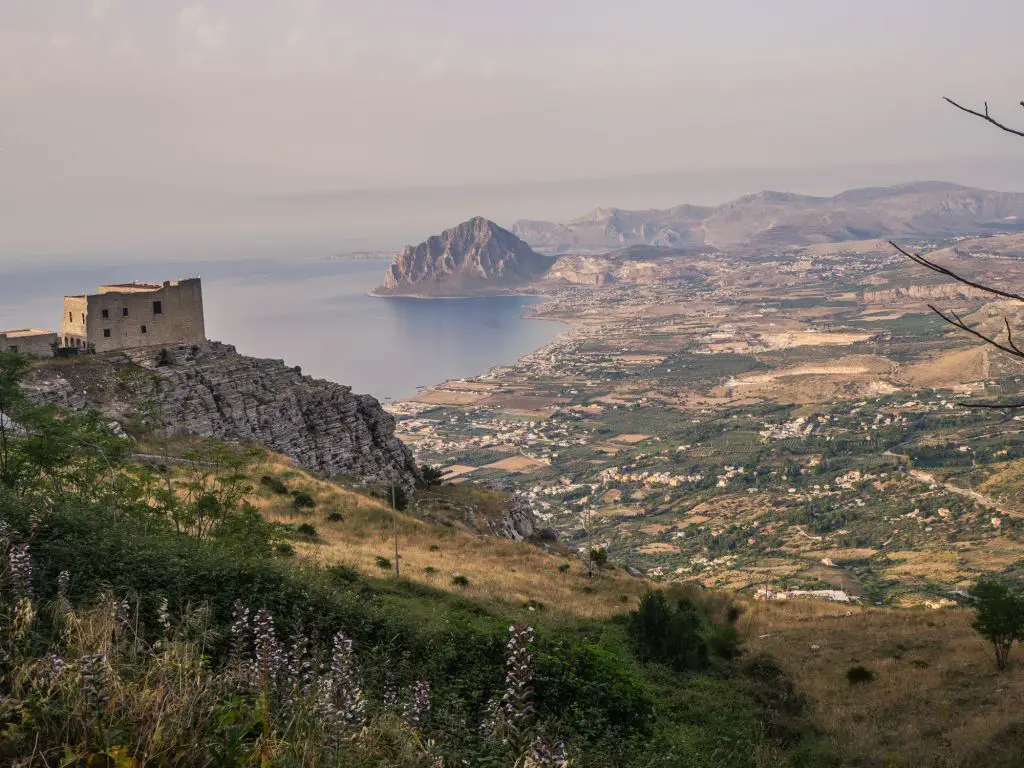
The only reason I found out about Erice was googling where Aquaman had its film locations in Sicily. Turns out, its film location is loosely based off on Erice although it wasn’t actually filmed there. After looking at pictures and reading blogs, it seemed like a must visit.
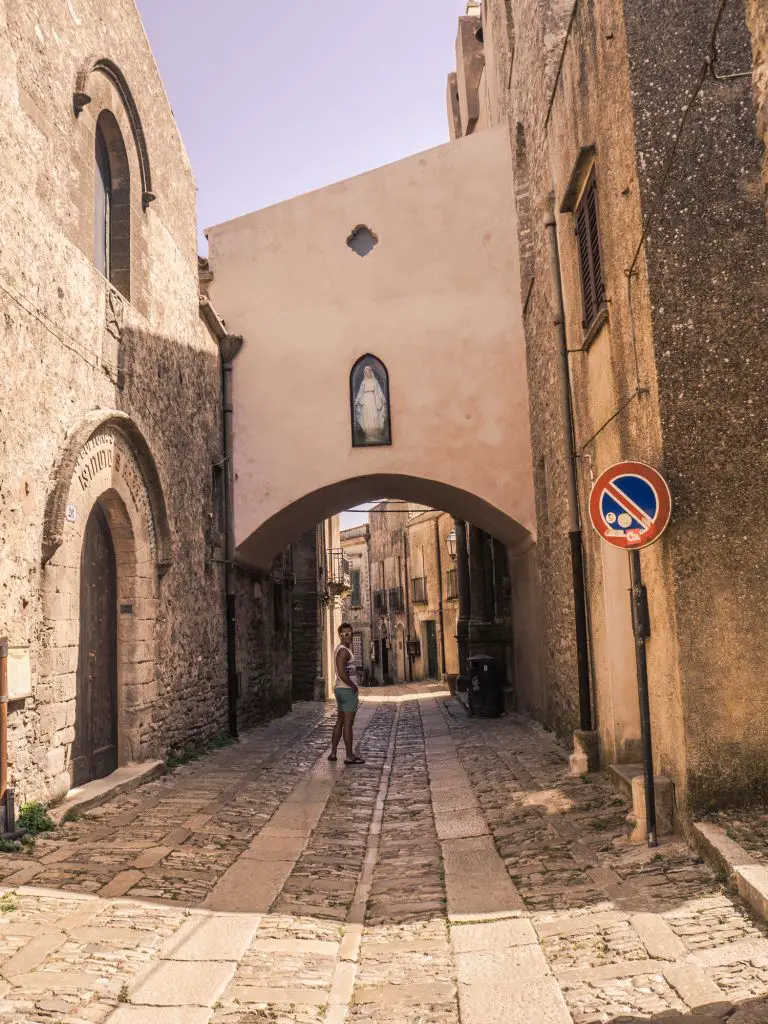
As we approached Erice, we had to drive on a very narrow and windy road that snaked up the mountain to the front gates of Erice. Makes you imagine how in the world did Bronze age civilizations create such a place by hand?
History of Erice
Erice’s history is probably the most fascinating thing about it. It’s an ancient town as you can tell by its architecture. Erice was founded by the Elymians, which controlled Western Sicily along with the Phoenicians, the Greeks, Carthagians, and Romans. During the dark ages, it was abandoned for roughly a thousand years before people started moving back during the medieval times.
Walk the old town streets
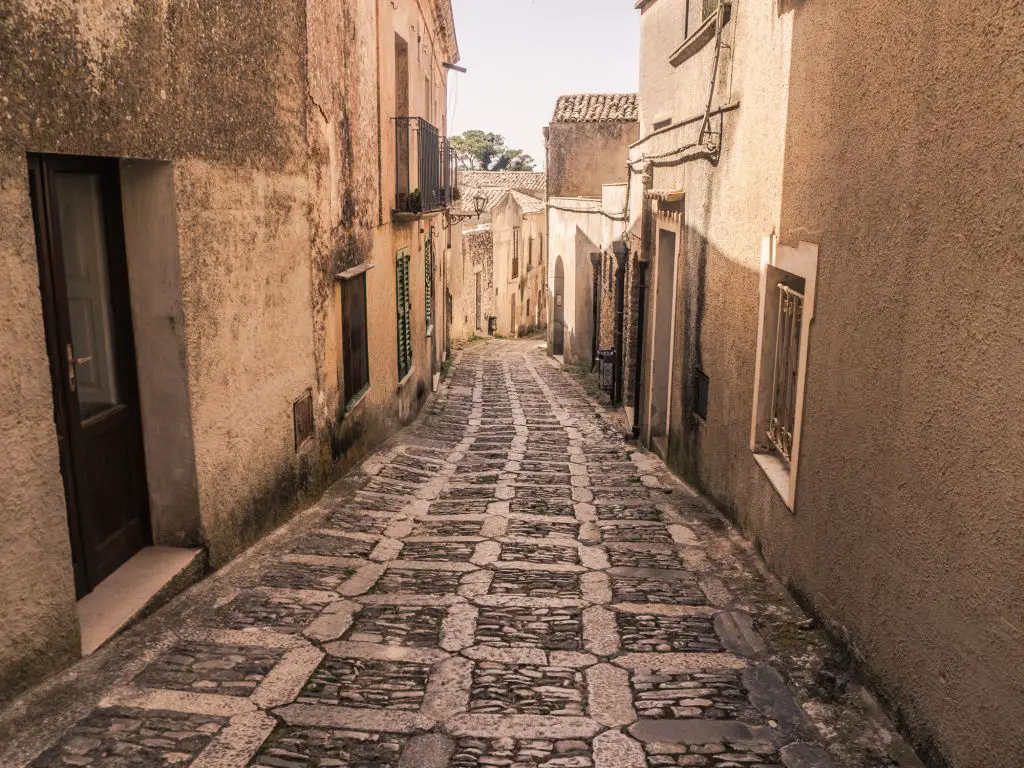
There isn’t a whole lot to actually see in Erice. It’s just one of the most charming and picturesque towns you can find in Sicily. Simply walk the streets admiring the ancient stone buildings and streets. Walk through the many gates the town is known for as well as its picturesque arches.
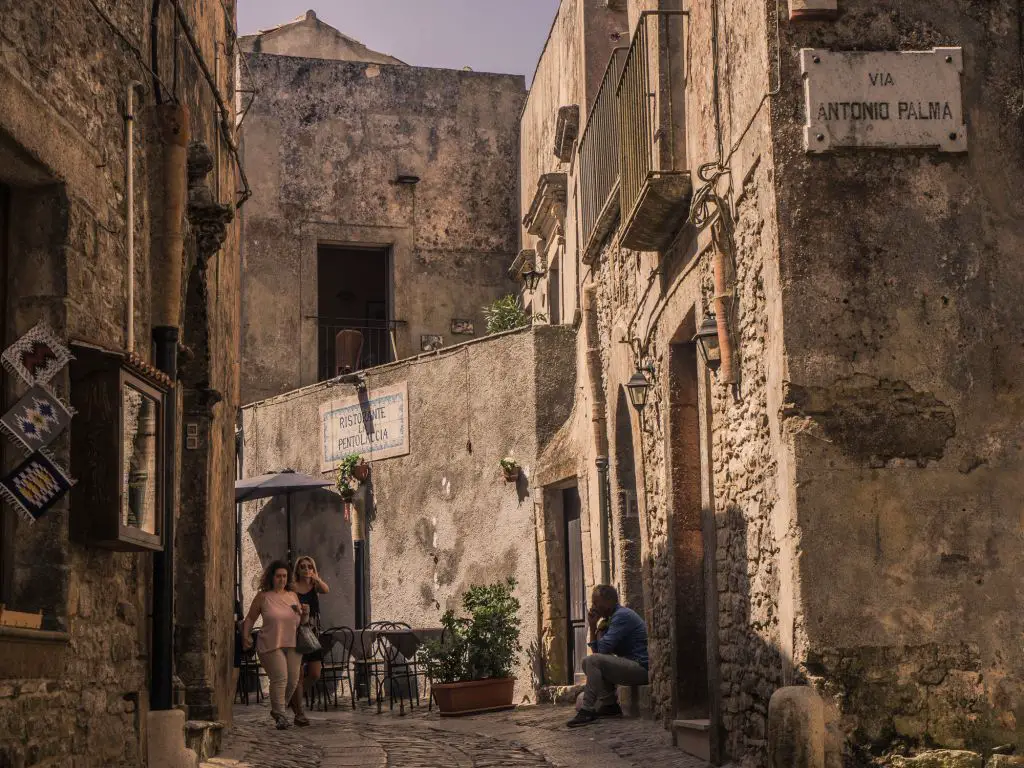
When you’re done with that, walk to the city walls to admire the picture perfect and iconic views of Monte Cofano, a dramatic peak at the edge of the sea.
Normally, this town sees a lot of tourists in the summer months, but we saw hardly a soul. It was so empty, it felt a little haunting at times. In the absence of tourists, plenty of locals made the drive up from Trapani and the surrounding towns to have dinner on Saturday night.
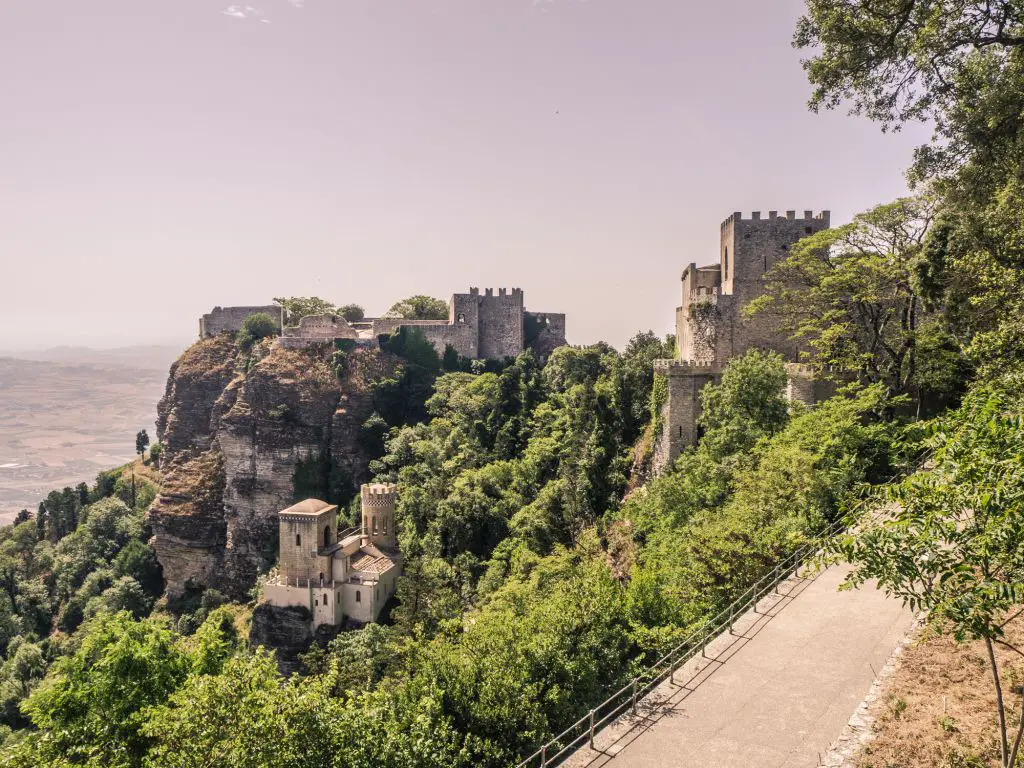
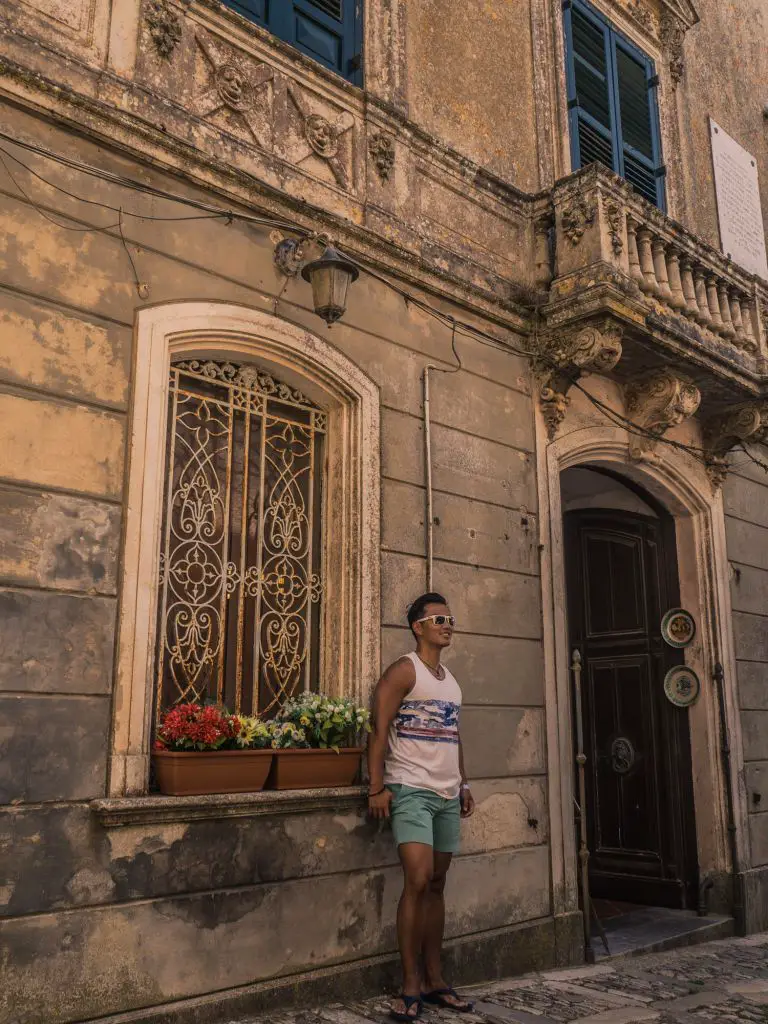
Dinner in Erice
For the best food in town, make a reservation for Gli Archi di San Carlo. We didn’t expect many people to be here but seems like the Italians were out in full force. We got our first taste of Sicilian food at this amazing restaurant.
Make sure to get try the Sicilian pasta as well as the traditional pasta con le sarde, or Sardine Pasta. It might not sound appetizing but if you’re a seafood fan, then you will find this delicious.
Day 2: Palermo, Monreale
Day two started with a visit to Palermo, the capital of Sicily. Palermo is a bit of a run down city but only in Italy does that add to its charm and beauty. Looking back on this, we could have just spent two nights in Palermo and made Erice a day trip instead of spending one night in Erice and one night in Palermo.
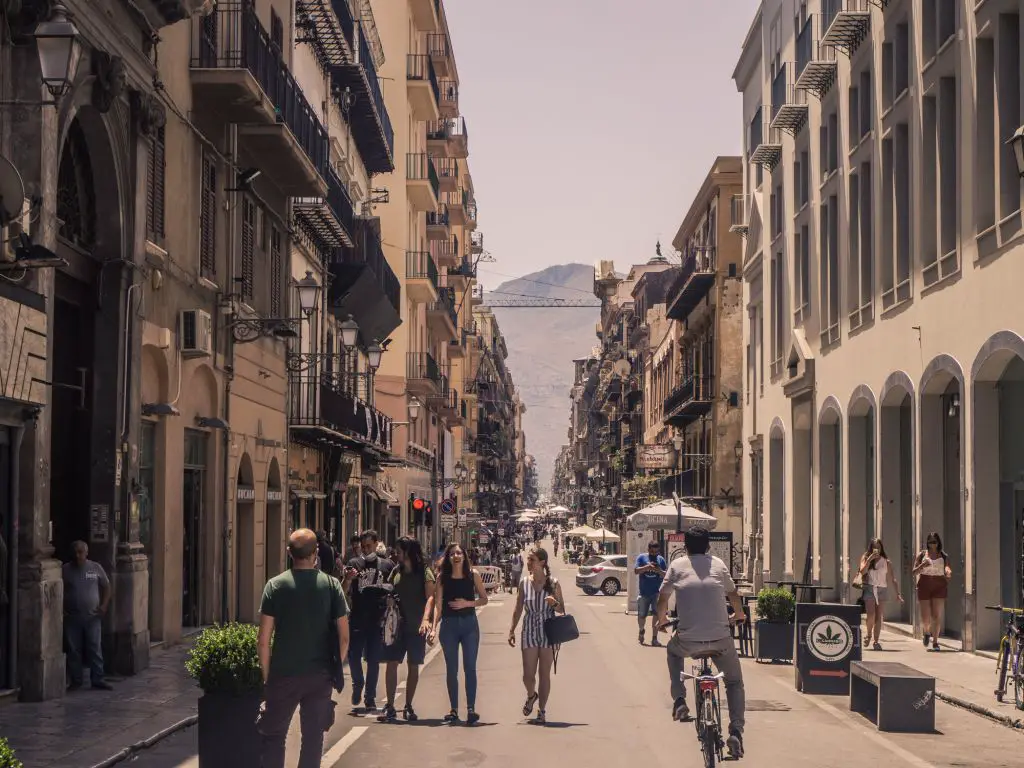
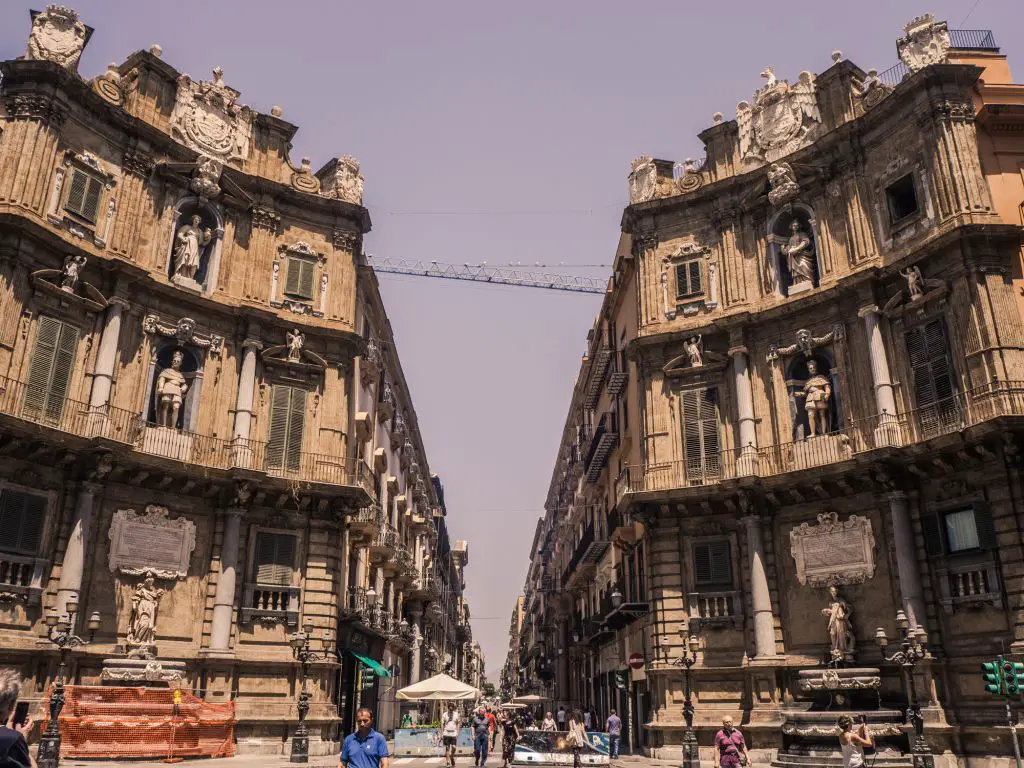
Although I’m not the biggest fan of visiting the big cities in Italy, I think Palermo is a must see even if it’s for a day. Really, you don’t need more than two days to see the town. Palermo is famous for its street food as well as top notch restaurants.
Palermo is the most conquered city in Italy
Palermo, and the rest of Sicily for that matter has seen many rulers from different civilizations throughout the ages. Its location in the middle of the Mediterranean made it an important trade route stop which resulted in numerous factions vying for control.
Palermo is a town has exchanged hands the most. Phoenician and Carthaginian, Greek, Roman, Vandal and Ostrogoth, Byzantine Greek, Islamic, Norman, Aragonese and Spanish have all taken control of Palermo at some point in time. The fusion of culture, art, cuisine, and design yields a very uniquely Sicilian experience.
Palermo Cathedral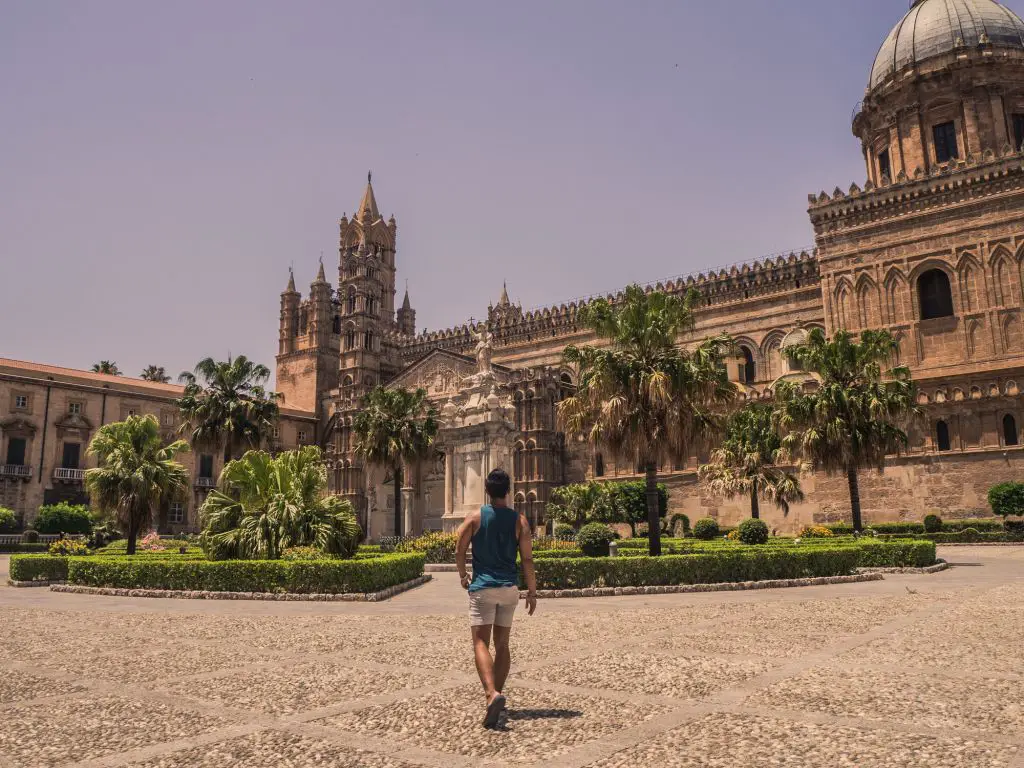
Eat Arancine
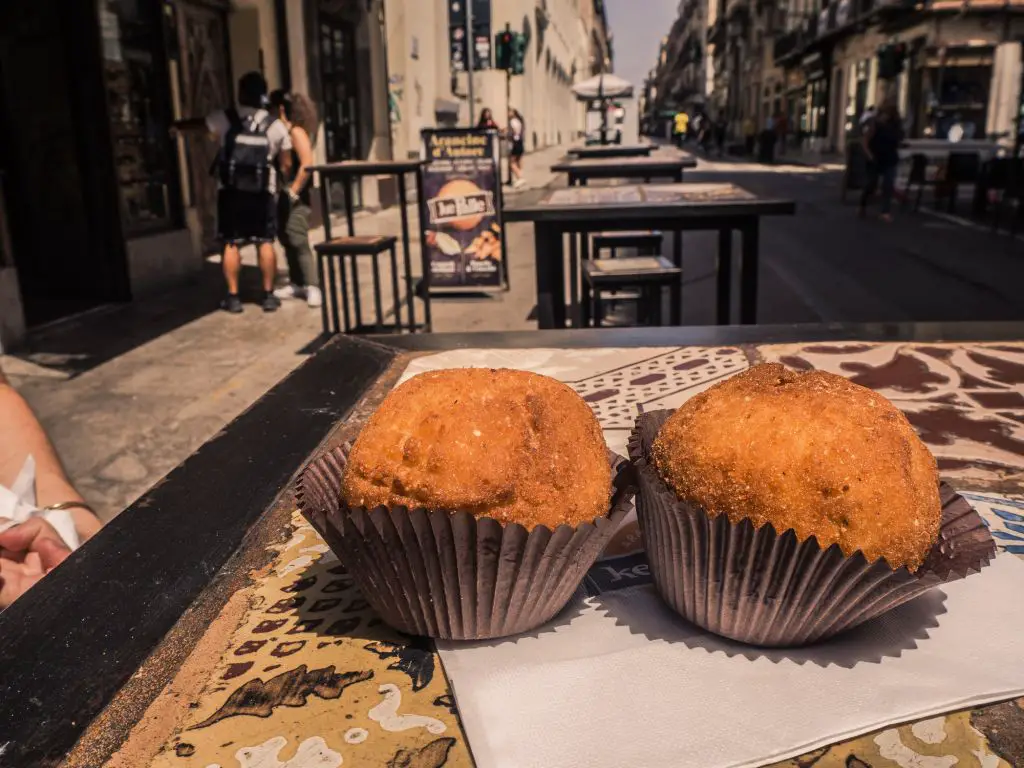
Without a doubt, Sicily’s most well known street food has to be the arancine. The traditional arancine is essentially risotto rice cooked in a meat ragu that is rolled into a ball and lightly battered. Sounds good? Yes, of course it is!
You can find arancini everywhere in Sicily. Depending on where you are they will be slightly different. The arancini’s in the west were a perfect spherical ball whereas the arancini in the east like Taormina are conical shaped. Traditional arancini are quite big. One ball will likely fill you up and two balls could spell disaster. They are very cheap around €2-3 per ball which makes them a very economical go-to snack and a mainstay if you’re a budget traveler.
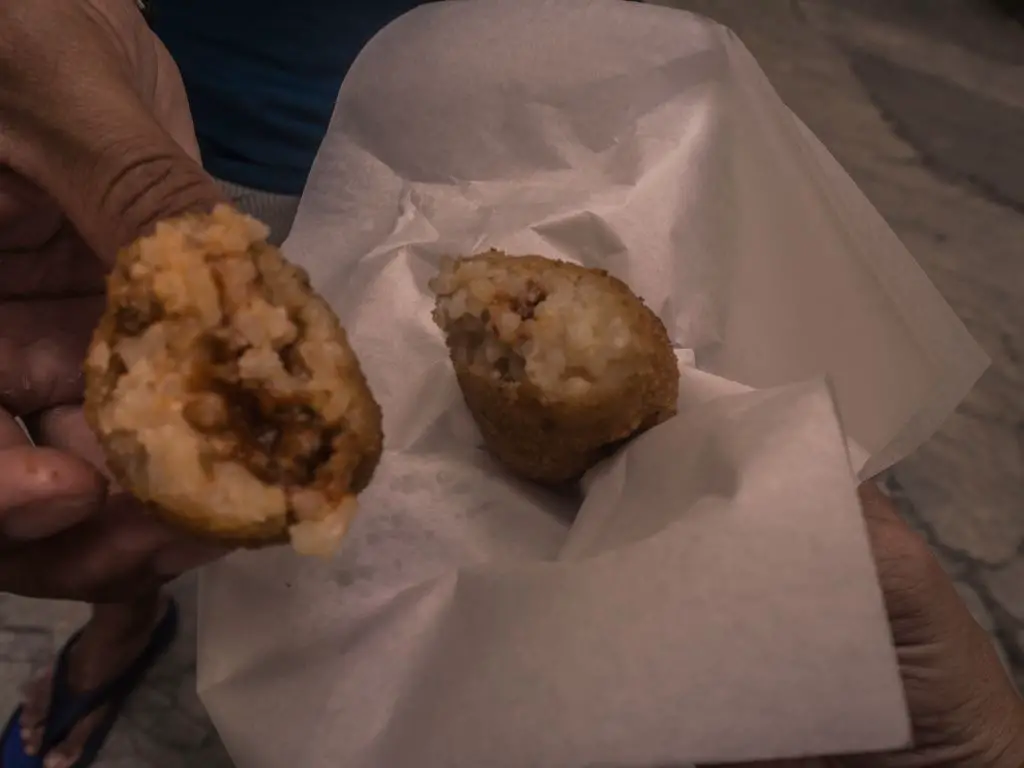
In Palermo, you can find some of the best arancini in the island. I experimented with plenty of them and by far the best is at I Cuochini. This little back-alley shop serves them in a much smaller bite size but they were by far the most delicious. At €0.80 per ball, it is the best deal in the island.
Eat an ice cream brioche
The birthplace of the ice cream sandwich must have come from Sicily. Instead of delicious ice cream sandwiched between two cookies, the Sicilians put the best gelato you can find in between a sweet brioche bun.
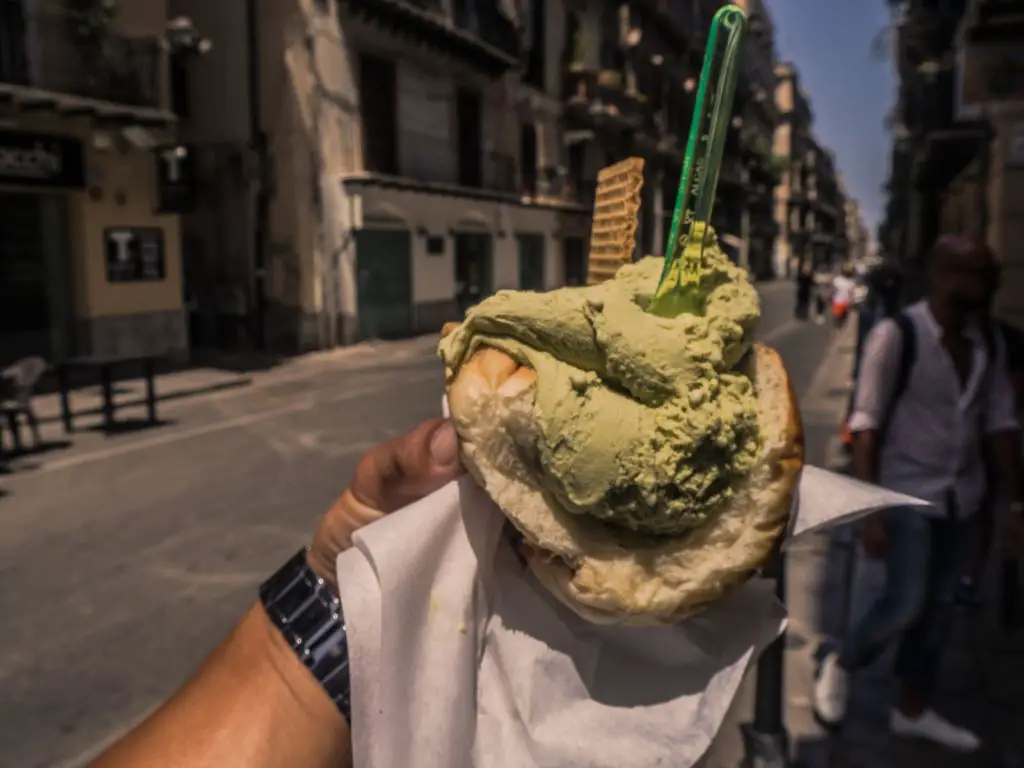
At first this might not sound appealing but the soft bread with a hint of sweetness is the perfect vessel to absorb the gelato goodness. The best place in Palermo to get this is Gelato Al Cassero. I had the Pistacchio in a brioche for €2.50 and it is life changing. Thankfully we discussed this at the beginning of our trip because I ate one almost every day.
Visiting Monreale from Palermo
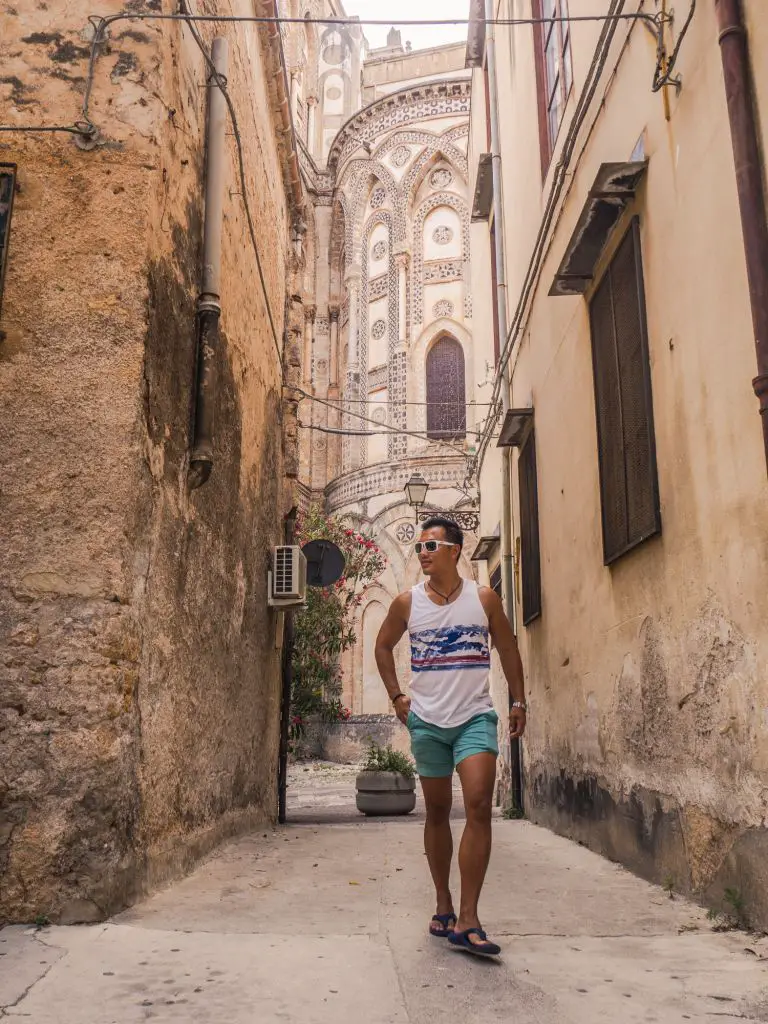
If you have more than a day in Palermo, a visit to Monreale is a must. This hilltop town is a mere 7km from Palermo and is easily accessible by car or bus. We only spent a half day here which was more than enough.
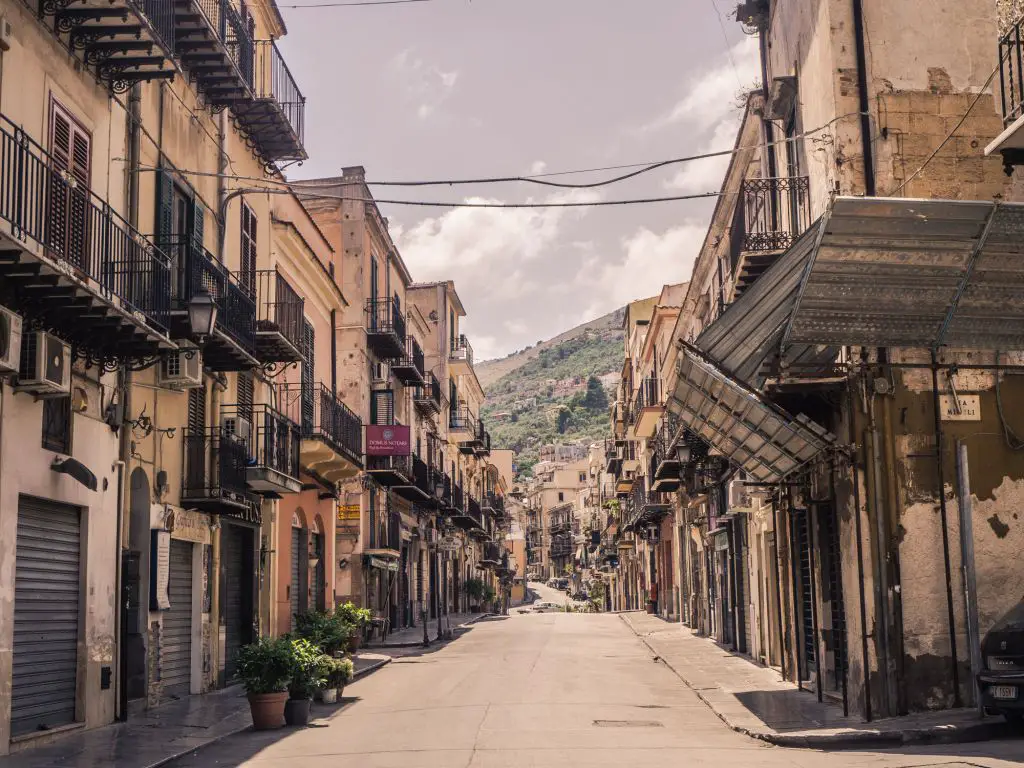
Most people visit Monreale for its picturesque streets and above all the Monreale Cathedral. It is a huge tourist draw and is known worldwide for its gleaming mosaics. The entrance is €10 which I didn’t feel like paying for the visit. Looking back on it, I probably should have just sucked it up and paid for it.
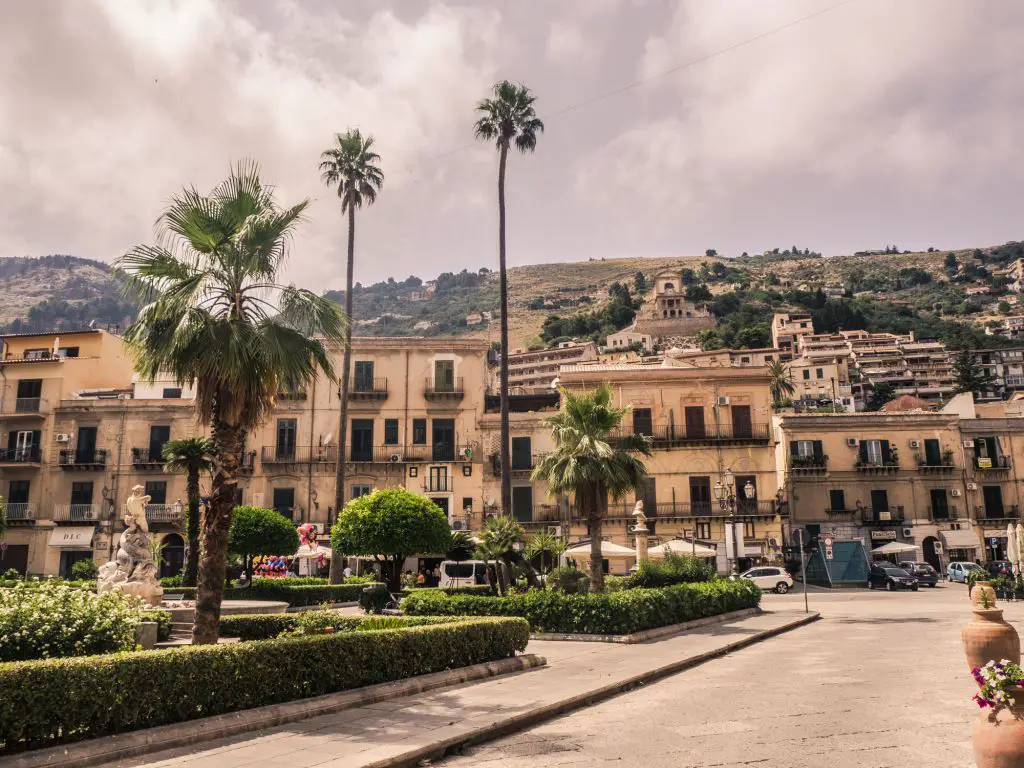
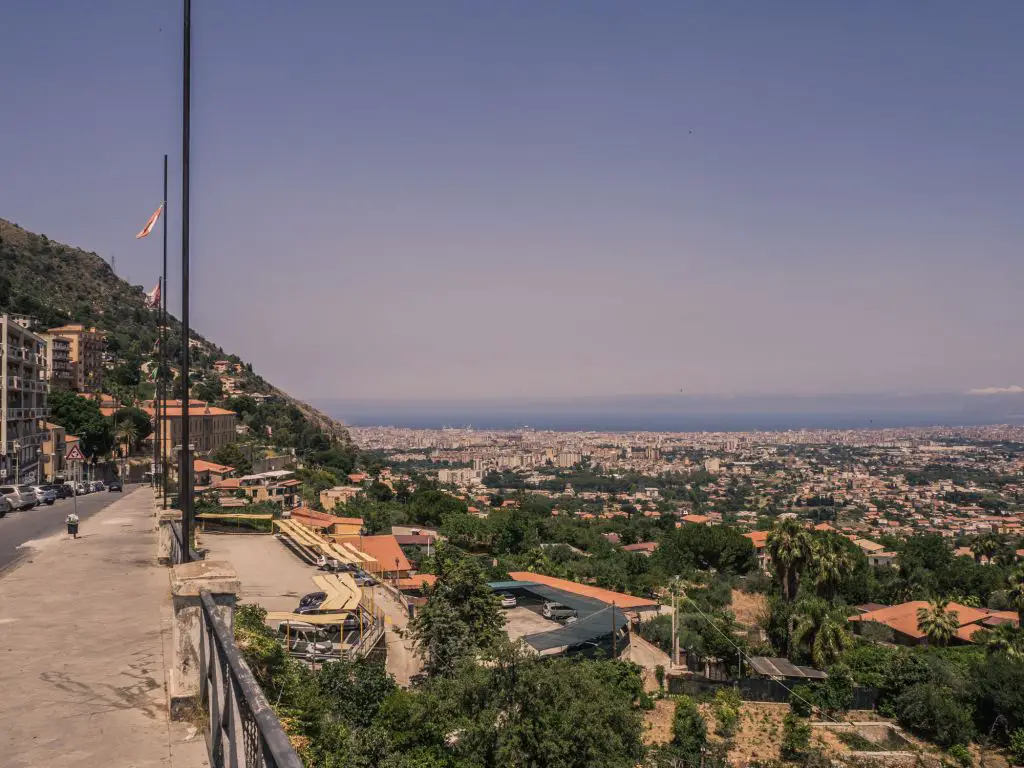
Traveling in Coronavirus times, there was hardly a soul in sight. It’s hard to picture this as the over-flowing charter bus haven from my conversations with the locals.
The cathedral is without a doubt impressive as well as the views from the city over Palermo.
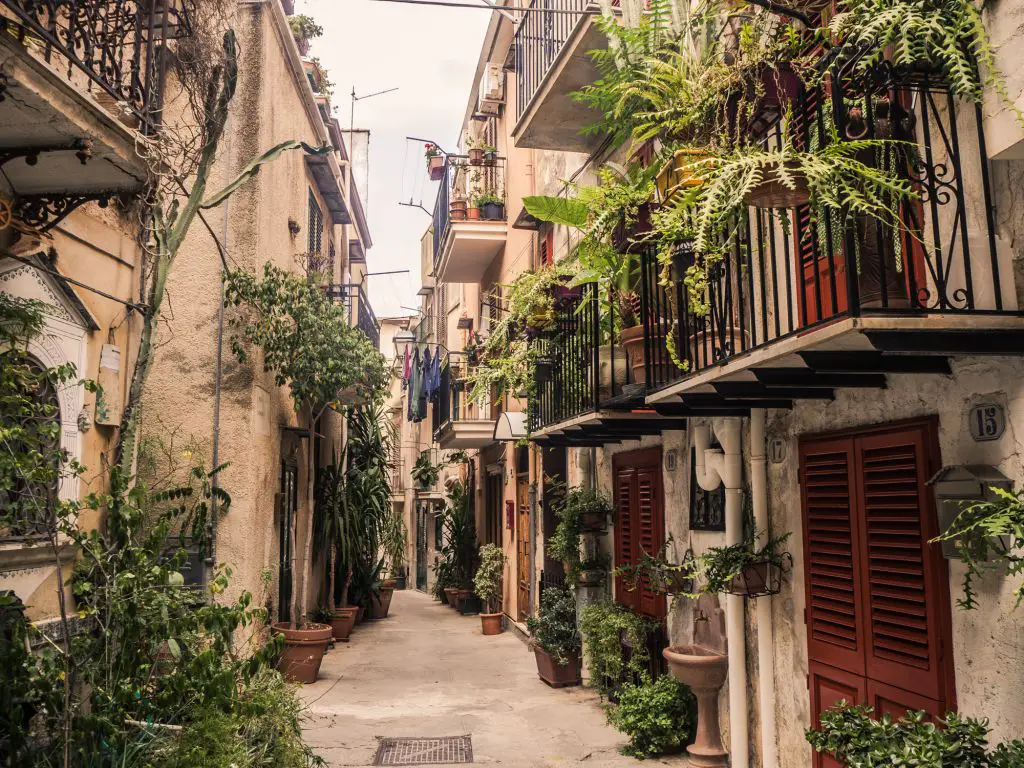
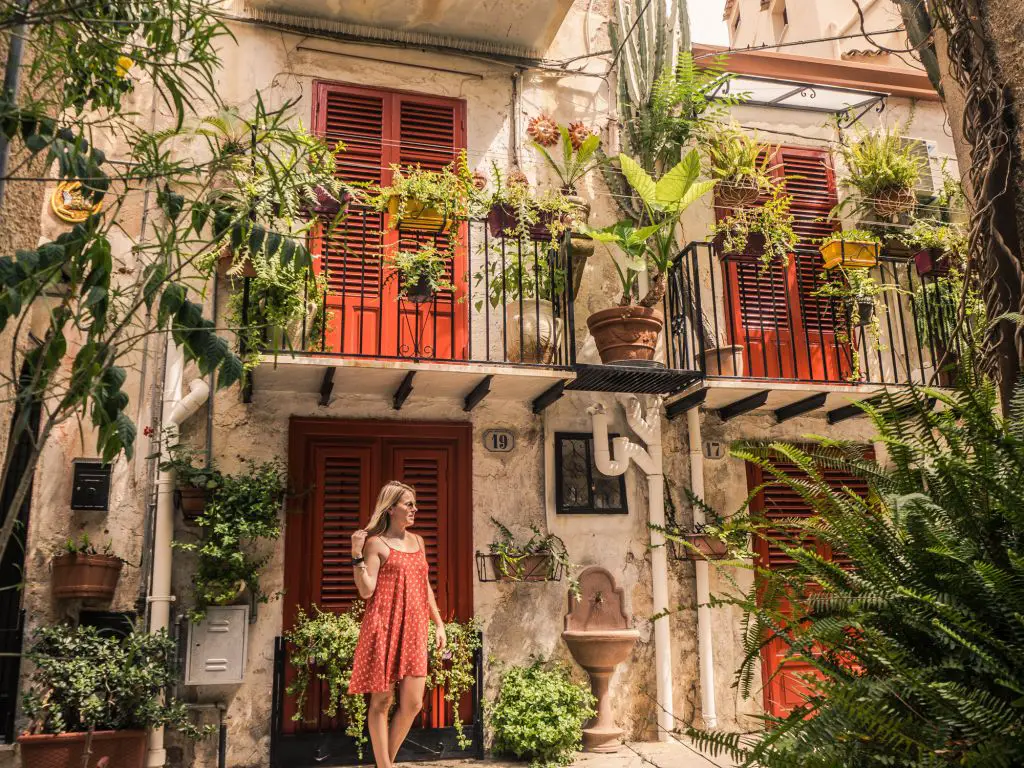
We also found a very beautiful street right next to the cathedral that was densely decorated with flowers and trees. We ended up spending most of our time here getting our photography and insta-posing on. No shame I know.
Day 3-4: Cefalu
After a day in Palermo and Monreale, we drove eastward to Cefalu. Cefalù is one of the major tourist attractions in Sicily. It is a charming small city on the north coast of Sicily, about 70 kilometres east of Palermo. It’s an old fishing village that has turned into a beach town and tourist draw in recent decades.
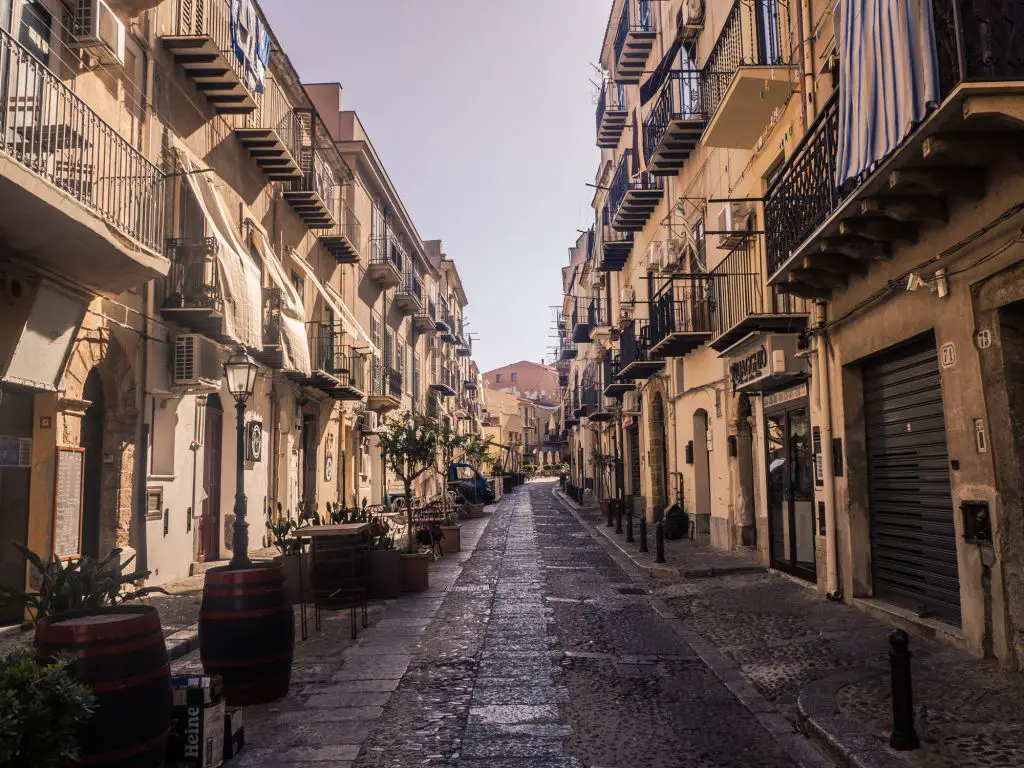
The streets of Cefalu are absolutely gorgeous. It’s hard not to walk through the town and not admire the Moorish, Greek, and Italian influences that history has provided. When you’re done with the architecture, Cefalu is adorned with beautiful beaches as well as a dramatic rock face directly behind it.
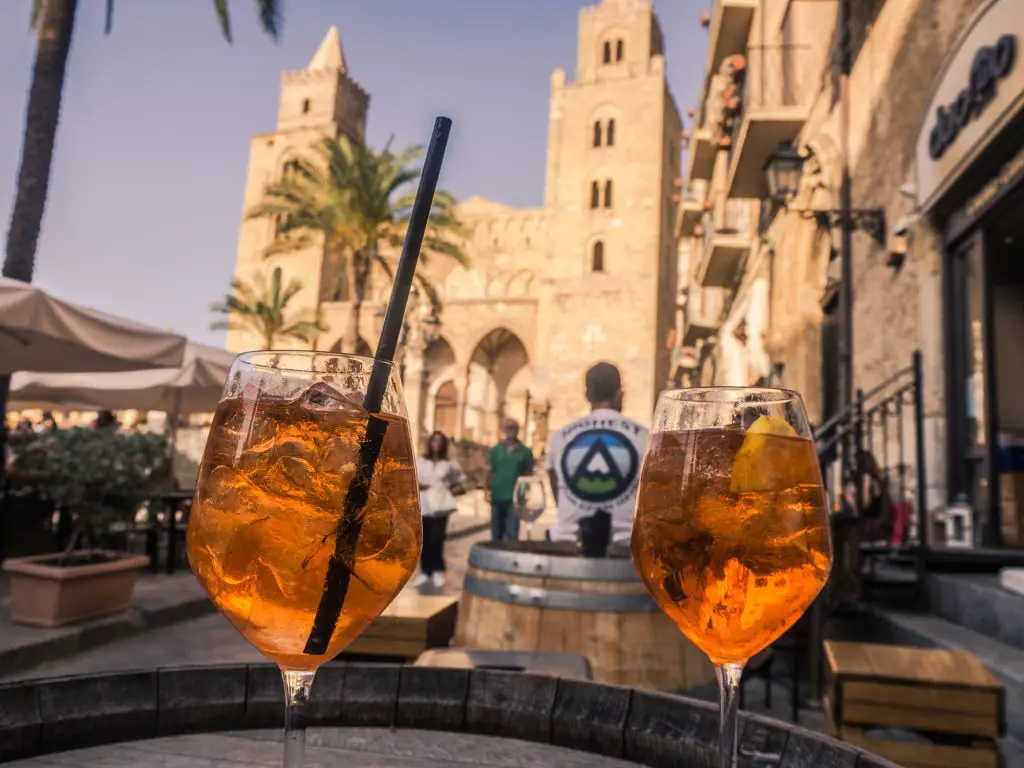
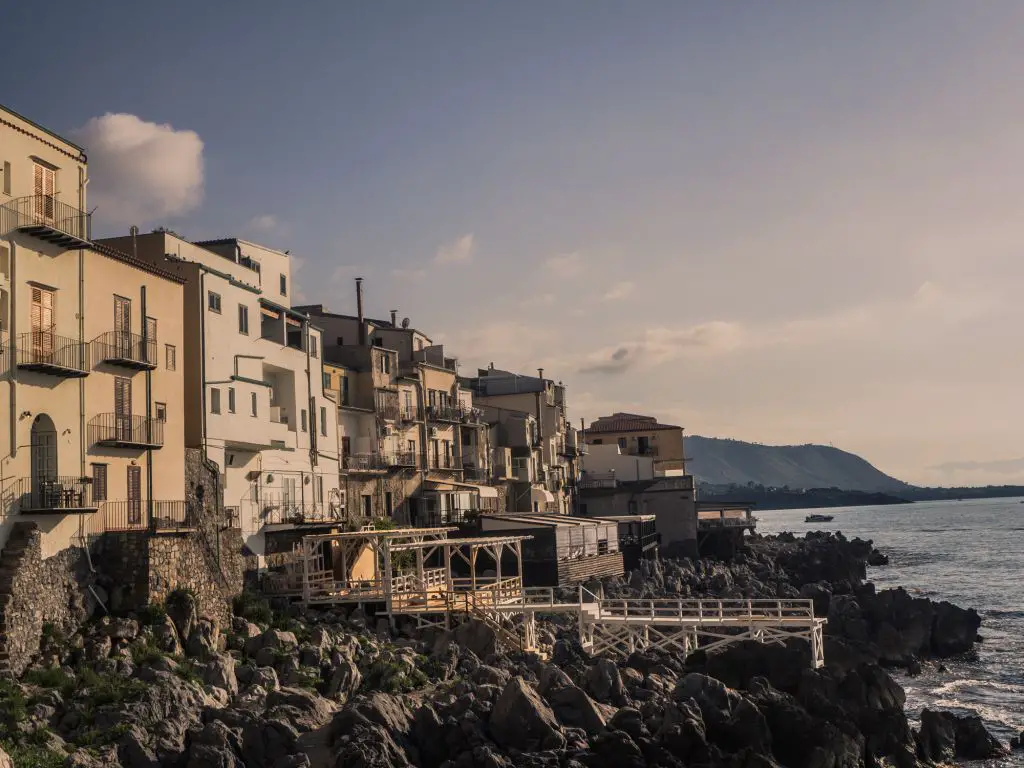
Enjoy the views from the Harbor
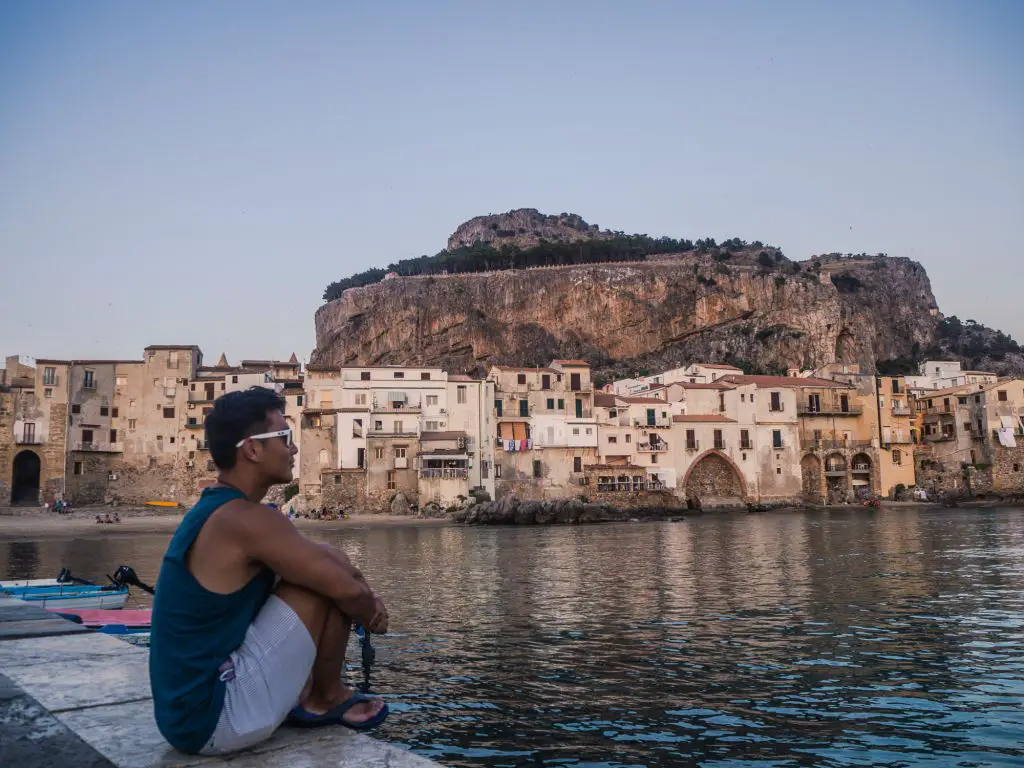
Without a doubt, a must do activity in Cefalu is come to the harbor for sunset. It’s impossible to miss as you just need to head towards the northwest corner of town and you will see the jetty protrudes out.
Come here during golden hour and enjoy the views of this beautiful town with the mountain in the background.
We booked an Airbnb that was located right on the water with stunning views of the ocean.
Hike to the top of La Rocca
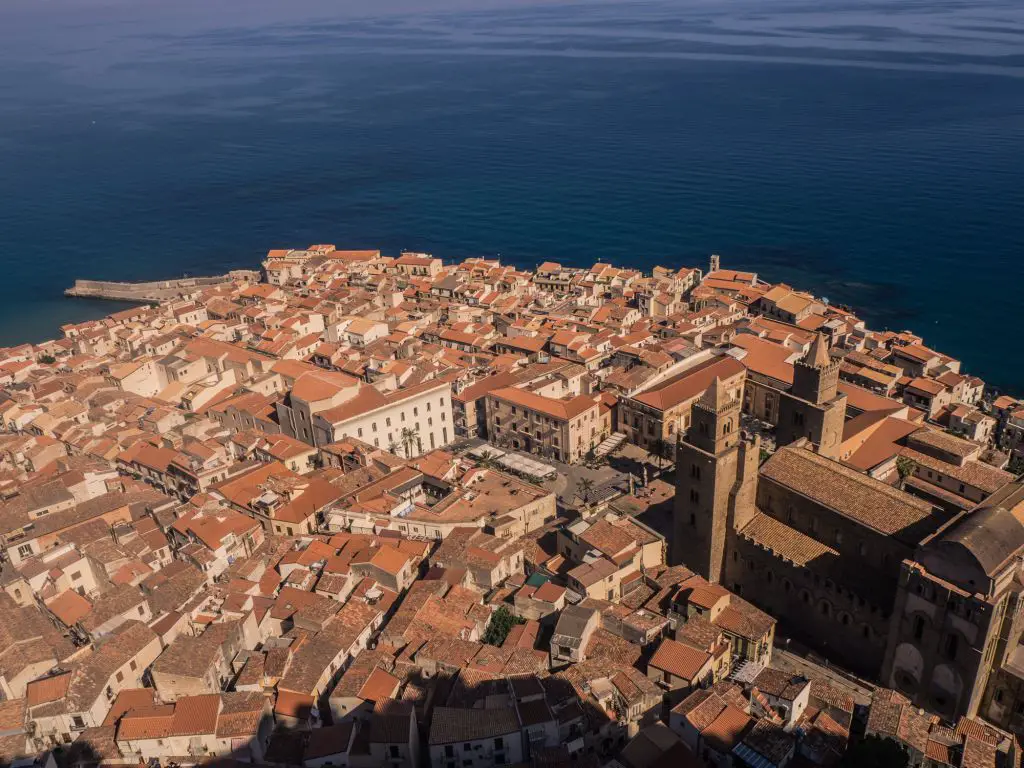
Speaking of that beautiful mountain in the background of the town, you can hike up to the top of this giant rock. Naturally, like all European towns, you can expect to find a castle at the top. From the town, look for the entrance to La Rocca. It costs €4 to enter and is well worth it.
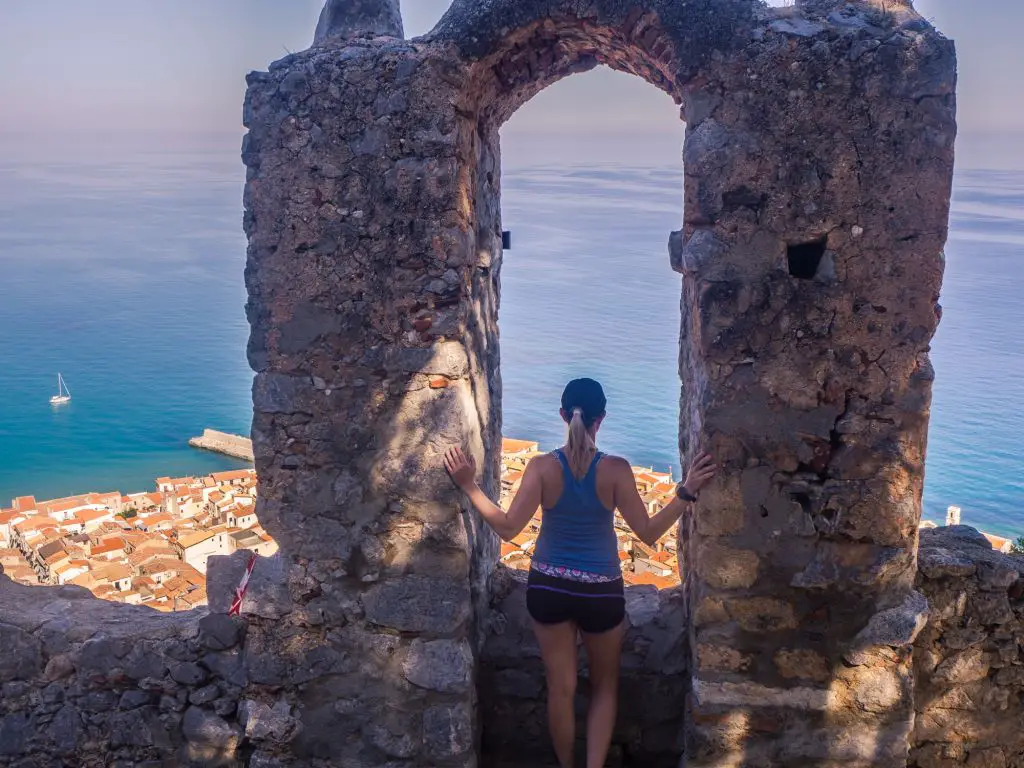
The hike is very easy if you’re just after the views of the town. We were warned that it was a difficult hike but it’s simply not true. We hiked up in about 15 minutes and this was in the summer months when the weather was well over 30 degrees. From the first viewpoint, you can hike an additional 20 minutes to the castle. As it was so hot, we were more than content with the breathtaking views from the base.
The view here kind of reminds me of the Dubrovnik old town which is densely packed with idyllic orange rooftops right next to the ocean. Perhaps Cefalu is not quite as picture perfect as Dubrovnik but I can’t complain.
Day 5: Mount Etna Area
From Cefalu, the itinerary continues east towards Taormina. In between these two iconic towns is however, a must visit site in the famous Mount Etna Volcano.
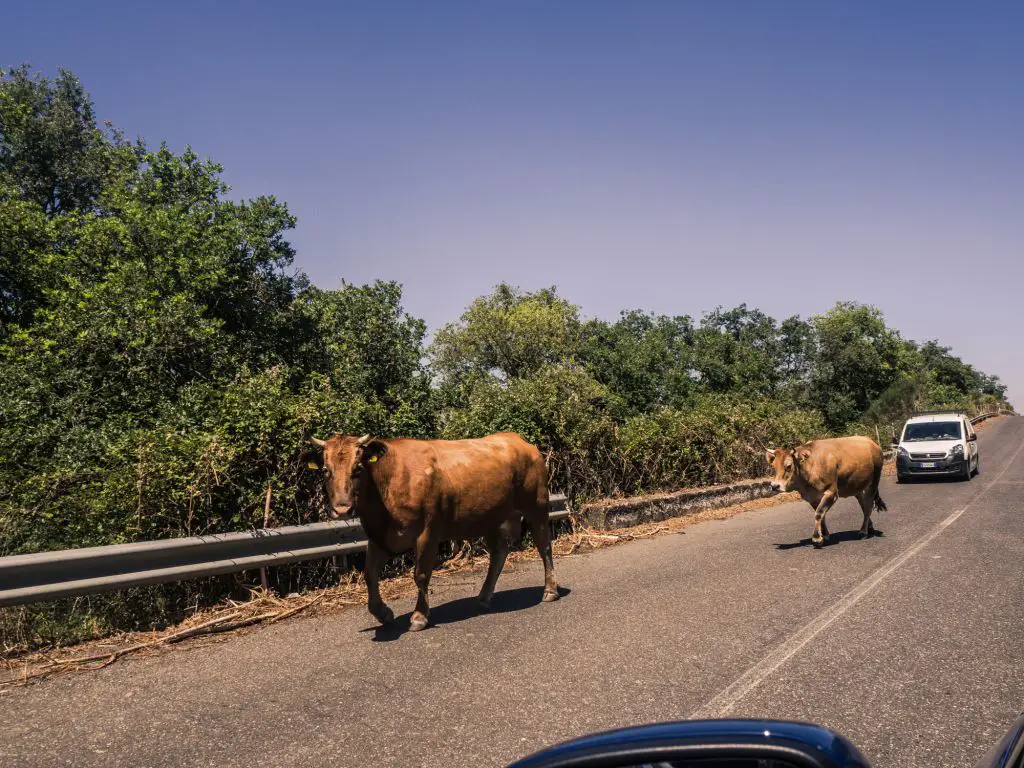
Mount Etna is the largest active volcano in Europe. Standing at 3,350m tall, it can be seen from most of eastern Sicily on a clear day. Its spectacular eruptions and its fiery lava flows, has always aroused the interest of scientists along with the curiosity of visitors from all over the world.

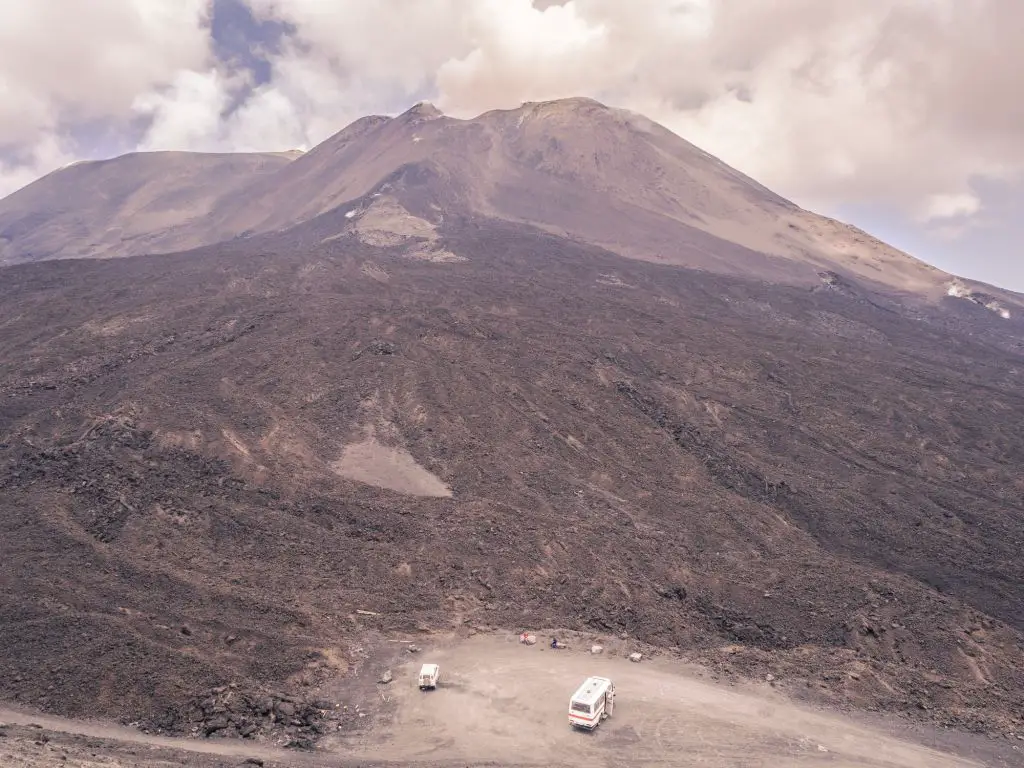
Although Mount Etna has erupted several times throughout the ages, the outbreak of 1669 was the largest. It destroyed many villages and parts of Catania, a large city which lies at the volcano’s foot. During the historic outbreak lava flowed into the sea near the city’s harbor. More than 20,000 people were killed during this eruption.
Following minor outbreaks in the 1950s and 60s and the volcano has repeatedly erupted every few years since then with the most recent being in the early part of the 2010s.
Visiting Mount Etna
Visiting Mount Etna is very straight forward. Do not be intimidated by the fact that it’s a volcano and it’s over 3,000m high. Unlike previous volcano hikes like the ones I did in Guatemala where there was no way to see it besides on foot, Mount Etna has a intricate system of cable cars and trucks.
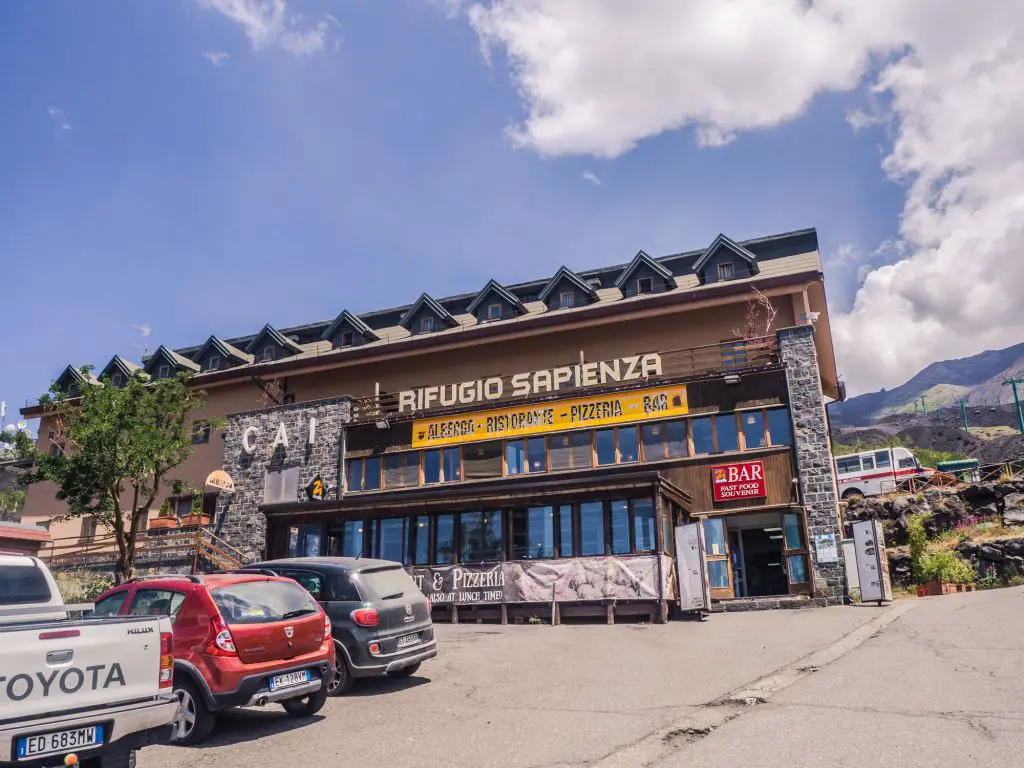
Yes, you don’t need to hike at all to see the top of the volcano. You can follow these steps if you want to see Mount Etna with little time and effort:
- Drive to the base of the Funivia. If you need GPS directions, input Riffugio Sapienza into your GPS and this will take you to the base of the cable car where you will find ample parking spots all around. The road up to the base of the mountain is windy but very beautiful. You will be at 1,900m here. The cable car runs daily starting at 9am with the last lift at 4pm.
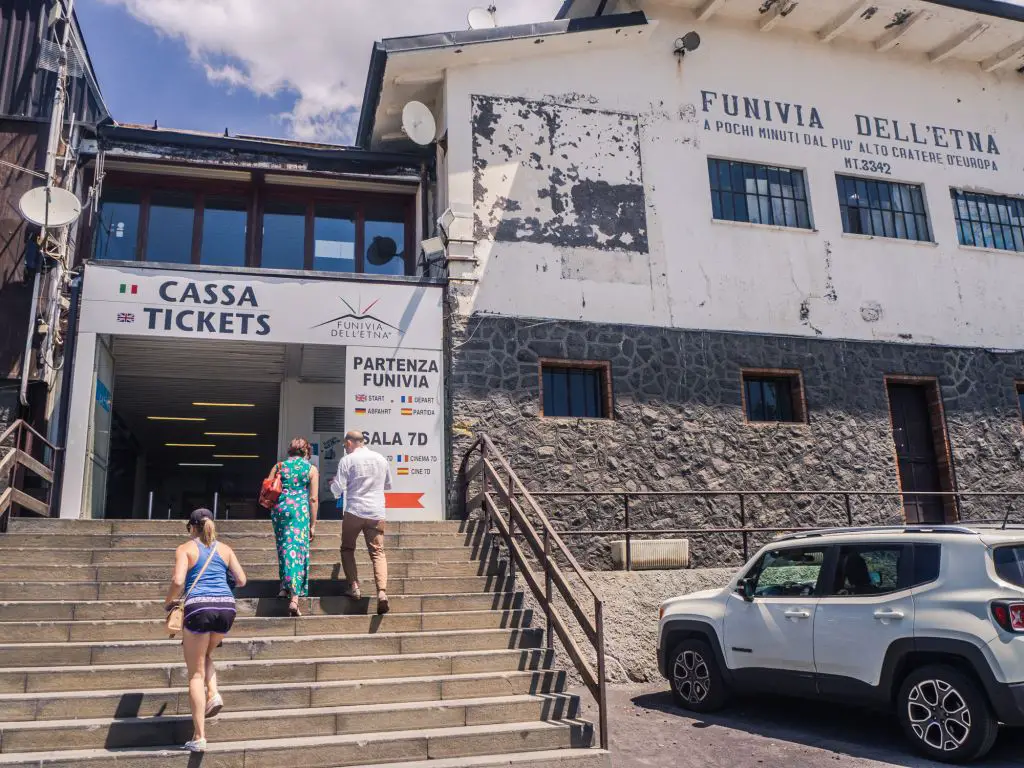
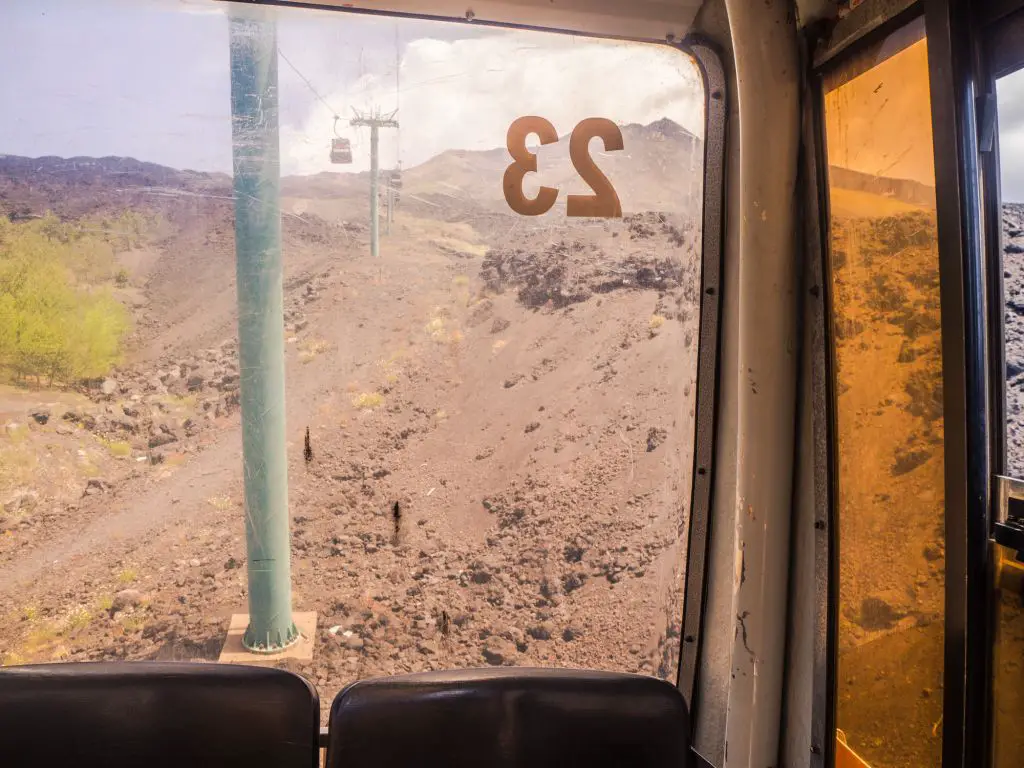
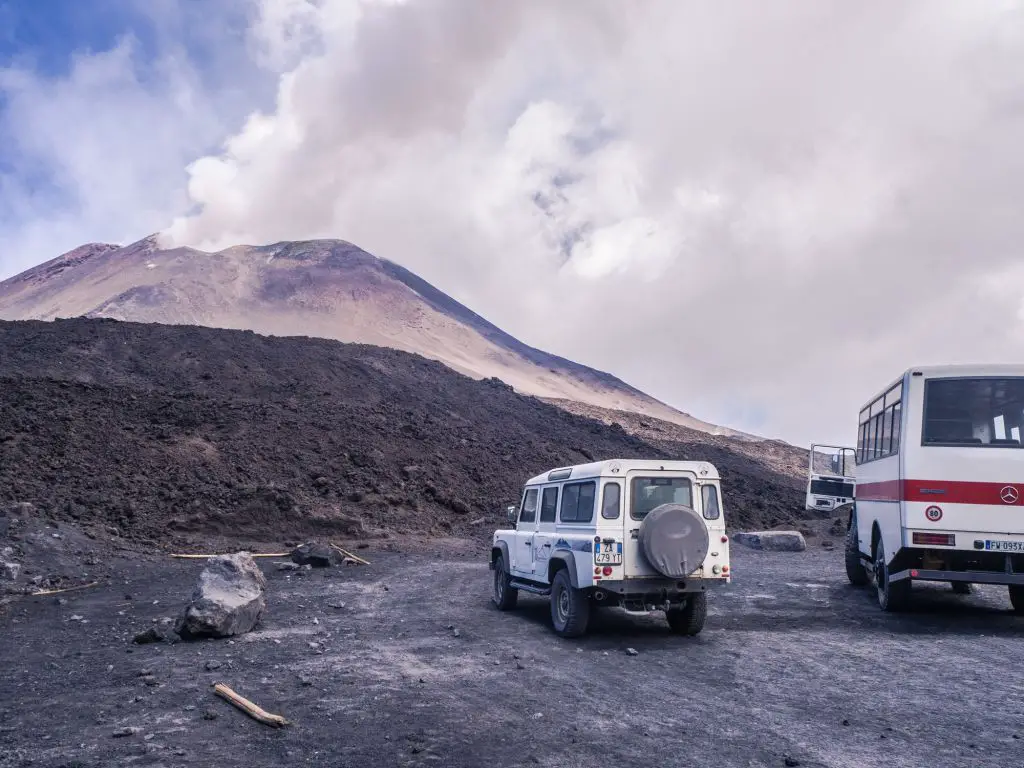
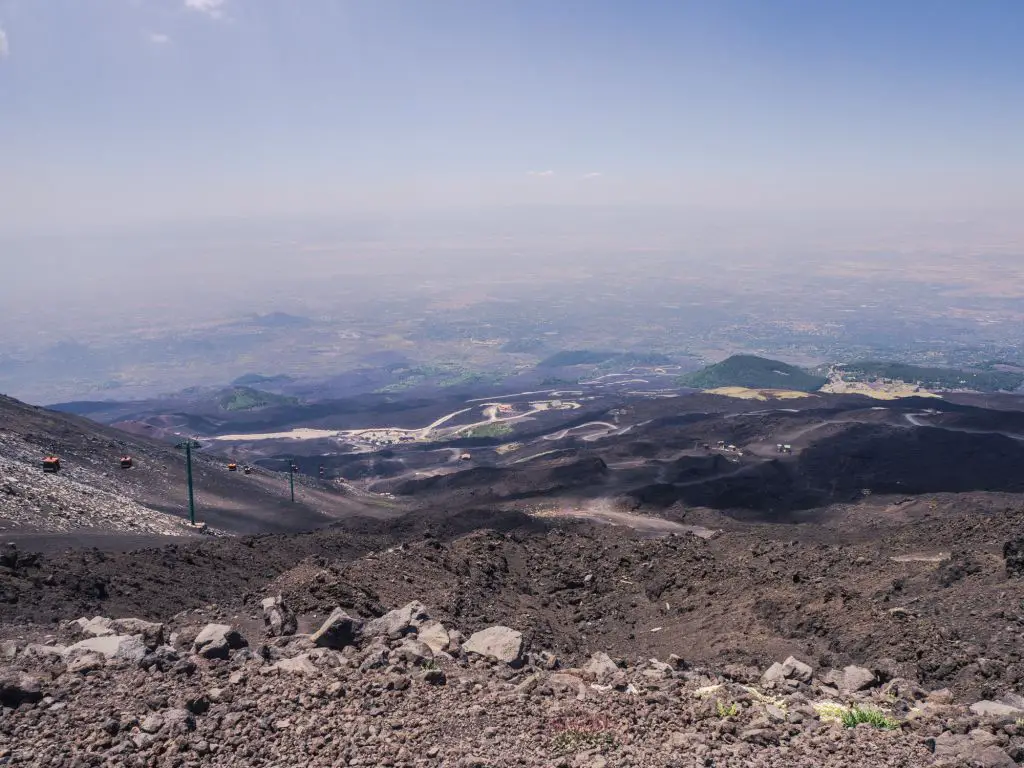
That’s it for those that want the quick and simple experience. The cost for the cable car and the overland truck is €38 per person round trip. It took us around 2h to complete this trip.
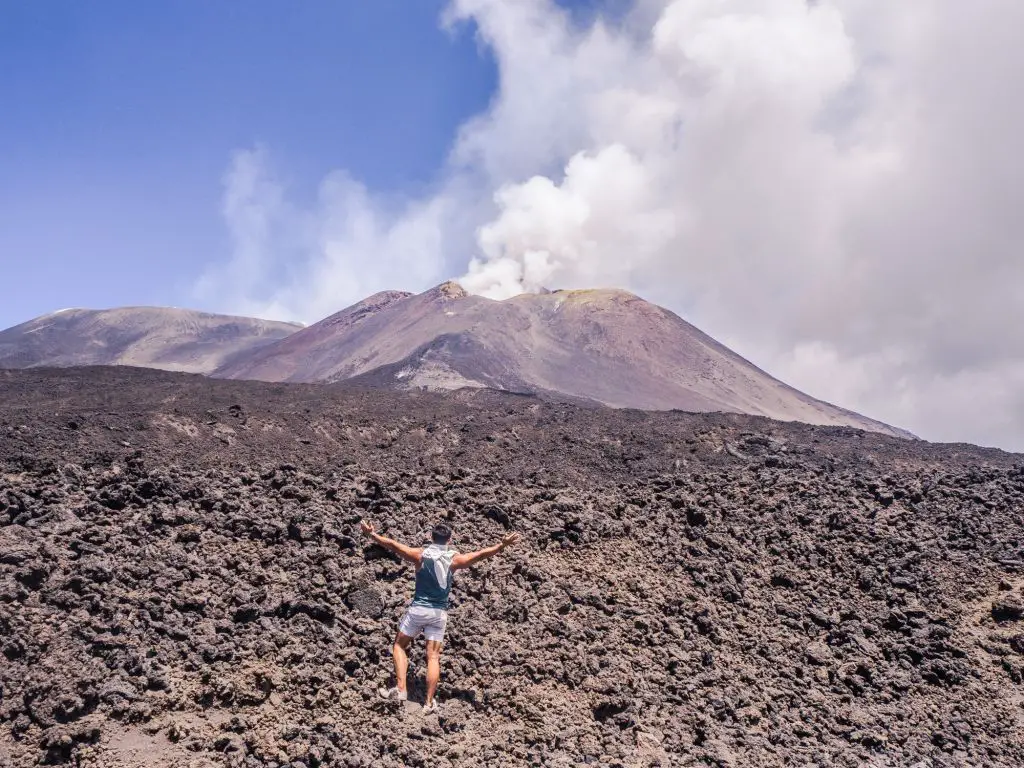
If you don’t feel like paying €38 which I think is a very reasonable deal for what you get, you can certainly hike up to the top. You can start from the cable car and just follow it up to the top. The hiking didn’t look that challenging as you are pretty much walking up a flat smooth surface the entire time. Remember, this place turns into a ski resort in the winter months! We saw plenty of people making the walk which I would totally consider doing in cooler months.
Visiting the very top of Mount Etna
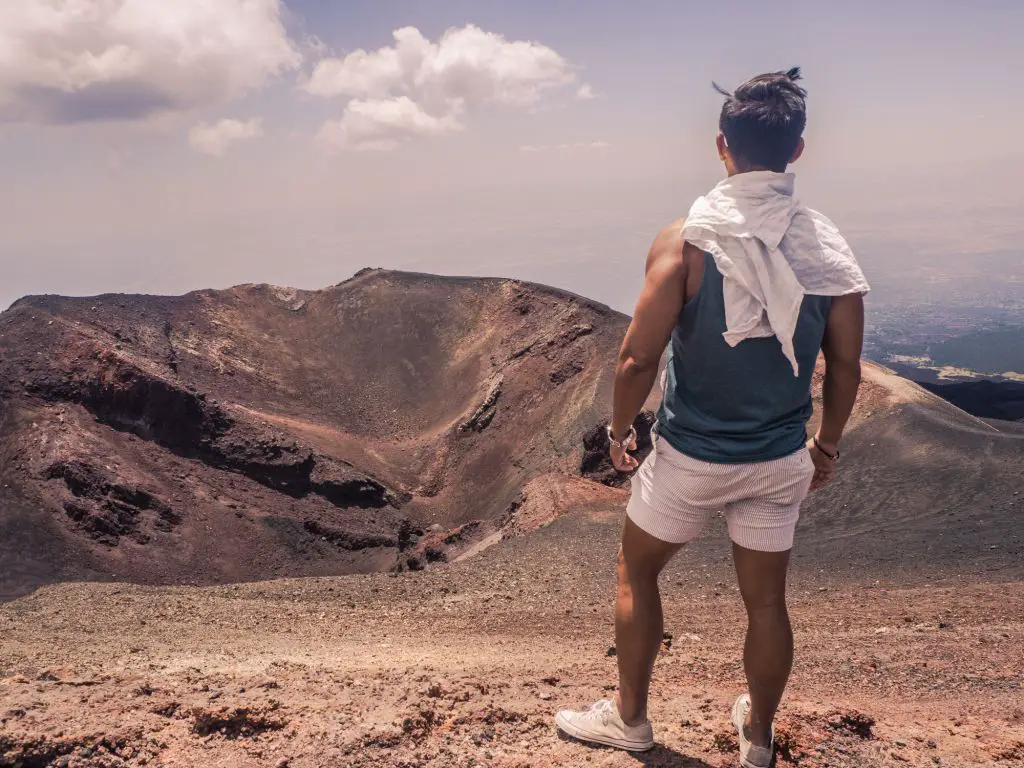
The highest point of Mount Etna is 3,350m and the easy DIY tour I talk about above does not go this high. In order to walk along the main crater which is still very active, you will need to book a guided tour in advance. These usually cost an extra €30-40 on top of what you pay for getting up to 2,900m. From here, you will walk the remaining 400m or so to the rim of the crater.
When we visited, this wasn’t possible because the volcano was actually too active. We could see the steam blowing out of it!
Where to stay around Mount Etna
Most people visit Mount Etna from Taormina or Catania. However, as we were driving from Cefalu, it didn’t make sense to drive to Taormina only to come back to Mount Etna. We drove from Cefalu to the wine country which is at the base of Mount Etna and stayed the night nearby a vineyard.

The food here was absolutely divine. The region is known as the main pistacchio producing part of Italy. I’ve always been a huge fan of pistacchio ice cream as well as just the nuts, and this region had that and more.
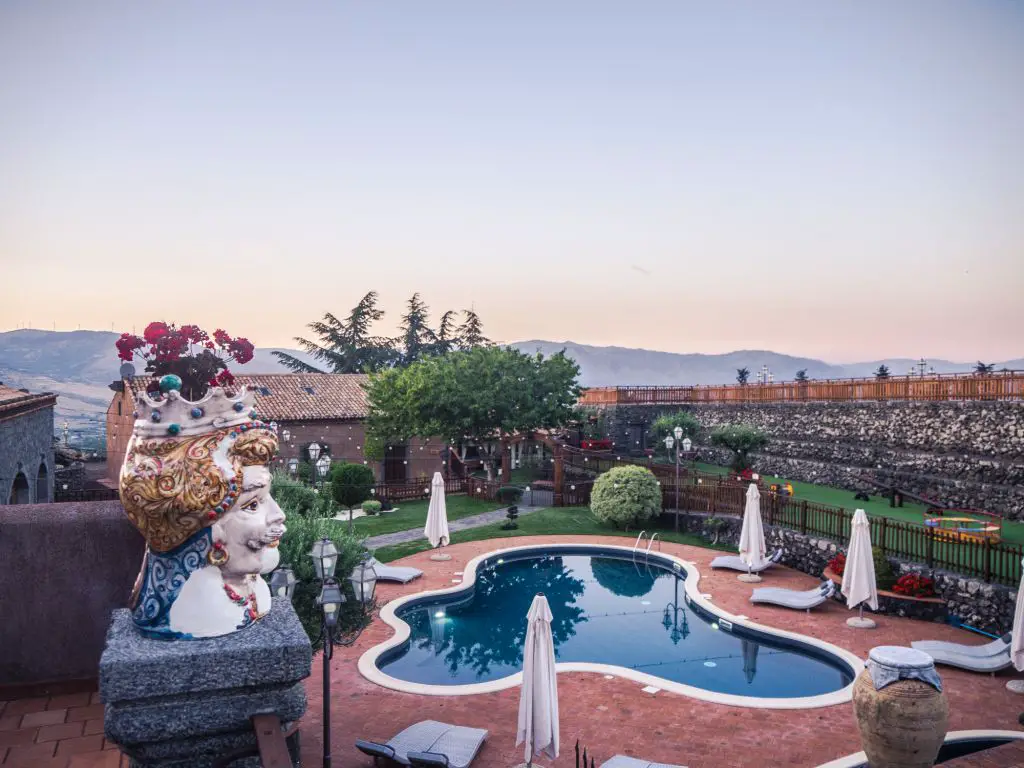
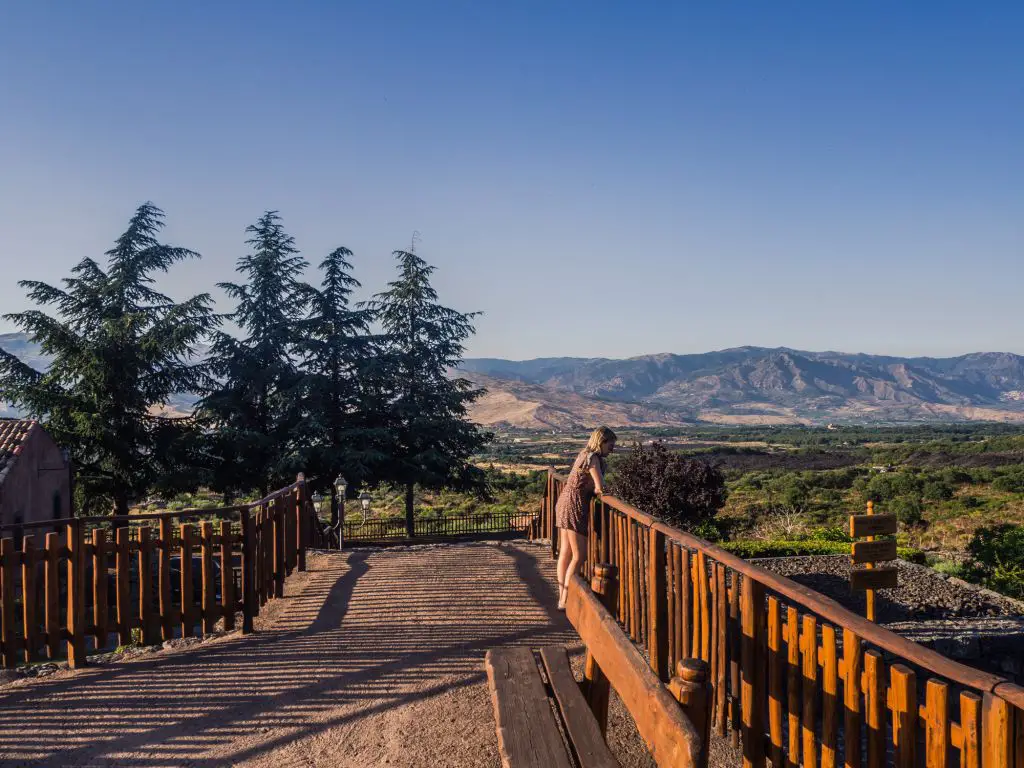
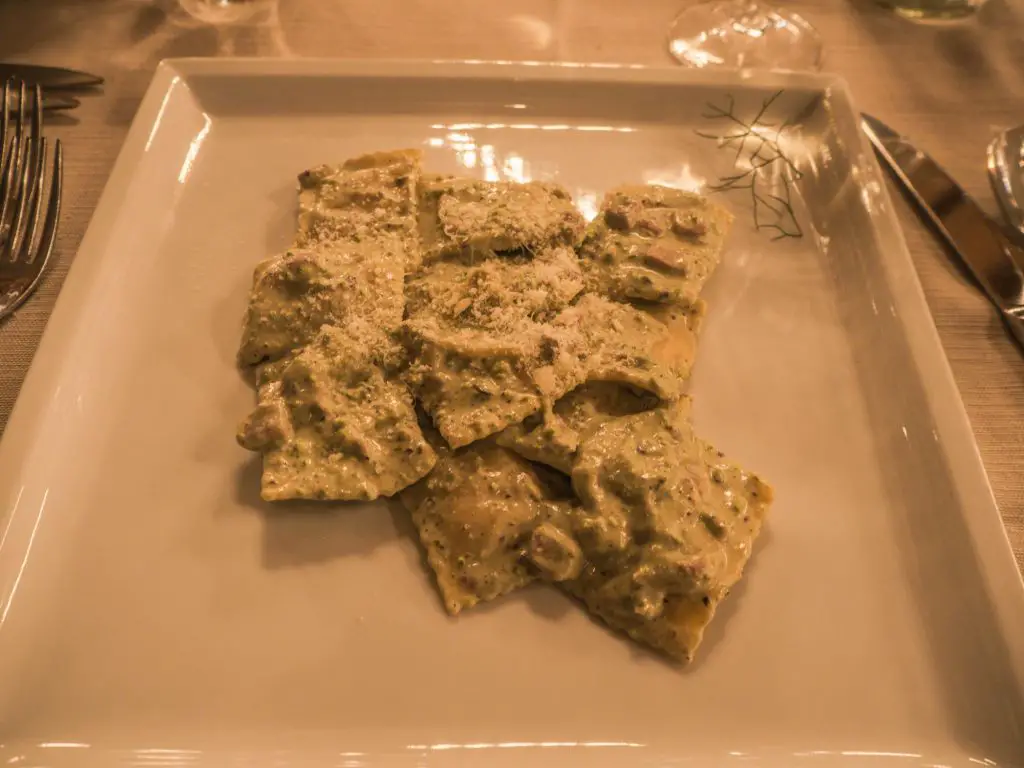
Make sure to visit the town of Bronte which is the capital of the Pistacchio region and eat the famous (and extremely delicious) pistacchio ravioli con speck. So delicious.
Day 6-7: Taormina
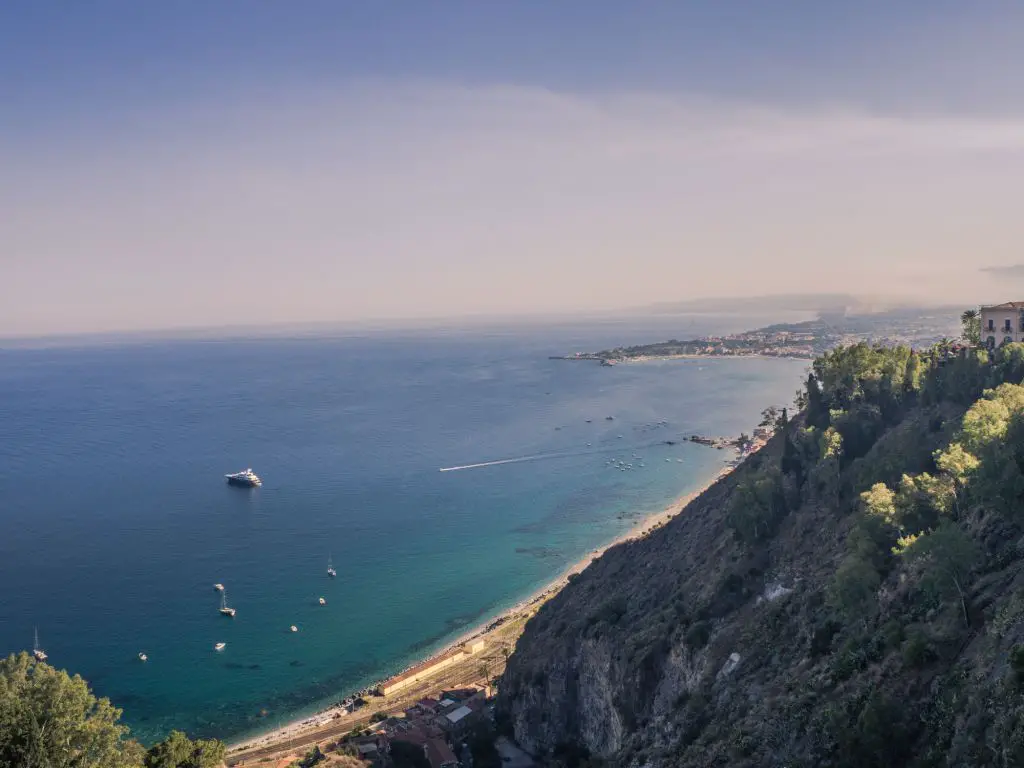
After Mount Etna, the logical next stop is to continue driving east ward to the coastal hilltop town of Taormina. This was one of my favorite stops without a doubt.
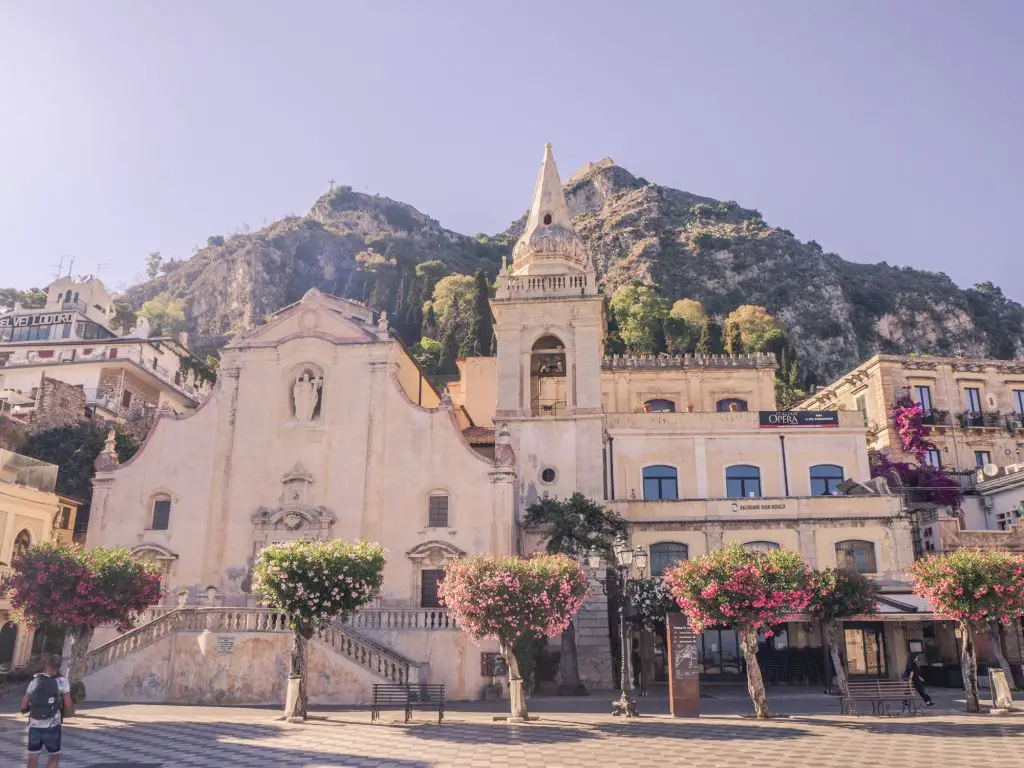
Taormina is the most upscale and the most frequented town in all of Sicily. It’s not hard to see why. It’s prime location on a hill overlooking the ocean, coupled with its picturesque buildings and cobble stone streets makes it a must visit. There are beaches, mountains to hike, Roman Ampitheatres, and all the cute Sicilian streets you can handle.
Staying at Villa Brittania
One of my favorite parts of visiting Taormina was our accommodation. We stayed at Villa Brittania which is a guesthouse run by this amazing young couple. It’s a house with only two rooms (so it’s never noisy) and each room has a balcony that has amazing views of the Mediterranean sea. They also made us breakfast every morning which was absolutely delightful. It’s perfectly located about 5 minutes from the old town.
They even went above and beyond when our rental car battery completely died. They were on the phone with the shoddy car rental company to sort out how I can get a replacement. Absolutely amazing place that I can highly recommend!
Exploring the old town of Taormina
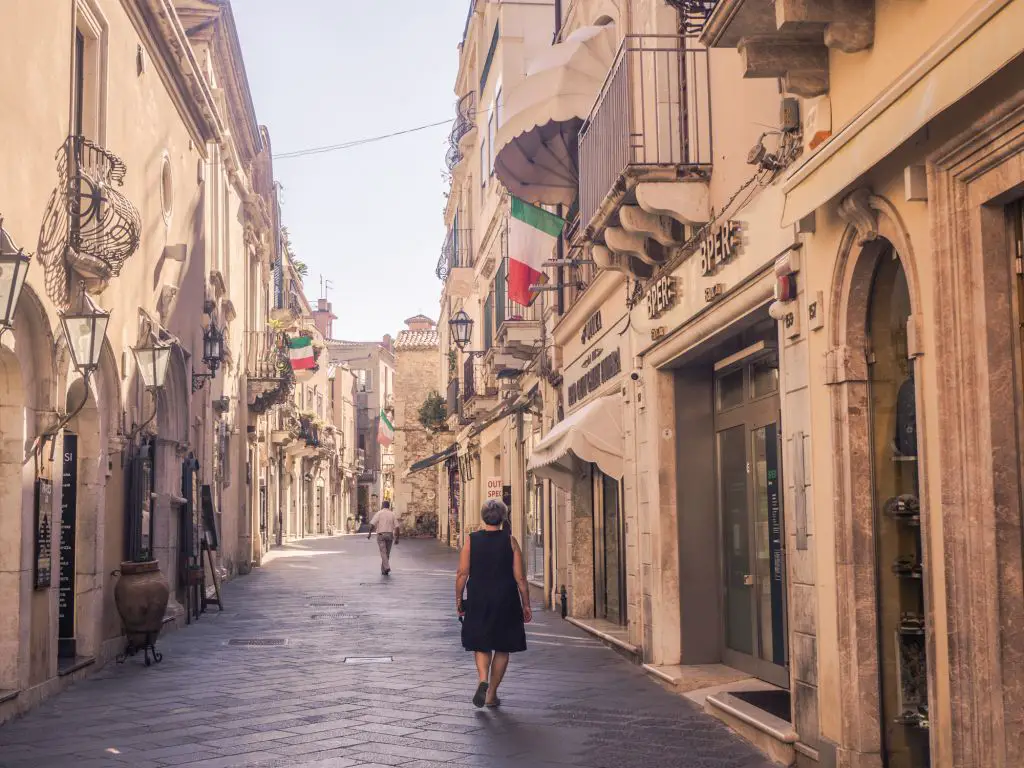
The village winds around for streets and lanes, arteries of the main road: Corso Umberto where top fashion boutiques alternate with jewelry shops and some souvenir stores. The corso, amicably called “the tub” by the inhabitants of Taormina, is crowded from June until the end of August, especially on weekends, by the locals and tourists alike.
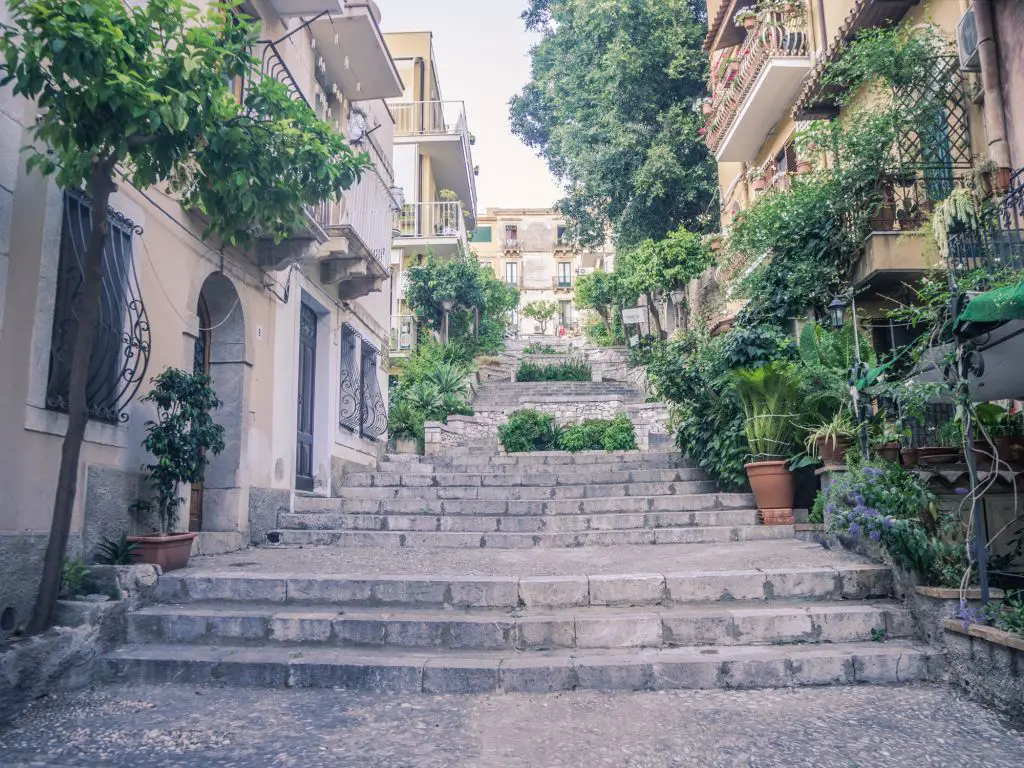
However, during the times of Coronavirus, it was pretty empty. Our hosts told us normally in July, the main street would be shoulder to shoulder packed but I didn’t see many people at all.
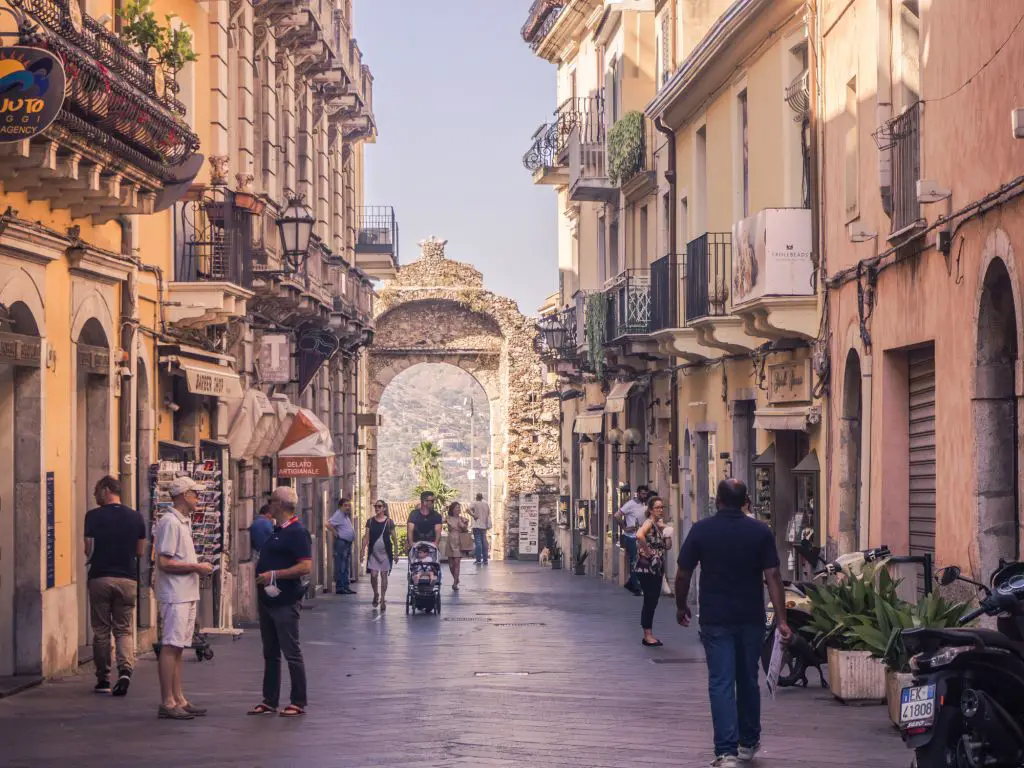
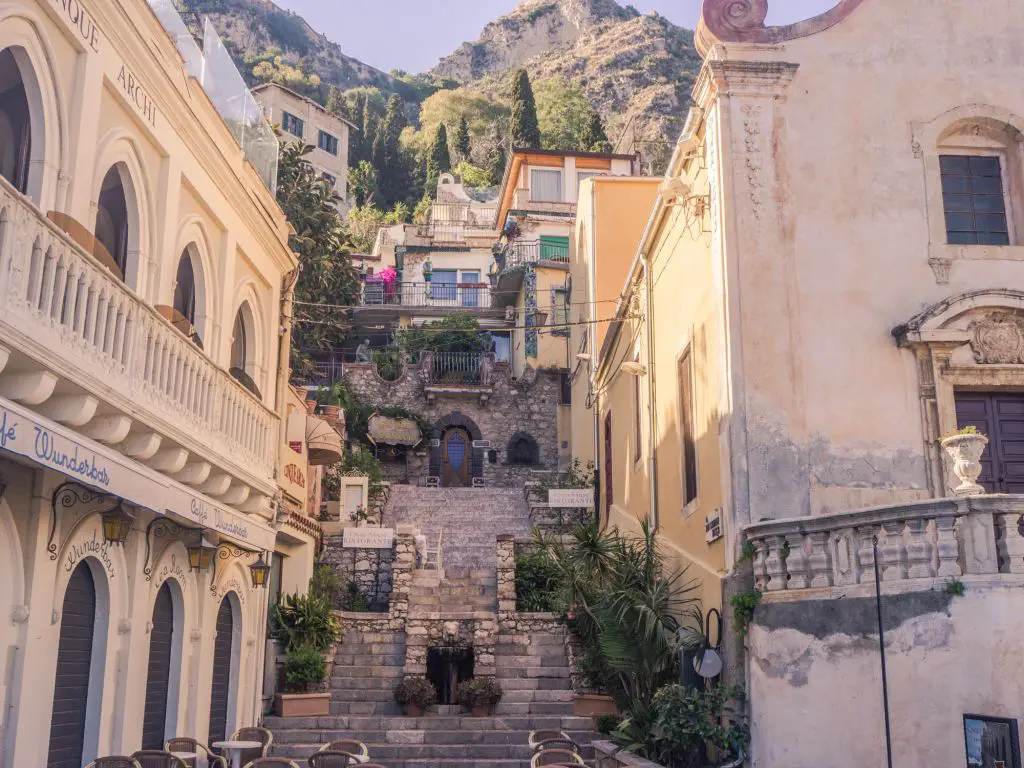
The walk can start at Porta Messina (the arch that looks toward the north, thence Messina) or Porta Catania (the second arc that looks to the south).
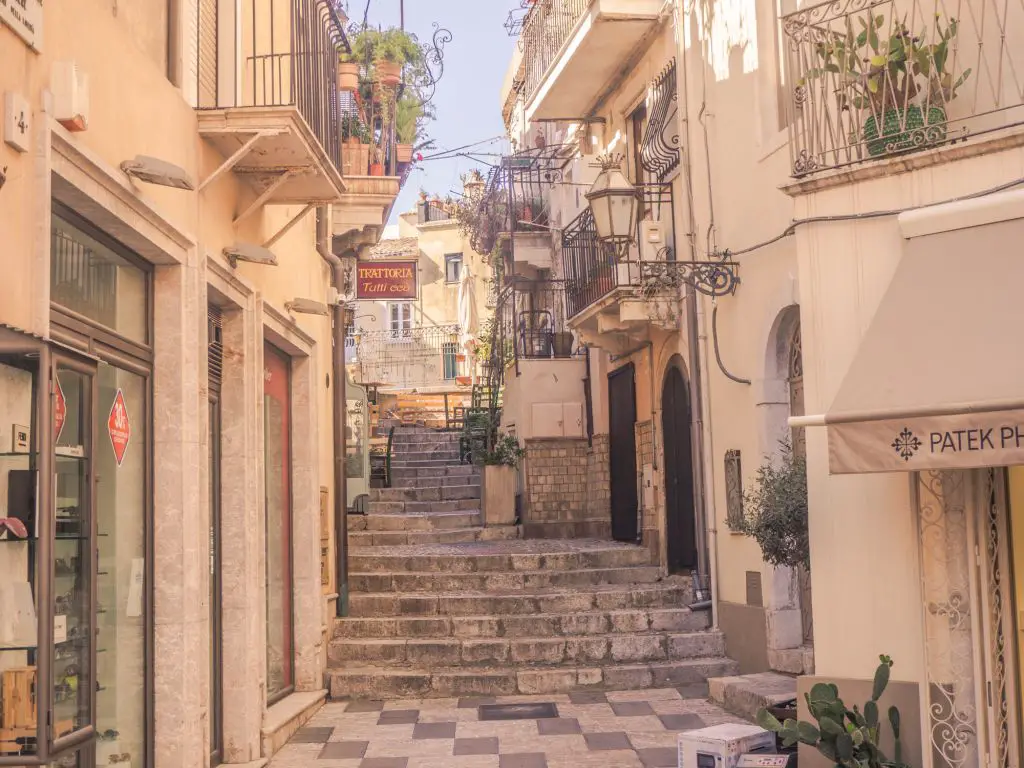
To the right and left along the course, stairs … everywhere. Among which, the narrow alley, the name speaks for itself, flowering balconies and plants and lush colorful flowers housed in heads of Moors, vases in the shape of heads with strong Arab colors and faces of dark colors, in ceramic or earthenware, colored terraces of typical ceramics, the very beautiful Piazza IX Aprile of which sight is worth the slalom, or way of the Cross, as I call it, of the corso also on 15 August.
Visit Isola Bella
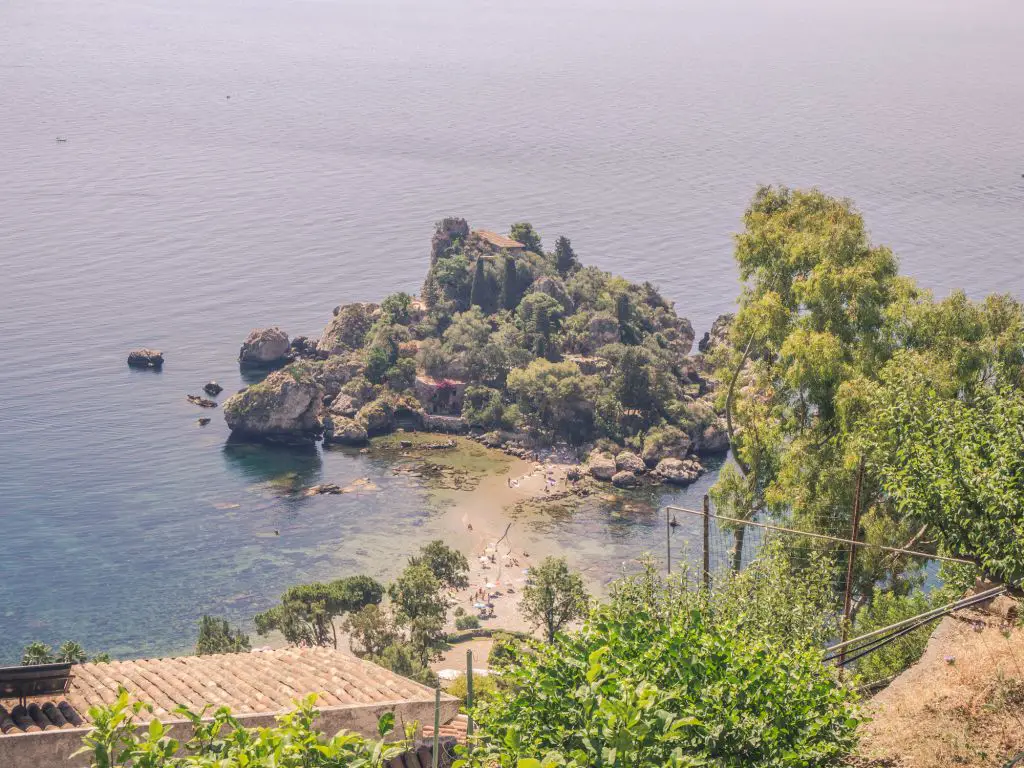
Another not to be missed sight is the Beautiful Island (translation for Isola Bella). It’s a small island that is attached to the mainland by a sandbar. It’s a popular spot for Italians to swim and sunbath and a postcard worthy place for everyone else.
From Taormina, you can follow the stairs from the old town and walk down towards the ocean. You will be able to see Isola Bella as you walk down. Alternatively, you can take the city’s funicular which runs from the Taormina old town to the sea-level. It’s €3 and offers great views of the surrounding.
I would recommend hiking down to Isola Bella, and then taking the cable car back up. Especially during the summer months, you will not want to attempt the climb back up to Taormina when it’s 35 degrees out. Even our guesthouse host told us to not be crazy and take the cable car!
I thought Isola Bella is more beautiful to view from afar. Once you get to the ocean, the beach is only rocks and is not that pretty. However, from an aerial perspective, it really looks like a post-card worthy destination.
Visit the Greek Amphitheatre
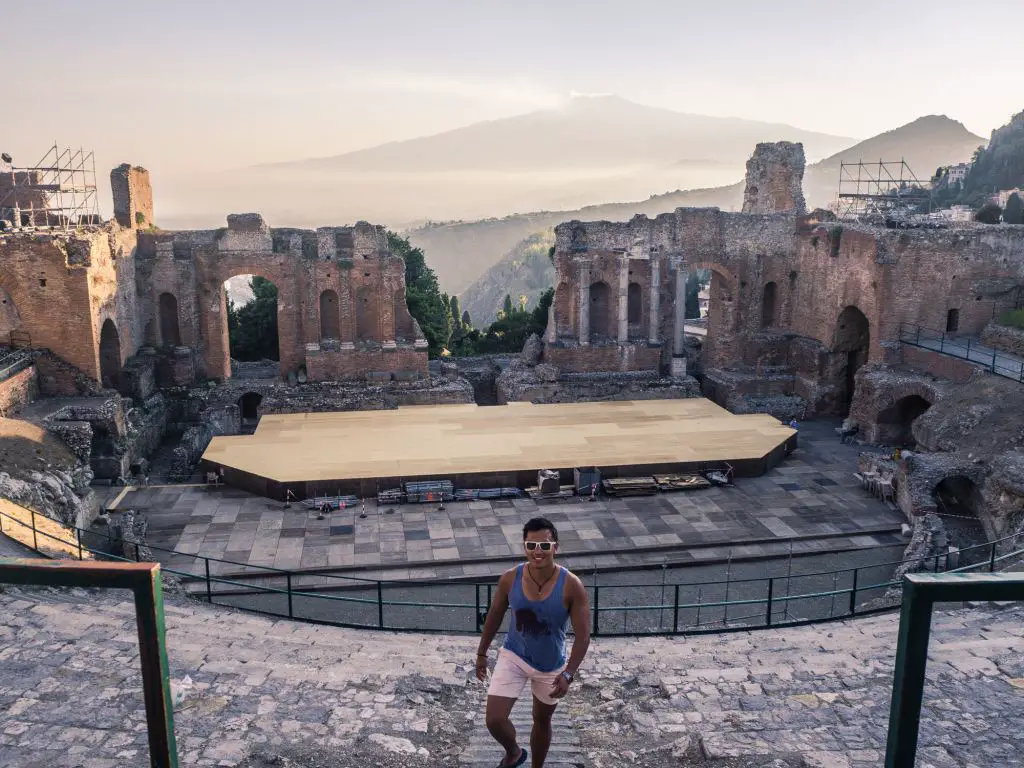
A centerpiece of the city, the ancient amphitheater of Taormina dates back to the 3rd century BC. It was created by the Ancient Greeks before being destroyed and re-constructed by the Romans to hold gladitorial bouts. Nowadays, this semi-circular amphitheatre is a combination of ruins and restored facades but all around beautiful. Nowadays, the theatre is still used as a concert venue hosting numerous opera singers, as well as bands like Pink Floyd. What a ridiculous concert that would be.
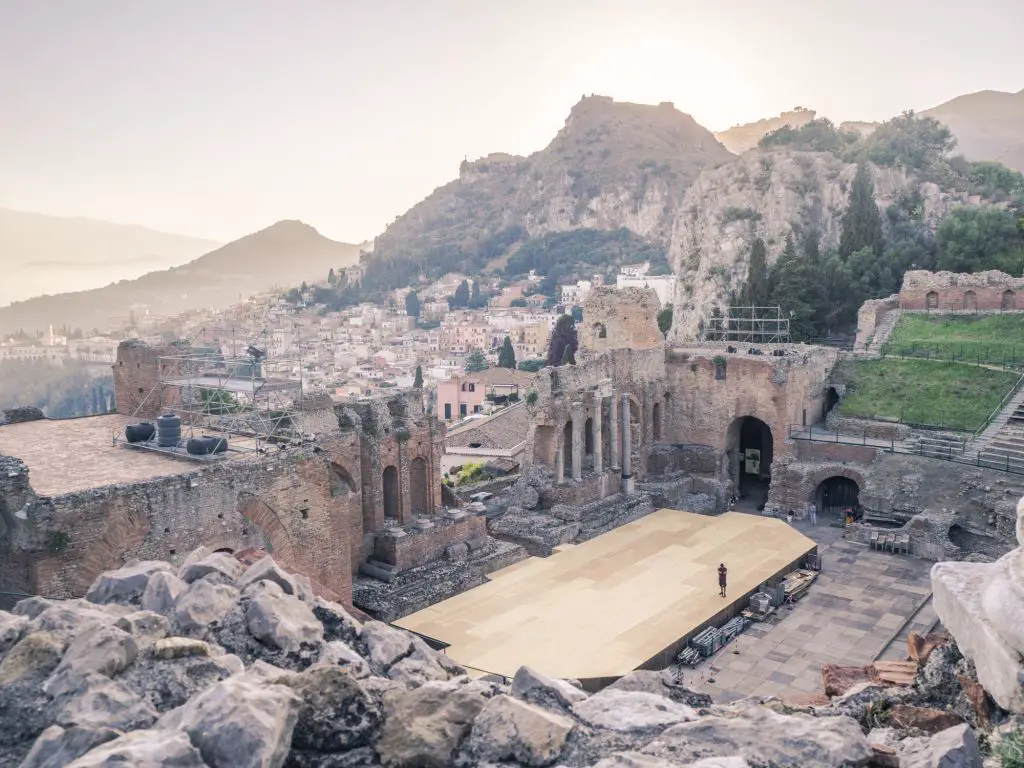
The Greco Teatro is an absolute must visit sight in Taormina. It’s located about a 10 minute walk from the old town so it can easily be visited as part of a day trip as well.
The entrance is €10 and is well worth the price.
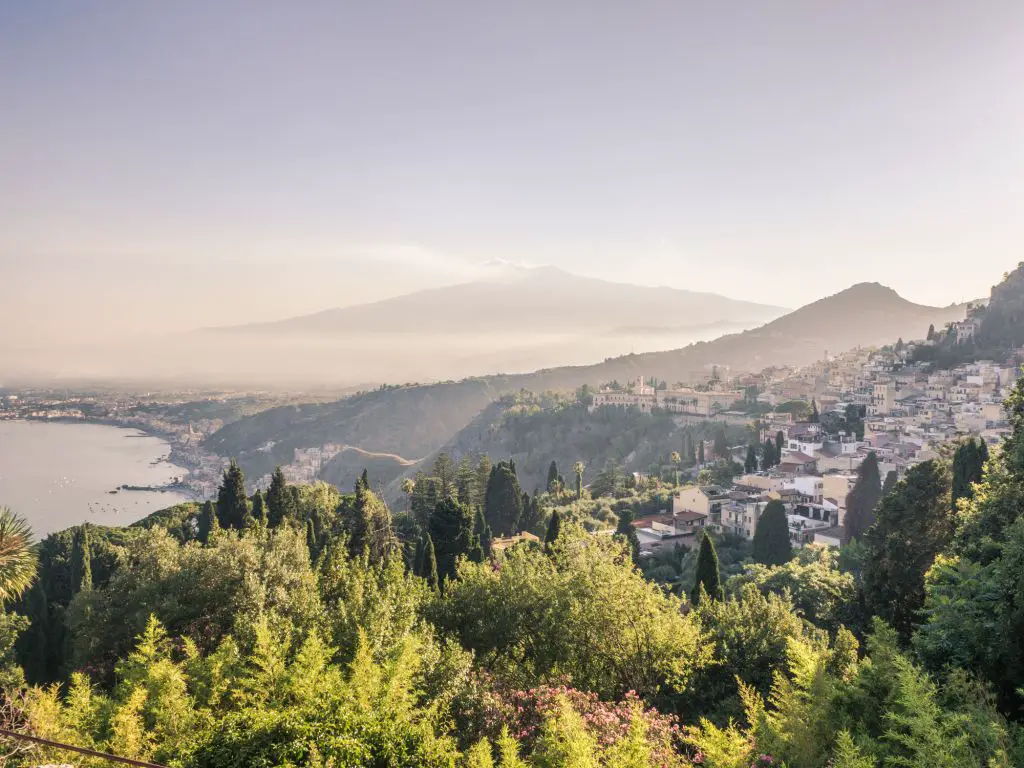
We were recommended to come here before sunset and what a great decision that was. The temperature was cooling down and the warm hues of the sunset were illuminating the beautiful backdrop that the theatre rests on. On clear days, you can see Mount Etna in the background which makes for some of the best photos you can get.
Coming here during COVID times was also a treat as we were pretty much the only people here to watch the sunset.
Day 8-9: Ragusa, Siracusa, Modica
After Taormina it was time to drive south towards the famous and beautiful towns of Siracusa, Ragusa, and Modica.
Visiting Siracusa (Syracuse)
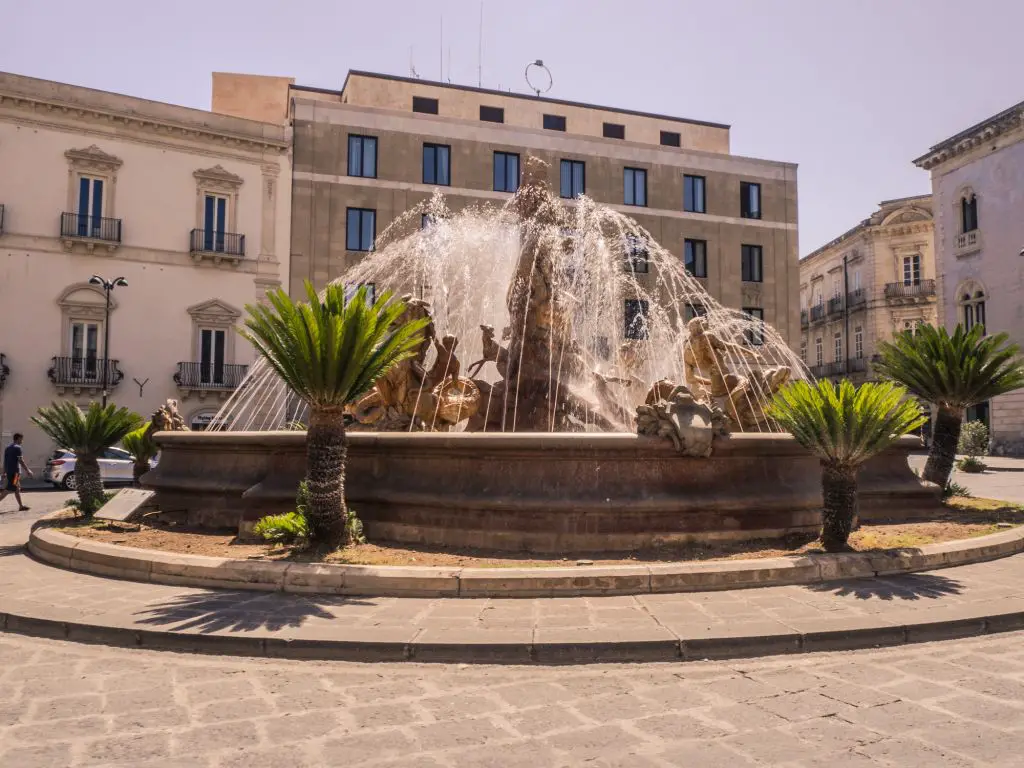
The first stop of the day is to visit the ancient town of Siracusa, home of Archimedes. This coastal town is well known for its absolutely beautiful old town and historical sights that span numerous civilizations.
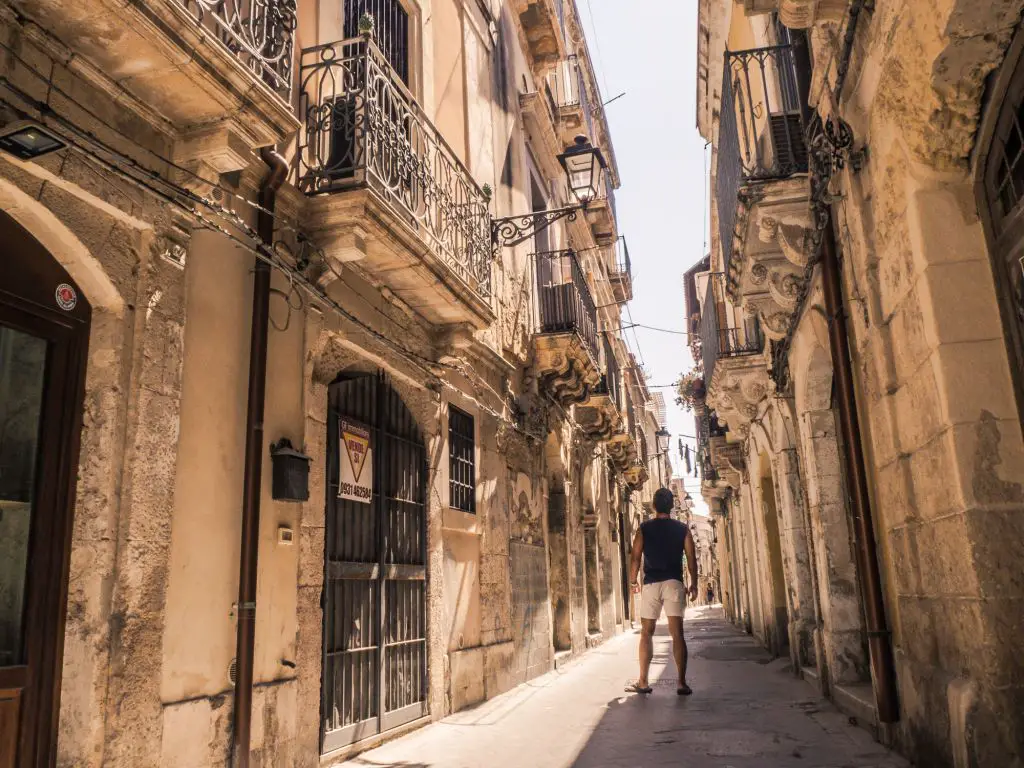
The old town, also known as Ortigia, is aptly connected to the mainland by a small bridge. If you only have a day or two here, skip the mainland and focus your entire time on Ortigia. This is the most beautiful and famous part of the town.
There’s so much to do and see here that a half day is certainly not enough. For starters, visit the Piazza Duomo which is adorned with beautiful cathedrals, palaces, temples, and impeccable cobblestone streets. From here, walk to the Arethusa fountain which is one of the more impressive fountains in a stable of amazing fountains that can be found in Italy.
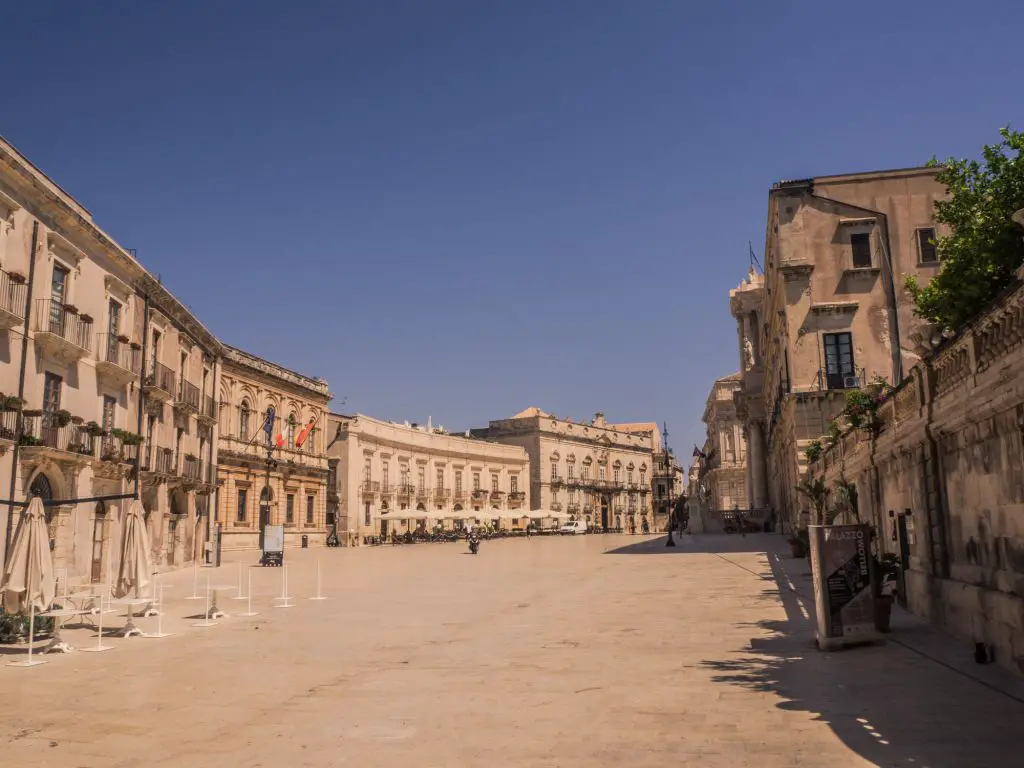
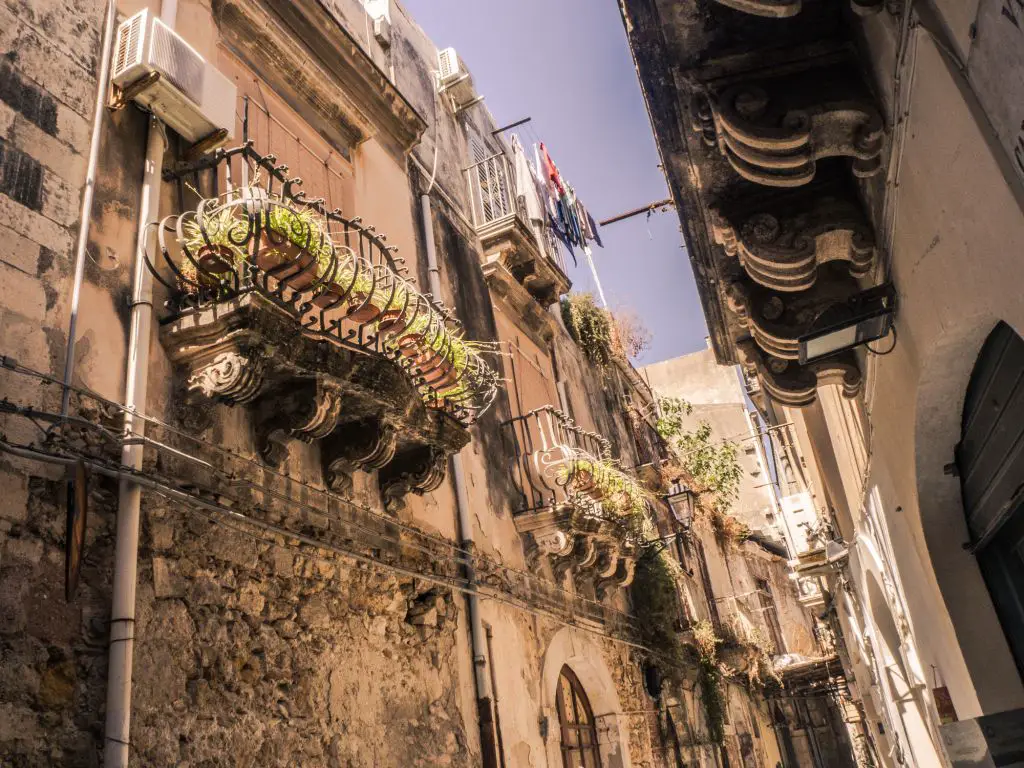

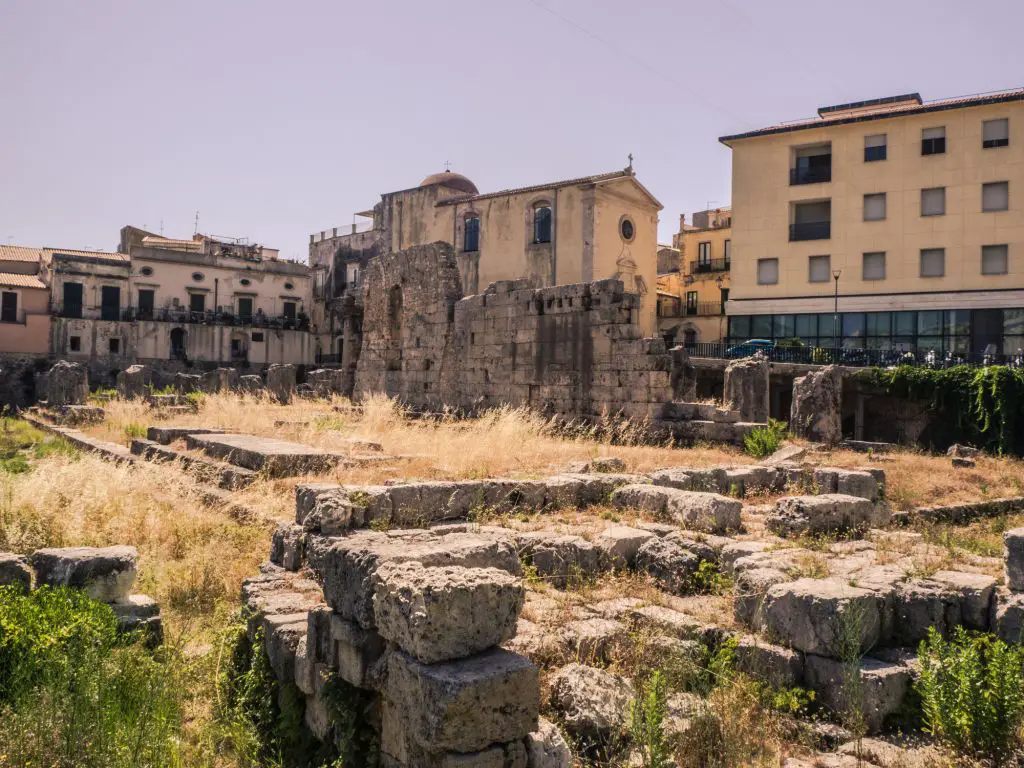
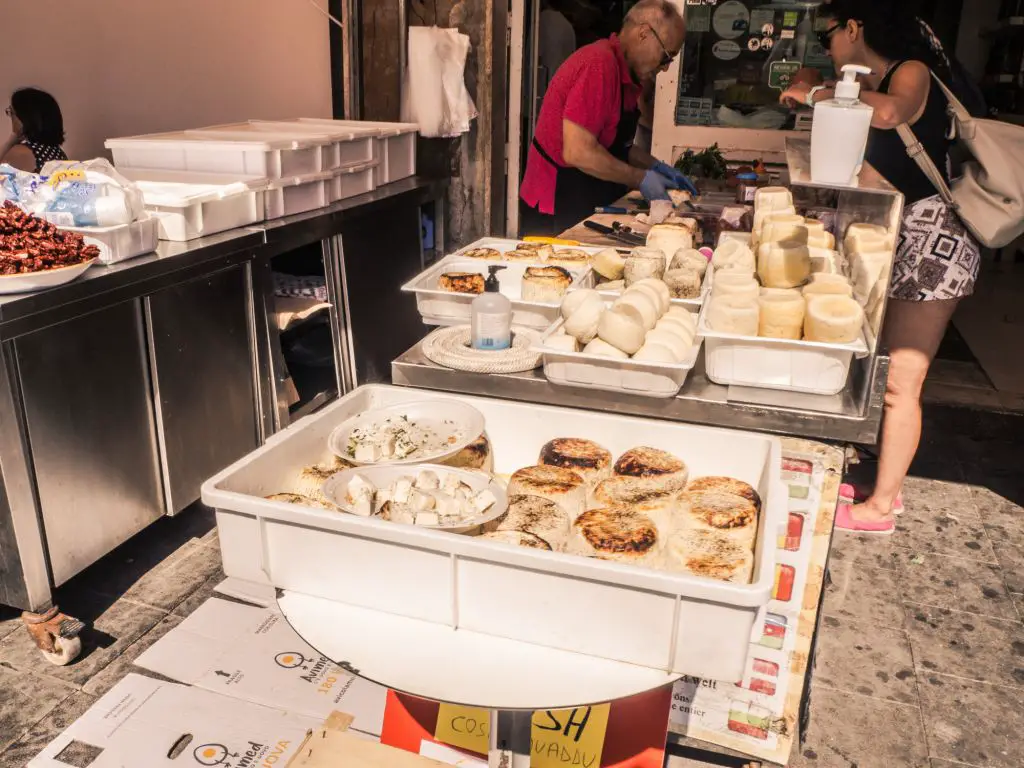
Finally, make sure to absolutely visit the seafood markets at the north end of the town. This market has fresh seafood for sale, fruits, crafts and more. Specifically, do not leave Siracusa without visiting the legendary Caseificio Borderi which is known for their amazing sandwiches as well as the famous tricotta cheese.

The guy who works here is an absolute legend in these parts. It’s clear he has been mastering his craft for some time. He also seems to know everyone in town as he is always greeting people while cutting mouthwatering cheese or making big sandwiches.
Make sure to try the cheese here which he generously gives out samples of. Afterwards, get a big sandwich and prepare to be in heaven.
Ragusa Town
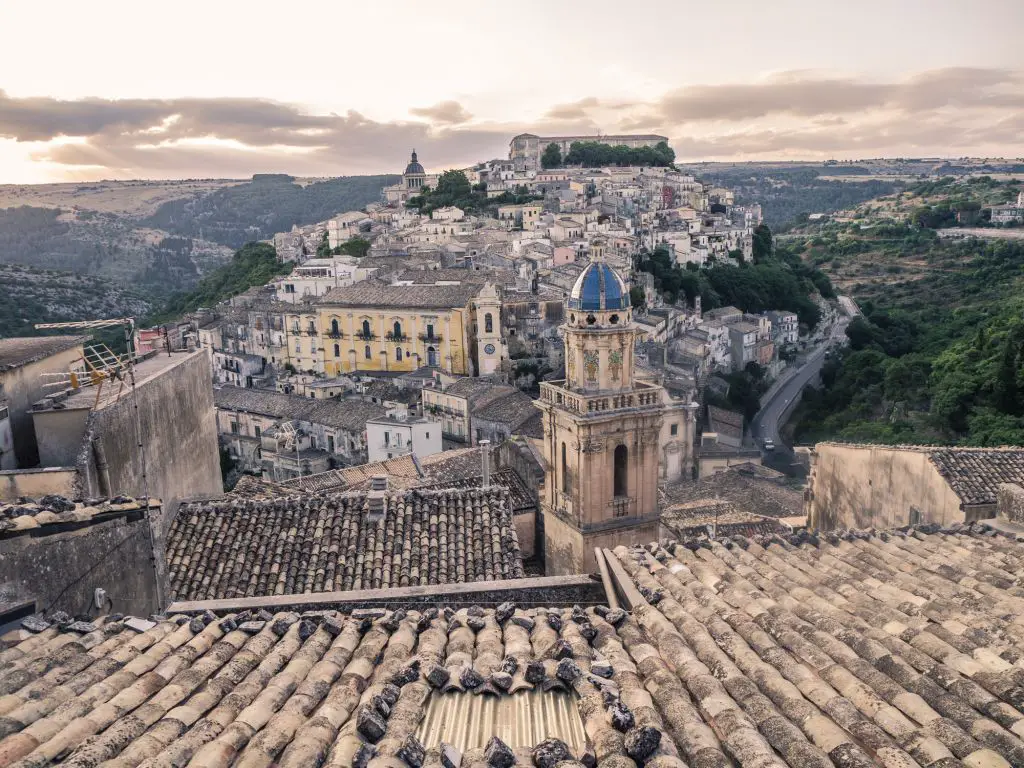
After a strong earthquake destroyed most of Sicily in 1693, the Baroque style architecture that Sicily is known for soon after emerged. The town of Ragusa was built on a grid plan after the earthquake and later readapted into a medieval street layout. Today Ragusa features two distinct sections, Ragusa Ibla below and the Baroque town of Ragusa Superiore above. One of the UNESCO-listed towns of south-eastern Sicily, Ragusa features an incredible archeological museum, charming shops, restaurants, and accommodations, as well as picturesque lanes.

Ragusa really reminds me of Matera in Puglia even though the architecture of Matera predates Ragusa by a long time. Both towns are placed on a cliff surrounded by trees. The views close by and afar are just stunning in both places.
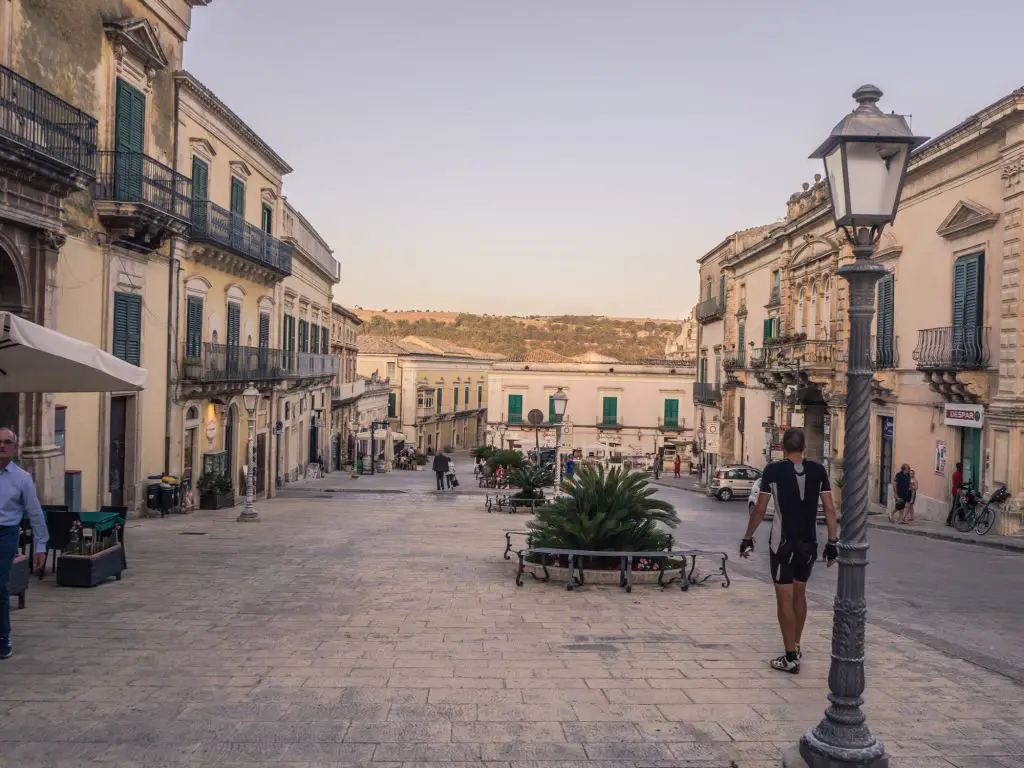
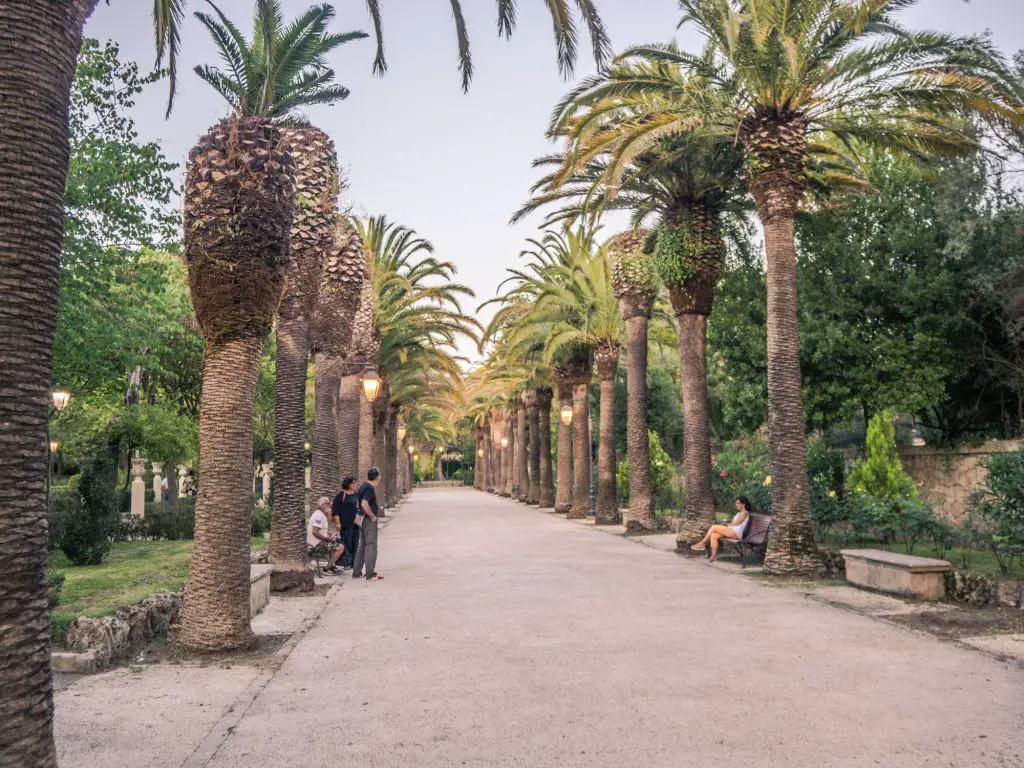
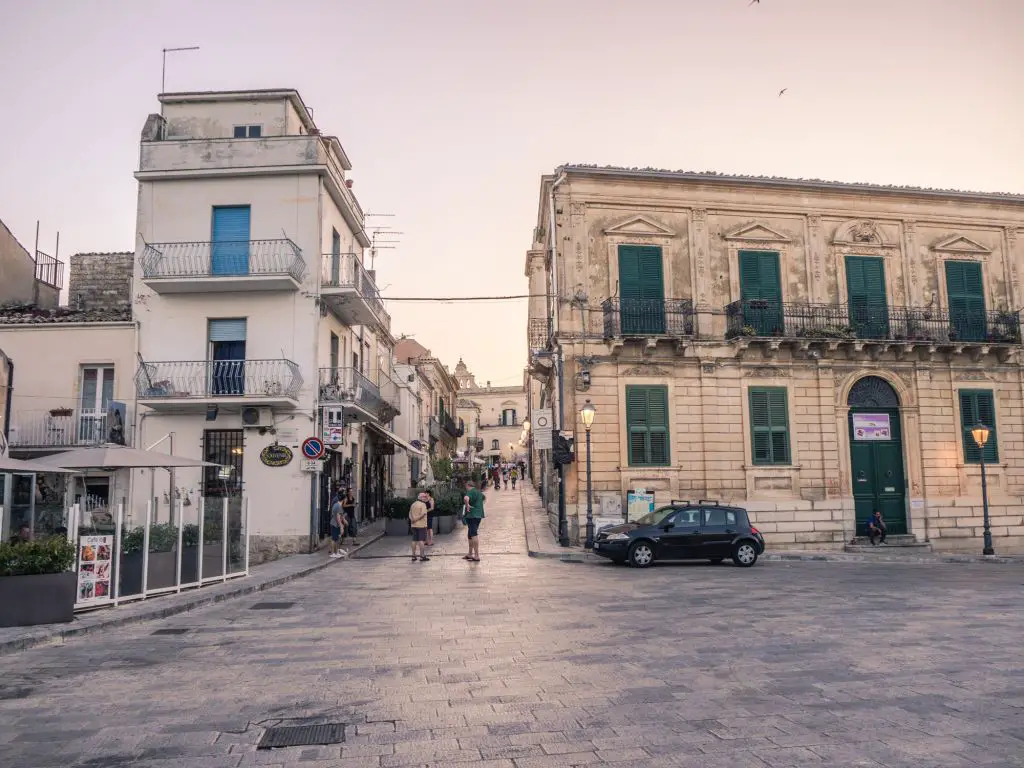
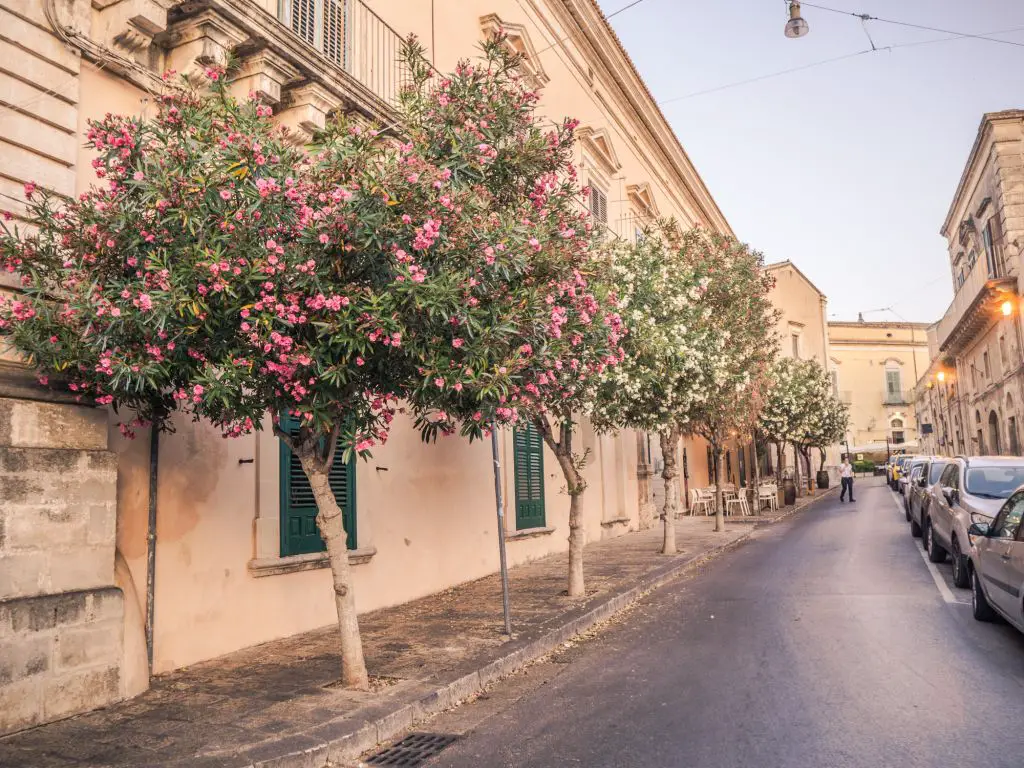
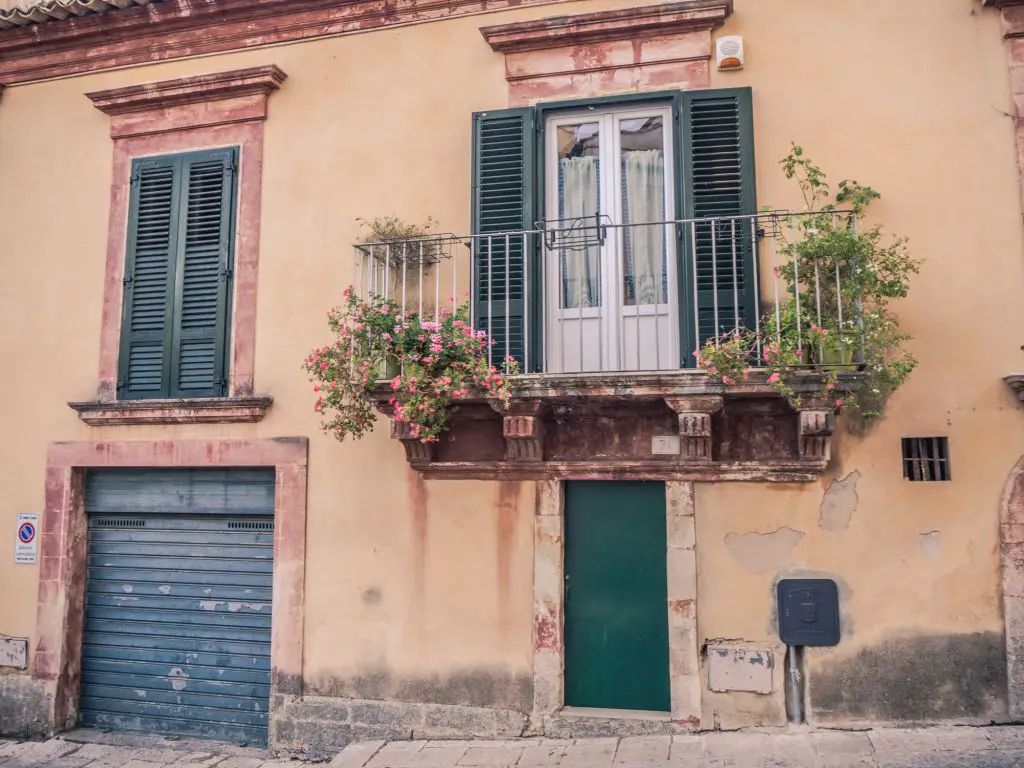
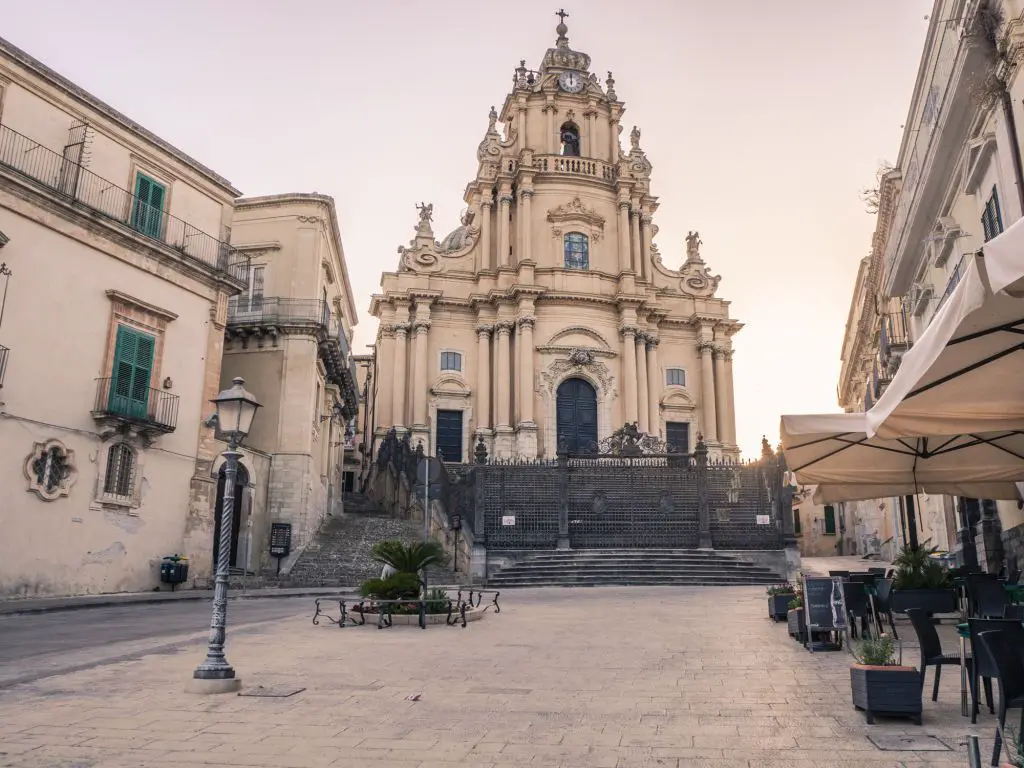
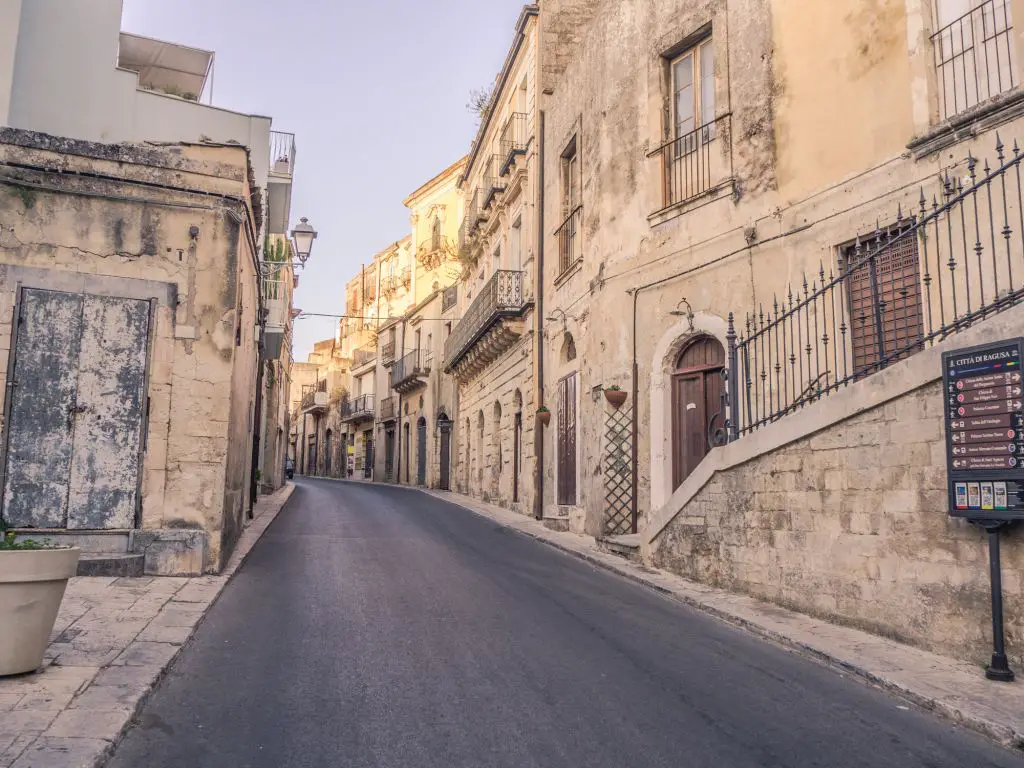
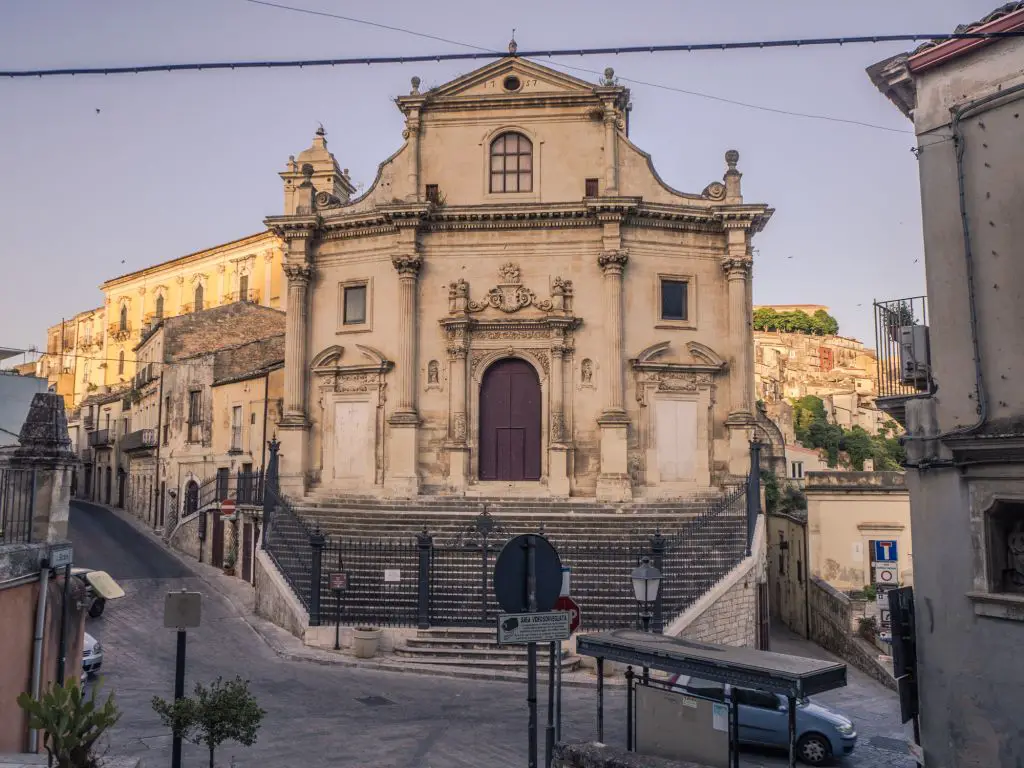
We stayed at an apartment here that without a doubt had the best views of the town. It is located right in between the old town and baroque town with unobstructed views of the old town. Would highly recommend staying here.

Modica Town
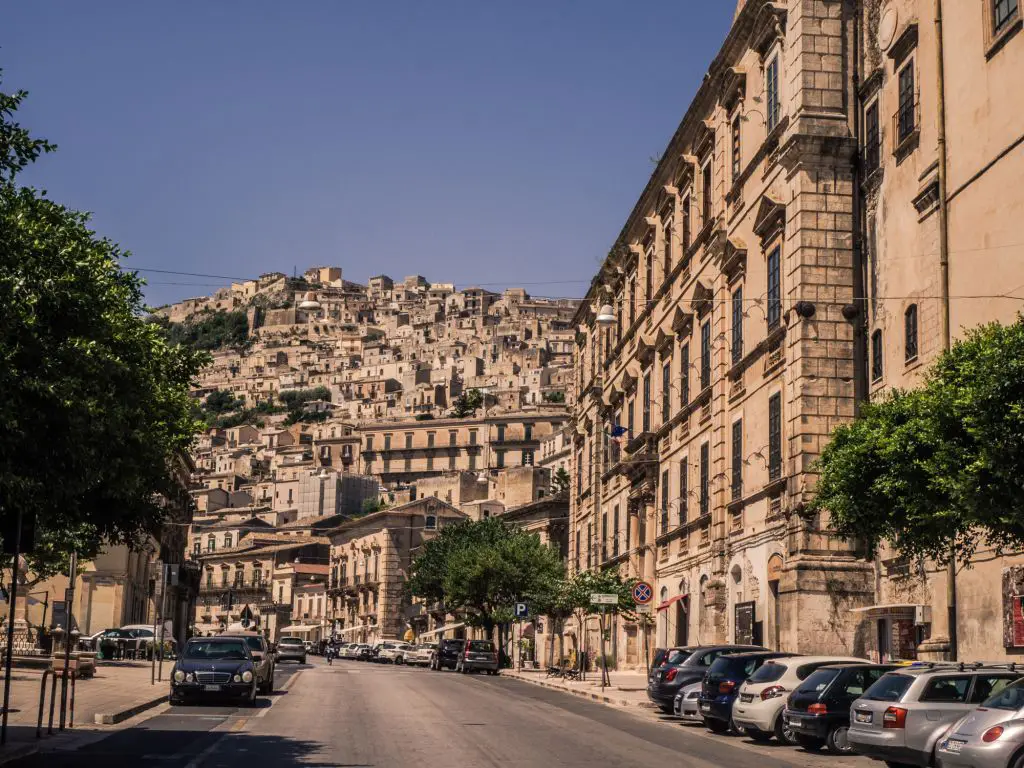
Modica is another baroque town rebuilt after the earthquake that is known for its chocolate. There are many places where you can go in for a chocolate tasting. Funny enough, I didn’t even know this fact until I left the town.
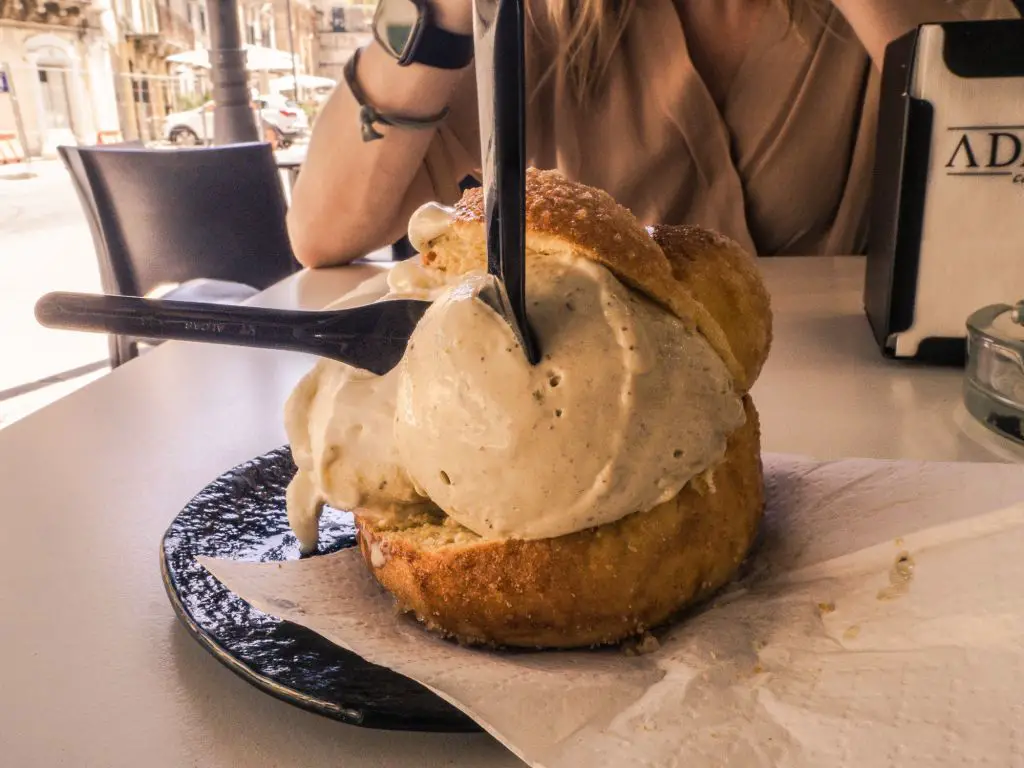
Being it was during COVID times, the town was very empty. Perhaps it also had to do with the fact we arrived around 2pm where it was 35 degrees out and everyone was seeking shelter. We did have some of the best gelato of our trip here however, among the many other gelato sandwiches we had.
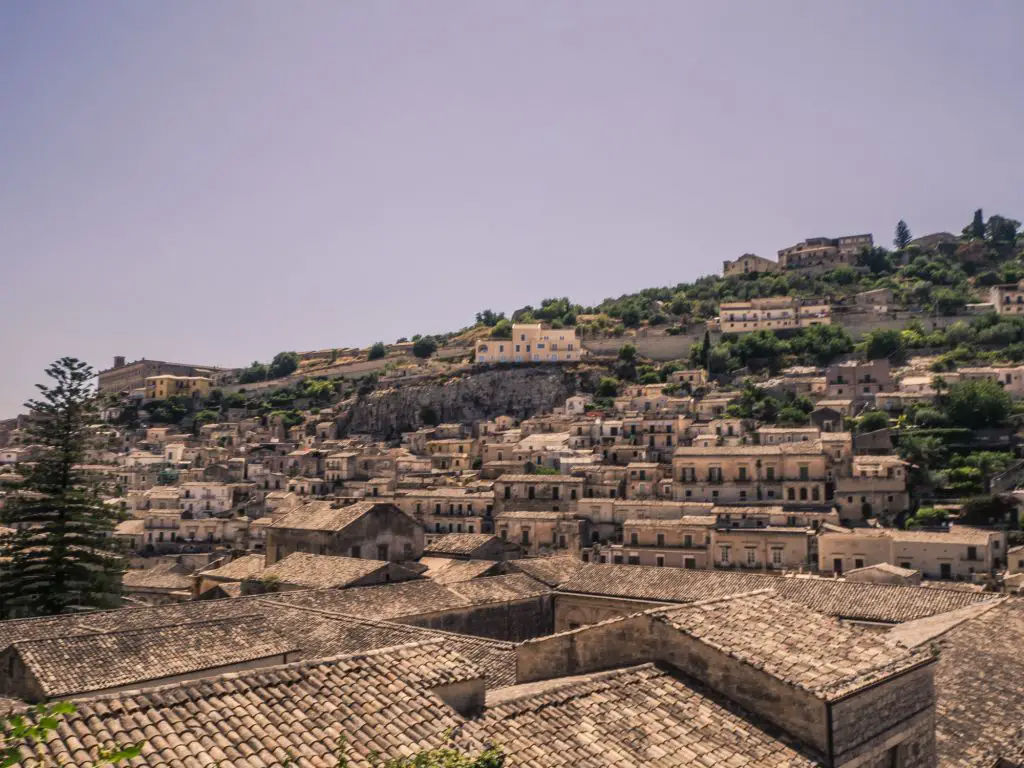
A visit to the Cathedral of San Giorgio is an absolute must however. Located about half way between the base of the town and the peak, this church was absolutely stunning to look at.
I’d also recommend hiking to the top of the town for panoramic views of the town.
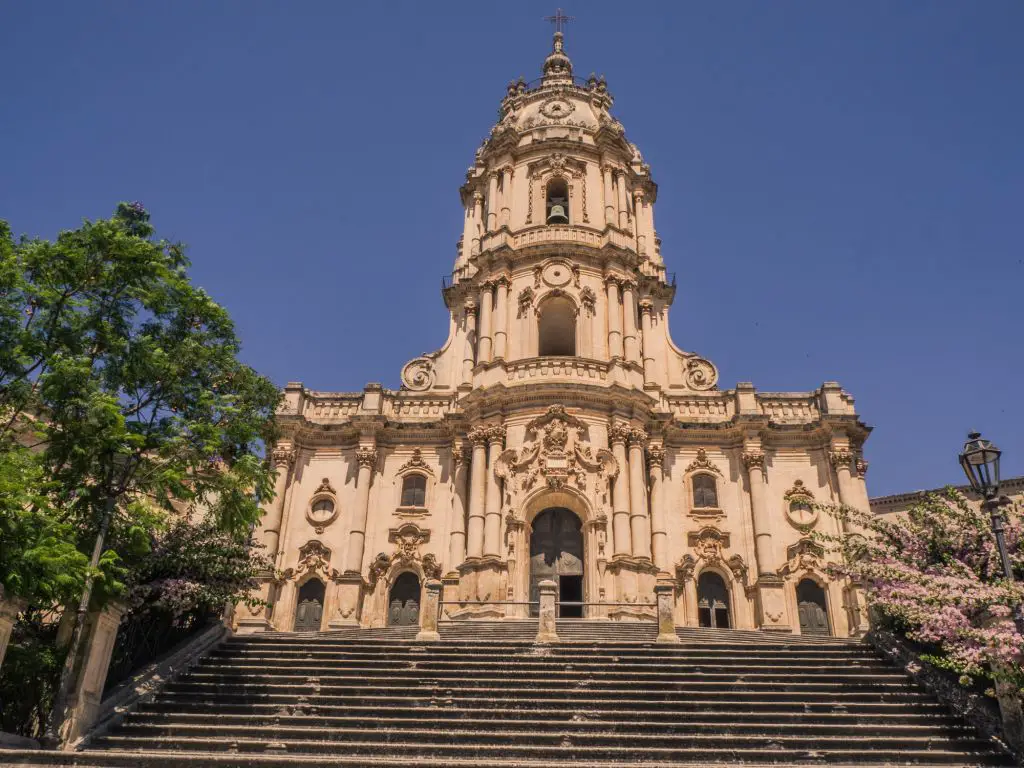
The town is very similar to Ragusa as far as architecture, colors, and style. I am very happy to have stayed in Ragusa however!
Day by Day breakdown of my Sicily Itinerary
Here is a day by day breakdown of the Sicily itinerary. It’s pretty involved each day so absolutely feel free to spread it out over more days if you have the time!
Day 1: Land in Palermo, drive to Erice to spend the night
Day 2: Drive to Palermo for the day, explore Monreale in the afternoon, stay in Palermo
Day 3: Drive to Cefalu in the morning
Day 4: Full day in Cefalu
Day 5: Drive towards Mount Etna, explore the wine country surrounding it
Day 6: Morning hike at Mount Etna, Taormina in the afternoon
Day 7: Full day in Taormina
Day 8: Drive to Syracuse for the morning/afternoon, drive to Ragusa for the afternoon/evening
Day 9: Explore Modica and Ragusa
Day 10: Fly home from Catania



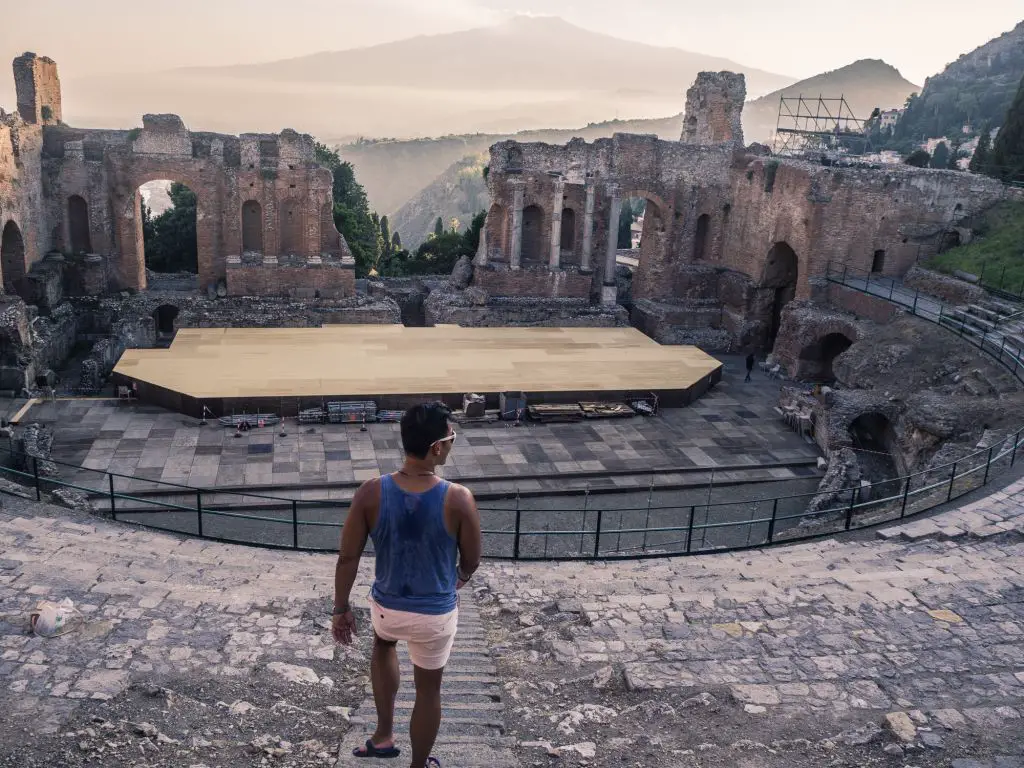

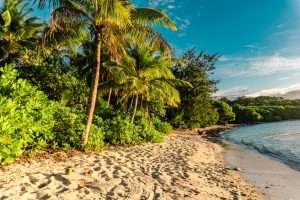
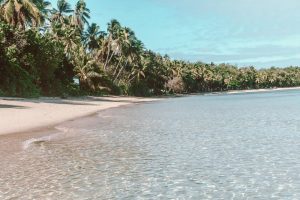

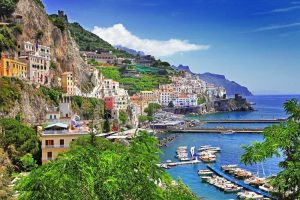
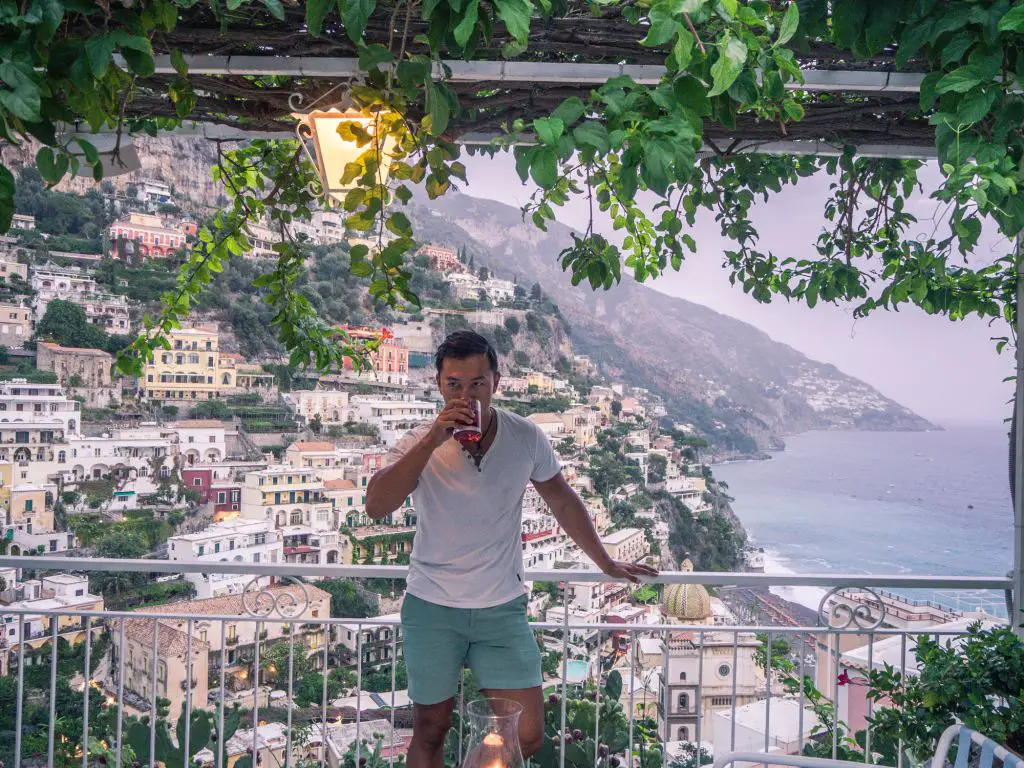
great post! what airbnb did you stay at in Ragusa?
Hi Julie, just found it here! it’s called Iblachiara
Gracie!!
Great Trip. and good tipps:) where did you stay around Mount Etna? It looks great
At the Etna Quota Mille!
Ah funny. This is what I was actually thinking about. Thank you!